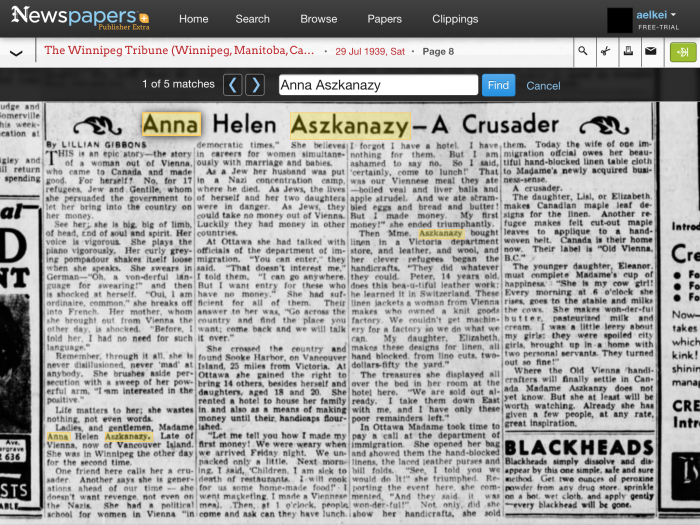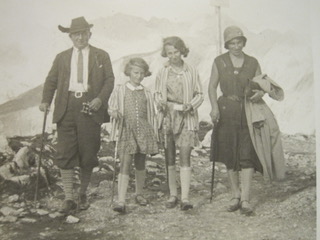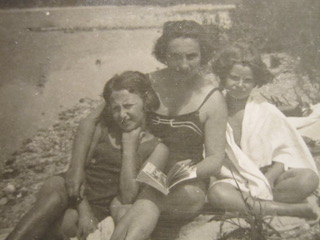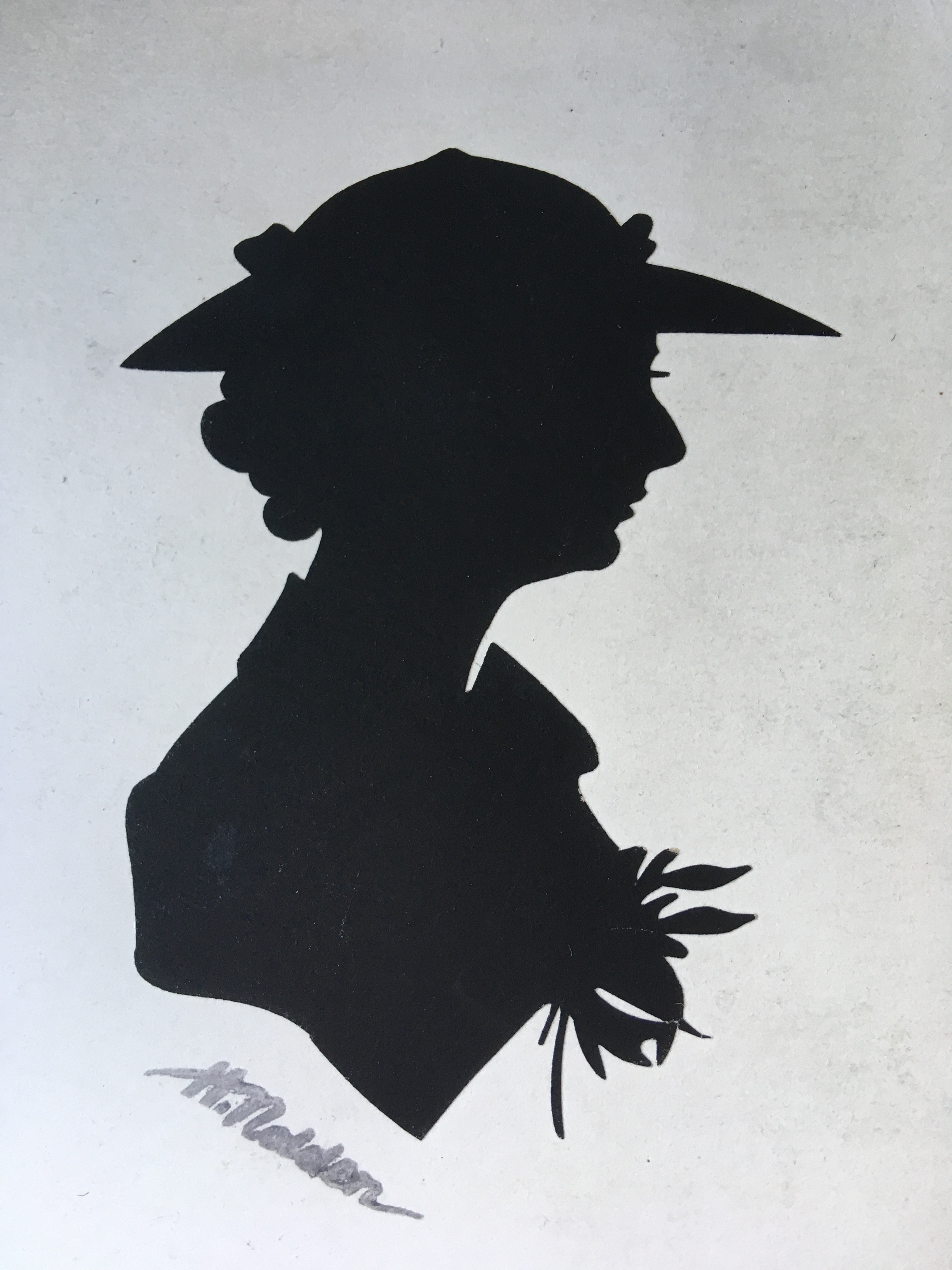Emily Jane Rabey Holloway: Part 3: Peternal and John’s family and work life in Brightwell and Wallingford, Oxfordshire-Berkshire, 1910-1922.
John (Jack) was welcomed as the new head of the Brightwell Church of England School in April 1910, by the outgoing head teacher ( and former colleague), in his departing speech, noted in the local newspaper.
Teacher’s salaries were not high. As the head teacher, Jack and Pet and their children would have lived in quarters supplied by the school, the School House. As well as administration and teaching duties, Jack was also involved in the sports department. He was a keen footballer and had been a founding member of Porthleven’s football club. And he seems to have continued involvement in football (soccer) in Brightwell. There was also cricket and community and church activities and a busy family. Life in Brightwell for Jack and Pet and children was full!
https://www.oxfordshirehistory.org.uk/public/school/archives/teaching/s216_1_pl1_1scale.jpg
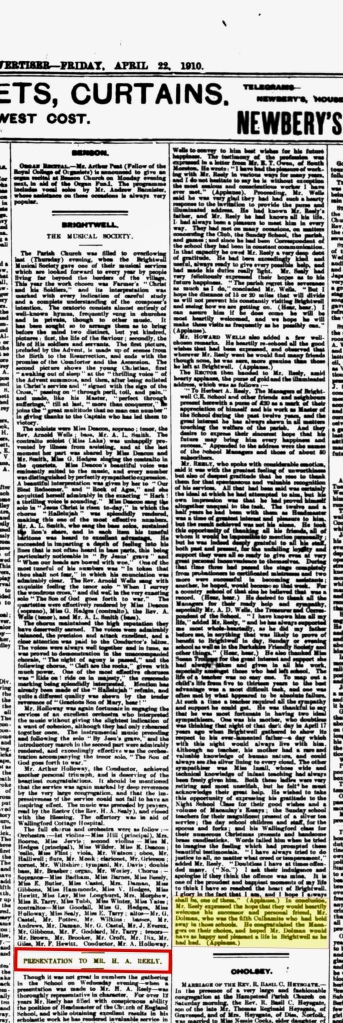
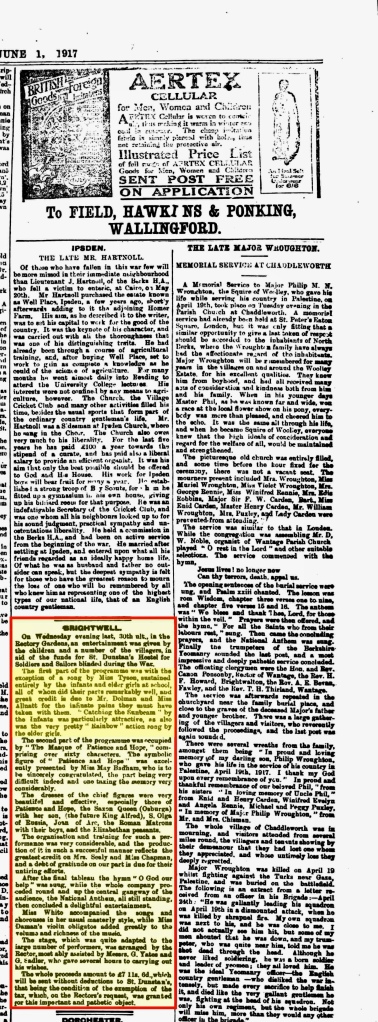
Young Claude and his sisters did their early years of education at Wallingford Grammar school. Claude, my father, at age ten, in 1916, wrote a couple of exams and was awarded both a scholarship to continue at Wallingford Grammar School and a “place” at Christ’s Hospital boarding school for boys. The latter was chosen for his further schooling. Christ’s Hospital is a boarding school for boys ( and girls) founded in 1552 by young King Edward VI to care for poor children in London.(Edward VI, son of King Henry VIII, began his reign at age nine in 1547, and he only lived to age 16, but made significant contributions during his reign). The facility became a school for boys and girls for several centuries in London. It moved to spacious new grounds in Horsham, Sussex in 1912, for boys and for girls in Hertford. At age 10, young Claude left his parents and his two younger sisters, Mary (8) and Betty (5) and became a boarding student. https://en.wikipedia.org/wiki/Christ’s_Hospital

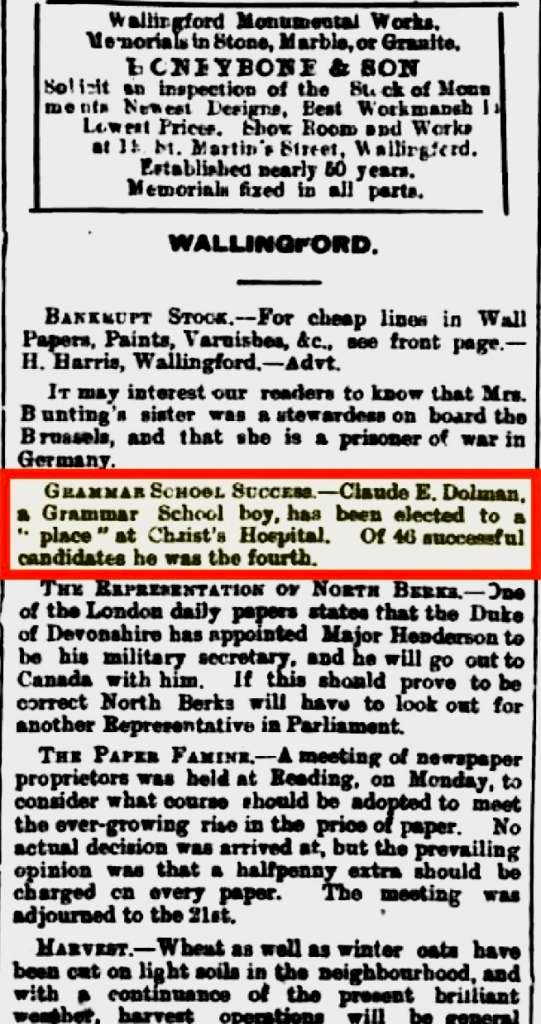
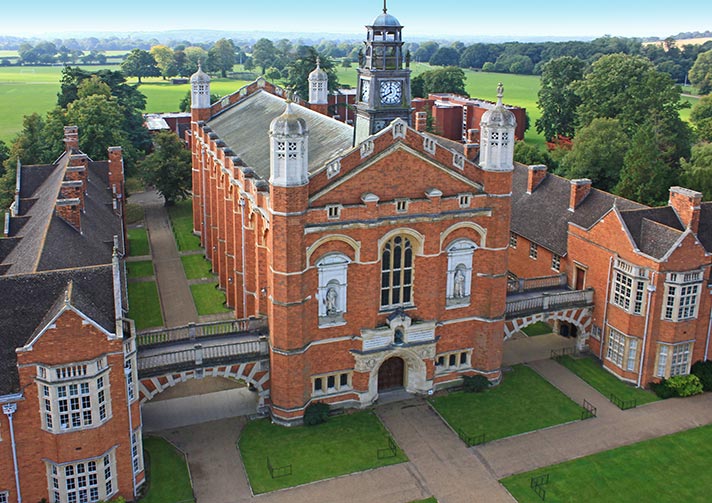
I know my father had good memories of “ Housey” as it was called affectionately, but I’m certain it was also not an easy experience. Typically in British boarding schools of those days, the new boys were “initiated” by the older boys with various brutal traditions ( the same ones the older boys had suffered themselves a few years previously).
On a personal note, when my husband and I and our two elder sons (ages 1 and 3), headed off to SE Asia for work with an NGO, there was the possibility of our sons having to go to boarding school. When i told my Dad about that they may need to go at age eight, he said he went at ten years of age , and that was too young! So, that was telling.
However, in the midst of the challenges, he excelled academically and was awarded the honoured title of Senior Grecian in his graduating class; he was also involved in music ( I play his violin!) and sports – we have photos….curled up scrolls which are very wide black and white photos of the whole school (600+ students), and we used to be able to find him! Below, modern day students at Christ’s Hospital; they still wear the unmistakeable uniform of navy tunics over navy knickers or skirts and bright yellow knee socks! Boy king, Edward Vi, age thirteen. And my father, age 16 or 17 when he was Senior Grecian.


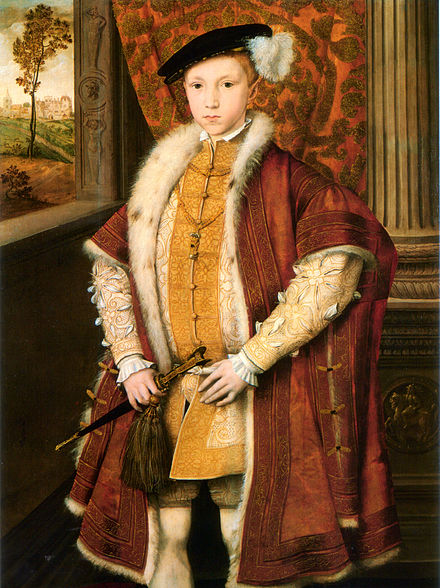
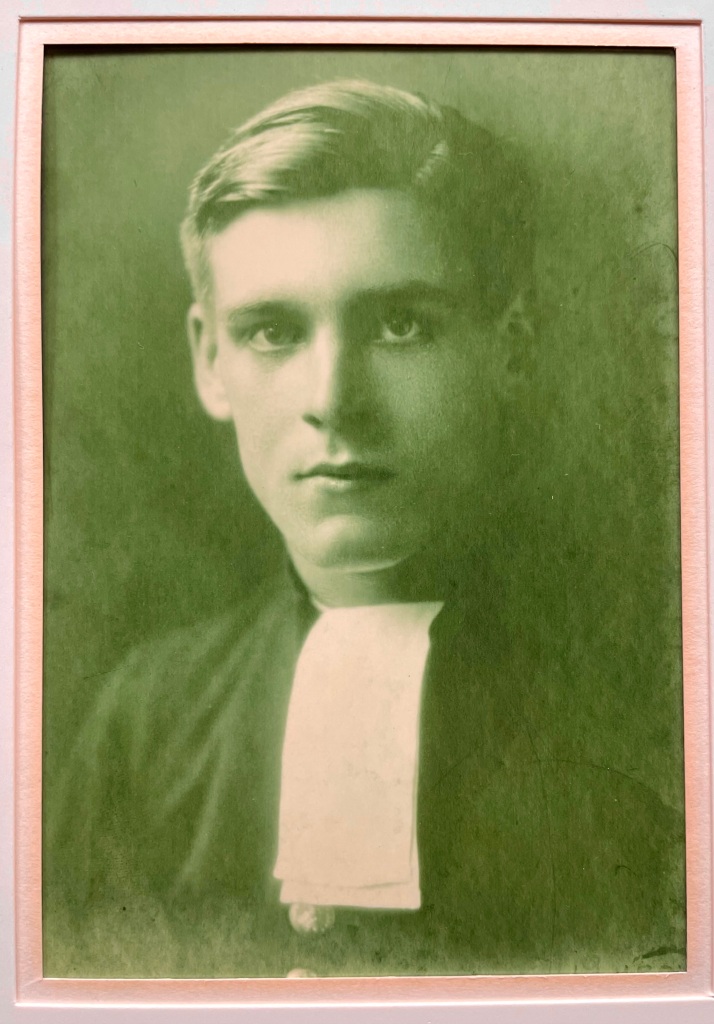
Every couple of summers while growing up, my parents would host the “Old Blues” alumni gatherings for those who lived in Vancouver and surrounding areas. I recall one old gentleman, Captain Gregory, who had been single all his life, a sea captain, and then married at age 95!! ( King Charles 2 endowed the Royal Mathematical School at Christ’s Hospital in 1673, and it took in students and trained them in naval skills required to become naval officers and merchant seamen.)
And there was the time that my father, with a hopeful heart, set me up for a daylong date with a young “Old Blue”, a recent graduate, who was travelling through the area! I took him around Vancouver for the day….he was a nice enough chap, but there were no sparks.
(this link can be copied, pasted and searched if you’re interested to read more of the 470 year old history of the school, right up until today…a thriving co- ed (50/50) boarding school of 900 young people, aged 11 to 18. They still still have many benefactors so that children from many backgrounds who could not possibly afford an education like that are the majority of the yearly intake.)
Meanwhile, back in Buckinghamshire, John was busy with teaching and admin and sports at Brightwell School, and Peternal had started teaching at a girl’s school a couple of miles away at Little Wittenham, and Mary and Betty were at Wallingford Grammar School.
Sadly, John died suddenly of a stroke during the night, aged 49. It seems from the newspaper article that he had been under duress with work pressures. My father, Claude, fourteen years old, almost fifteen, was notified while at boarding school and returned at once by train to the town of Brightwell in Oxfordshire.
One day at a family gathering – my mother often gathered all six children from both his marriages for special occasions – our father shared with the older set of his children, that the loneliest day of his life was the day of his father’s funeral when he, age fourteen, walked alone behind his father’s coffin to the church and then on to the graveyard.
Interestingly, the town newspaper gives quite a vivid and detailed description of the event, and the service by the graveside, gave brief mention of the grieving family, but focused mainly on the school children and other children’s organizations in Brightwell cum Sotwell and their contributions and floral tributes in the service. I noticed also one note: “With the greatest sympathy from little Rosie Walker and her sister Doris, Little Wittenham”, which would have been from students at the girls school where Peternal was teaching at the time.
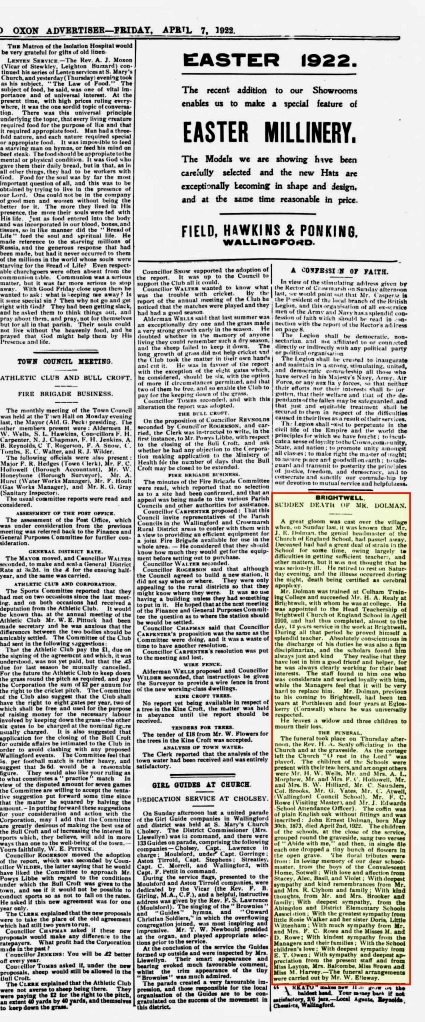

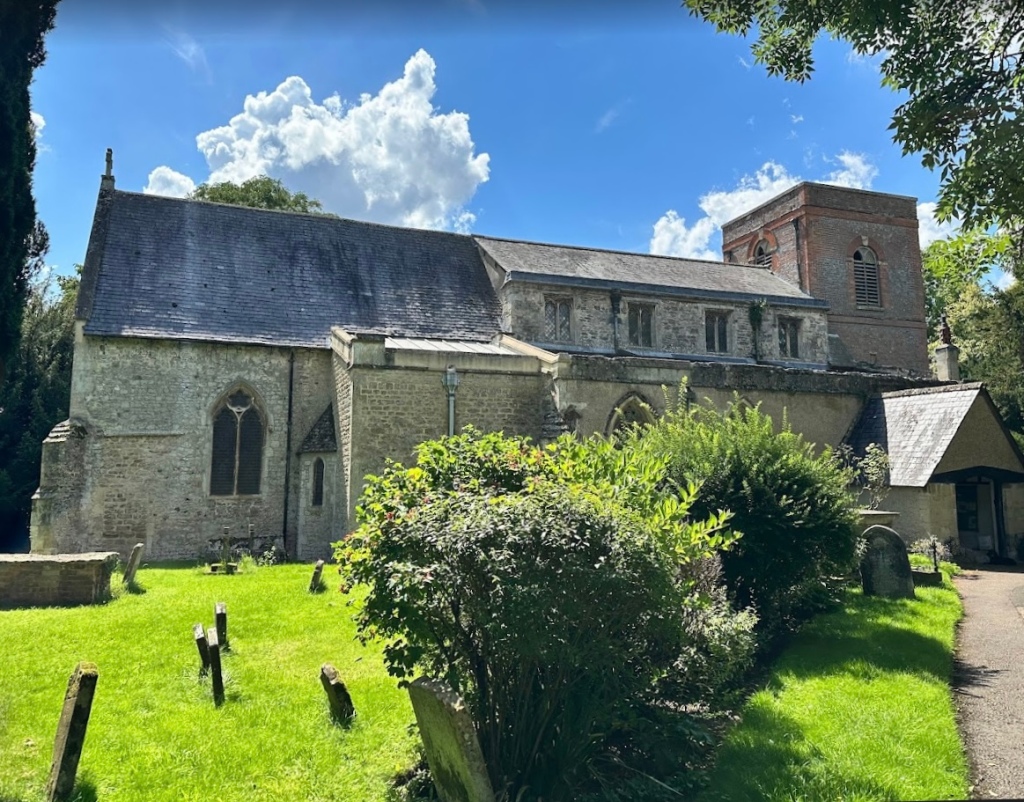
St Agatha’s Church and graveyard, where John Ernest Dolman is buried. https://www.achurchnearyou.com/church/5801/
My paternal grandmother, Peternal, was only thirty three years of age when she became widowed in 1922. Census records don’t catch up to her until 1926. I am presuming she went back to her hometown Porthleven for some time, with Betty, aged 10. Claude returned to complete school at Horsham, and sister Mary at age 13 started boarding at the girl’s site of Christ’s Hospital in Hertford.
On a personal note, when as children we were brought by our parents to visit where our father grew up (Spring break 1972), the only thing I recall from Wallingford and Brightwell cum Sotwell ( apart from the interesting name of the towns! ) were the garden “allotments” on the edge of the town and my father explaining that people who lived in towns in England had their vegetable gardens in rented plots on the outskirts of town ( rather like today’s city community gardens). I recall he brought us to see the area where their family allotment had been! As my father himself was an avid gardener ( well into his 80’s!), of vegetables ( knowing when to add lime or ashes to which type of vegetable), as well as how to tend and propogate geraniums and roses, fuscias and fruit trees, I am making an educated guess that he inherited this interest and knowledge from his parents while living in Wallingford – my father was there from age four until age ten, and returned for school holidays until his father’s sudden death in 1922.
I do not recall going to the graveyard to see our grandfather’s grave in Brightwell, nor did we see our Granny Pet’s grave in Devoran. Nor my mother’s father’s grave in Vienna in 1969. I believe this was likely a wise decision of our parents….we would have been 15, 13 and 11 years old, and as all the graves had a traumatic memory for our parents, they likely decided not to bring us, but instead focused on places to show us where they had happy memories; a wise decision, i believe. 😊
Stay tuned for Part 4, where I will record what I know of my Granny Pet’s life from age 33, when she was widowed, until she passed away in her late sixties.
With gratitude again to my Cousin Tony ( on the Dolman side) and Cousin Rachel on the Cornish part of the family history.
Emily Jane Rabey Holloway: April 4, 1857 – January 31, 1937. Part 2: Peternal Emilie, her eldest daughter, my paternal grandmother.
Peternal Emilie Holloway Dolman was my father’s mother, my paternal grandmother. “Pet” was the fourth child and eldest daughter born to William and Emilie Holloway. She was born on April 4th, 1887 in Sythnie, Cornwall. She joined two older brothers, William and Claude, and had two younger sisters Lottie and Elsie ( and a little brother Tommy, who sadly died age 2), and they were reared in Porthleven. Her parents ran the local Commercial Hotel, situated right on the harbour of the small town, where fishing and boat building were the main businesses.

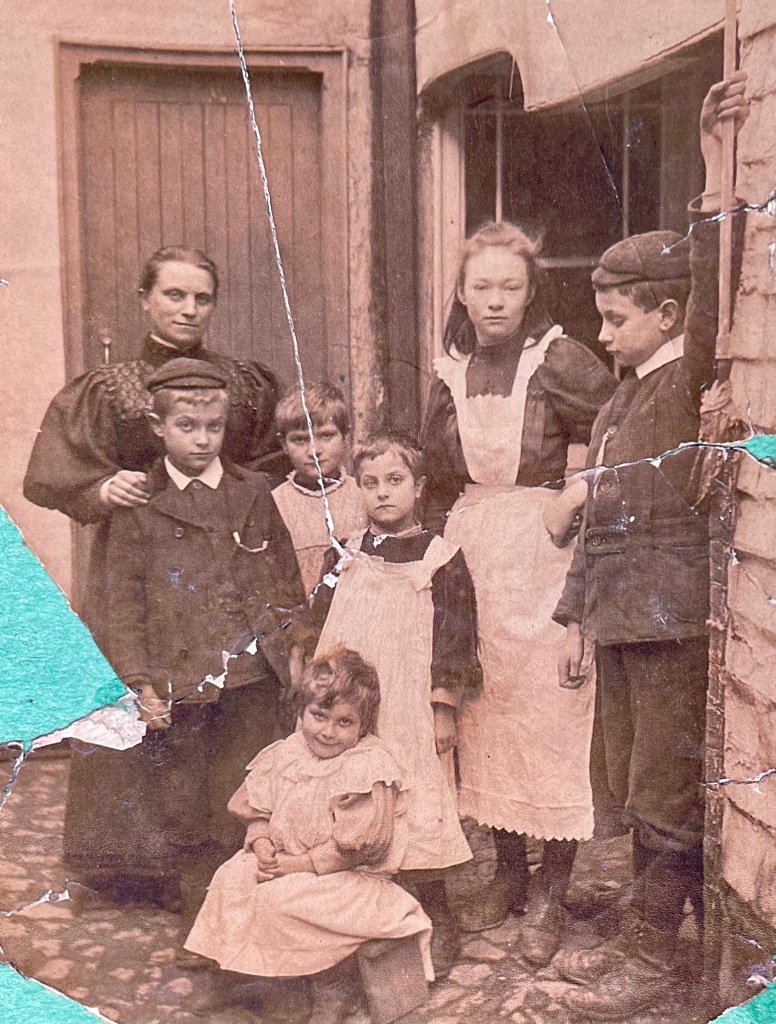
Behind the hotel. Pet is next to her brother Claude ( with a tear in the photo running through her face). To her left is her sister Lottie. Noting their mother’s black dress and the children’s serious faces, I wonder if this photo was perhaps taken after someone’s death….. Their sixth child, Thomas, had sadly died aged 2 1/2. ( i think of infection after being burned in a fire), but he was a year older than little Elsie (sitting on the stool in front of photo), so his death would have been 4 years or so earlier, when Pet was 5 years old. Or perhaps it was the custom in those days not to smile for photographs. It still is in some cultures today.


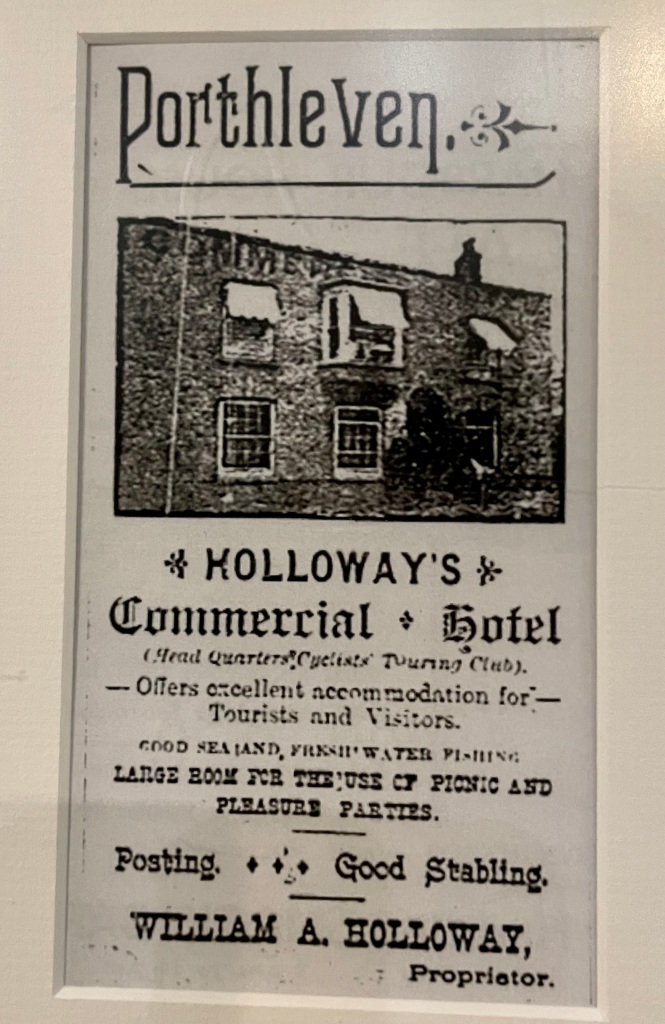
Scenes of the family by their hotel.
Peternal most likely attended the local church school. In the 1890’s in England, it was mandatory for children to attend school until age 11. We do have a newspaper photo of the Church of England school class in Porthleven in 1897, taken on occasion of Queen Victoria’s Diamond Jubilee year, when Pet would then have been 10 years old. Peternal is not in the photo -perhaps she was helping out with the family business already or was absent from school that day – but her two younger sisters Lottie and Elsie are in the photo, and the schoolmaster was John Ernest Dolman, a young man with a very fine moustache.

John Dolman had come to Porthleven from Chenies, Buckinghamshire, as a very young teacher, age 23, in 1896. He faithfully spent ten years as teacher at the Church of England school connected to St. Bartholemew’s Anglican church. He had trained at Culham College, close to Oxford, which was known to be a fine teacher training College in its time. His younger sisters and his widowed mother also joined him in Porthleven for some of the time. John’s younger sister, Effie, Fanny Elizabeth, first moved down to help keep house for him; then she joined as an assistant teacher ( she is also in the 1897 photo above), so the youngest sister Caroline, also came to Porthleven to keep house for them. That’s what younger sisters did in those days😊
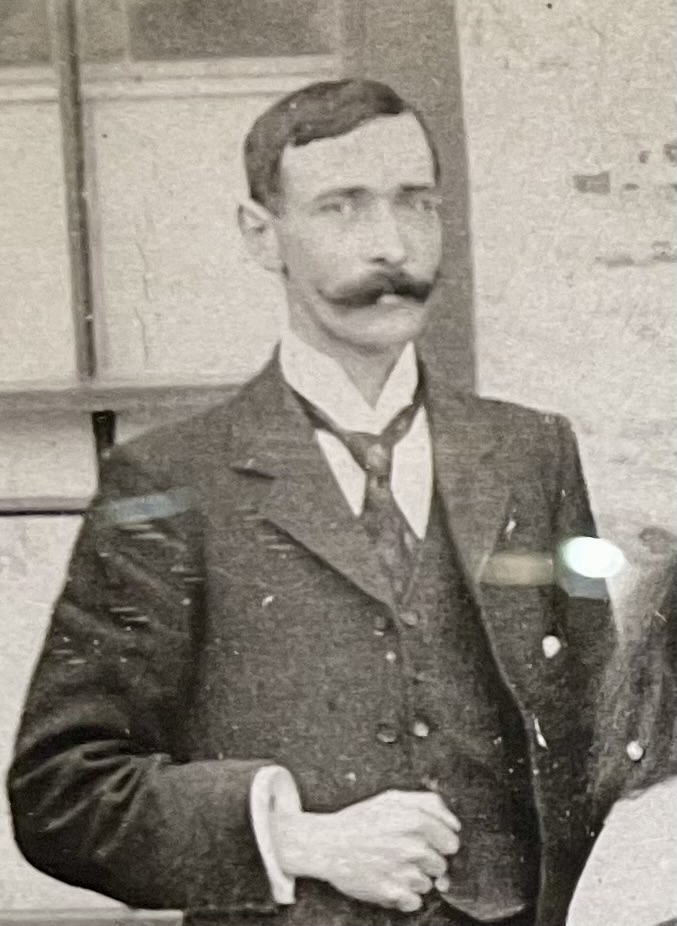
Here’s a link to the archives of Culham College with a bit of its history: https://archiveshub.jisc.ac.uk/search/archives/915ab0f4-8adf-3020-9691-a9df646d337d
It seems that as it was in a rural setting, they not only focused on classroom subjects, but also had training in gardening and rural science and later added special education also. I believe the gardening rubbed off on my father as a young boy, and he continued to be an avid gardener well into his 80’s!
Pet’s father, William Holloway, died suddenly at age 39, of cardiovascular causes. Pet was twelve years old at the time and likely worked along with her brothers at the Commercial Hotel, of which the lease was renewed and run by their mother, my widowed Great- Grandmother, Emilie Jane.
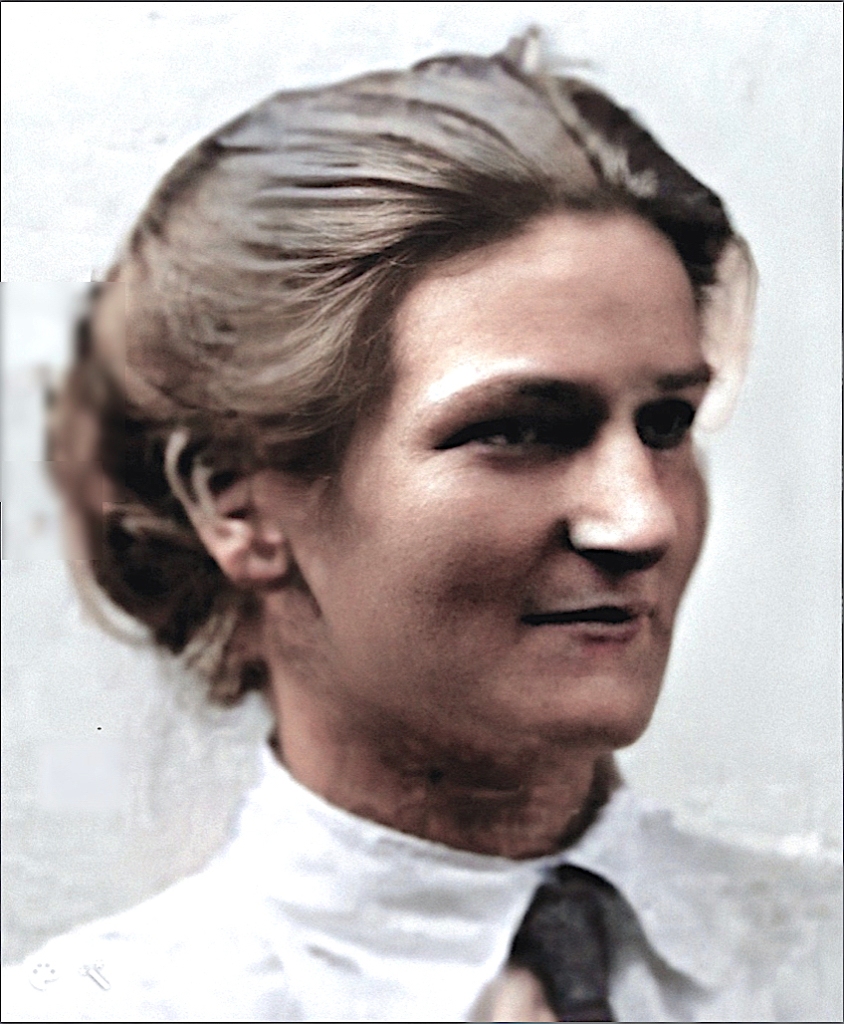
I do not know when Schoolmaster, John ( Jack) Dolman and Pet’ s courtship began – perhaps he noticed his former primary school student, now blossomed into a young woman, at church or at the Commercial Hotel pub….or at the fish market! That part of the story I do not know, but they seem to have had a summer romance in 1905, when she was 18 and he was 32. They would have known she was with child sometime in October.
Wedding bans, as per Anglican tradition, were read for 3 consecutive Sundays at St. Bart’s starting in November, and they were married on December 18th, 1905.
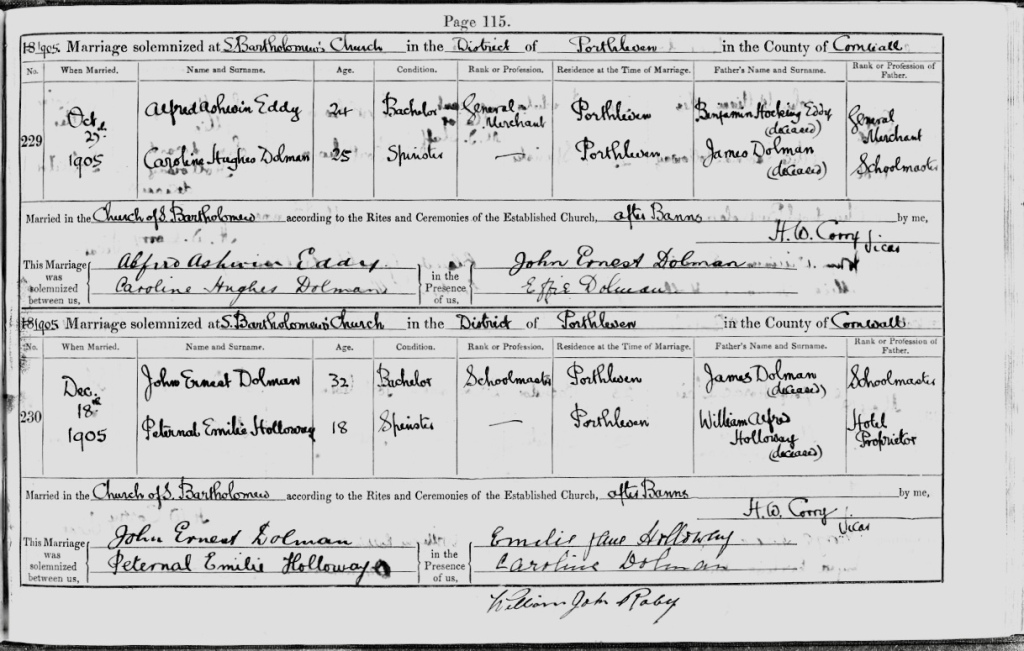
Interestingly, John’s youngest sister, Caroline, met and married a general merchant also from Porthleven in October 1905. ( see church marriage registry above). My cousin Tony, who supplied me with many of these genealogical details, is the grandson of Effie Dolman, who was John’s assistant teacher. And, I just heard from Cousin Tony that his grandmother, Effie, also married a Cornishman, Bejamin Eddy, who was the older brother of her sister Caroline’s husband, Alfred Eddy. Their father ran a thriving fishing net business in Porthleven!
My father, Claude, named for his mother’s closest brother, was born on May 23, 1906, in Porthleven. In September of that year, Jack and Pet, along with baby Claude moved to Egloskerry, also in Cornwall, where John was Schoolmaster for four years. During this time, a little daughter, Mary was born to them, in 1908.
In 1910, the family moved to Wallingford in Berkshire, near to Oxford, where Jack was appointed to the Headmaster position in Brightwell Church Grammar School. The next year they had a third child, Charlotte ( Betty) who was born on my father’s 5th birthday.
My father was very fond of both his sisters throughout his life. The three siblings attended Brightwell school, and here’s a photo of them as adults visiting with their kindergarten schoolteacher, many decades later!!
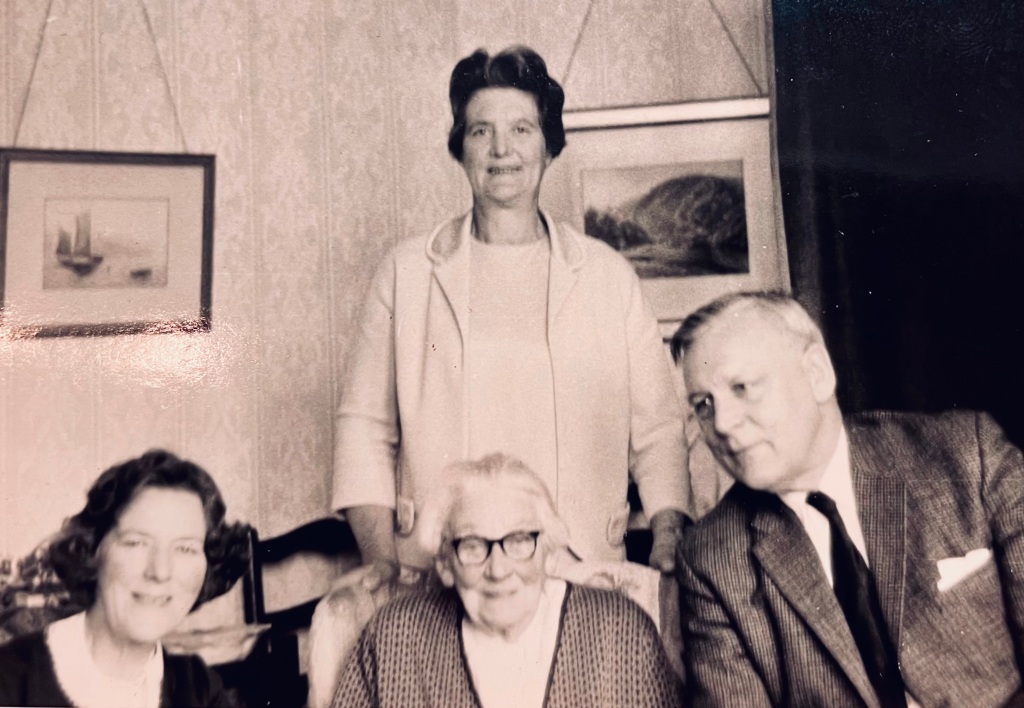
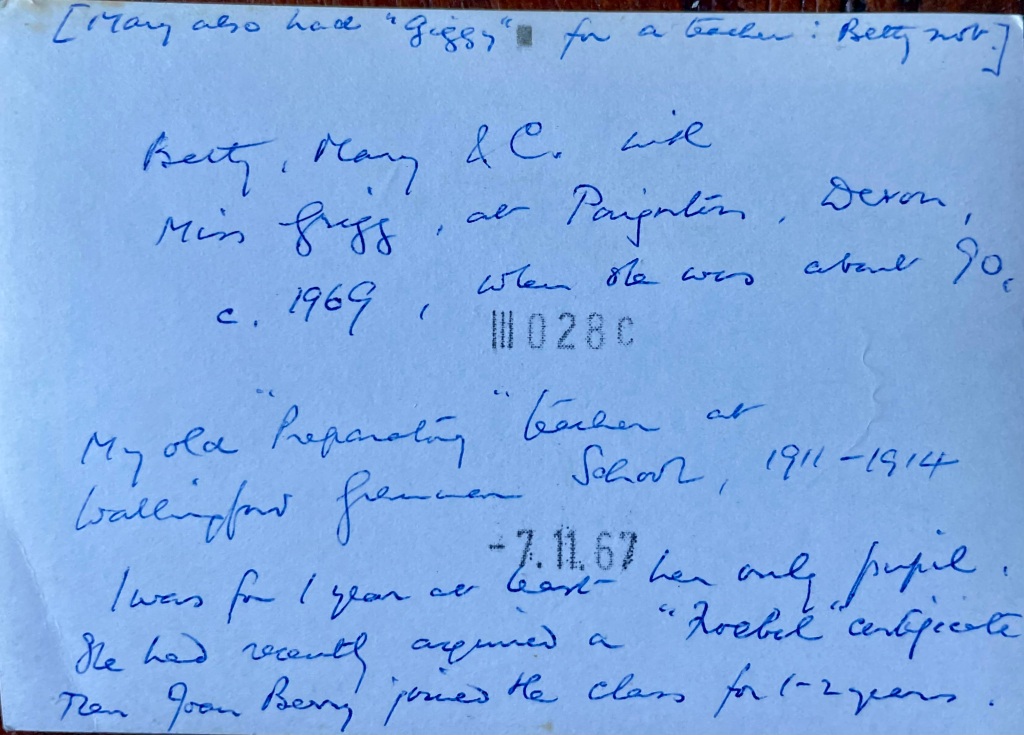
I was thrilled to hear only recently from my cousin Tony that Peternal also began to teach once her children were older! She had a position of teacher at a girl’s school close to Brightwell, in Little Wittenham.
Although the family lived in Wallingford for twelve years, they did travel back to visit Cornwall and her family in Porthleven. My father describes himself swimming across the outer harbour as a boy, and what a feat that was. ( below, photographs of Porthleven inner and outer harbours, taken in December 2022, when Gary and I visited along with our son Tim and his wife, Erika.)
An aside: The history of Cornwall tells that Porthleven was a specially constructed safe harbour in an area that had many many shipwrecks! I could say much more on that….may expand one day. There was also piracy, and tin mining in the area, as well as boat building, fishing and an active port of call for ships. https://www.cornwall-calling.co.uk/gazetter-cornwall/porthleven.htm#:~:text=In%201811%20work%20began%20on,a%20dangerous%20and%20difficult%20harbour.
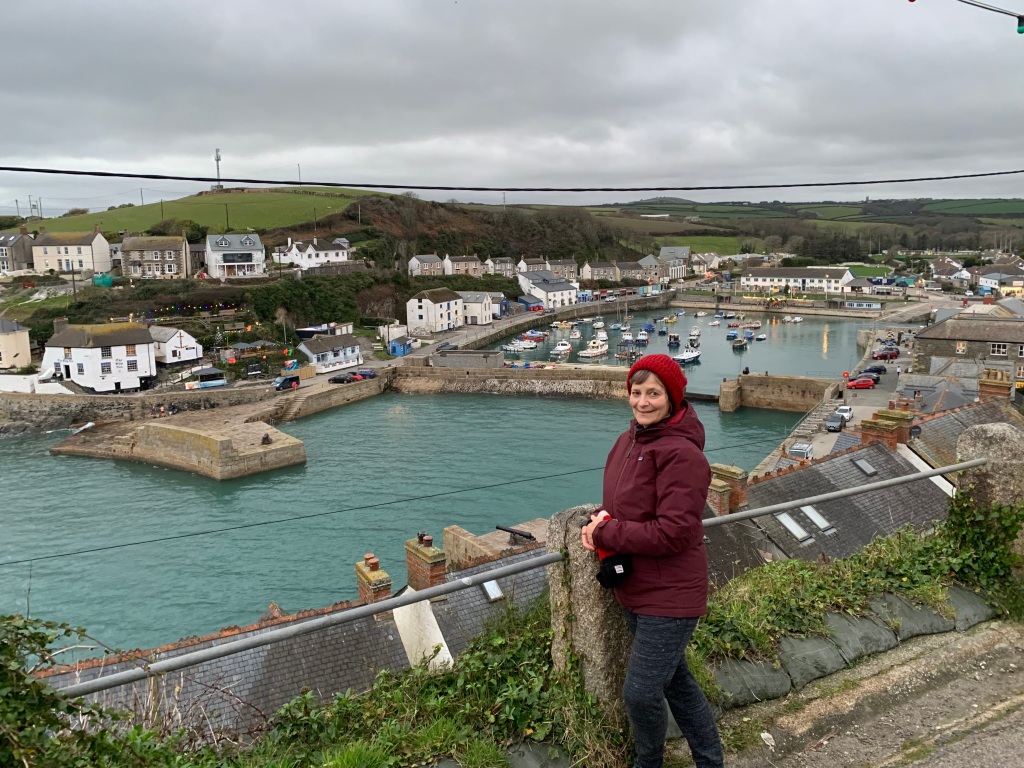

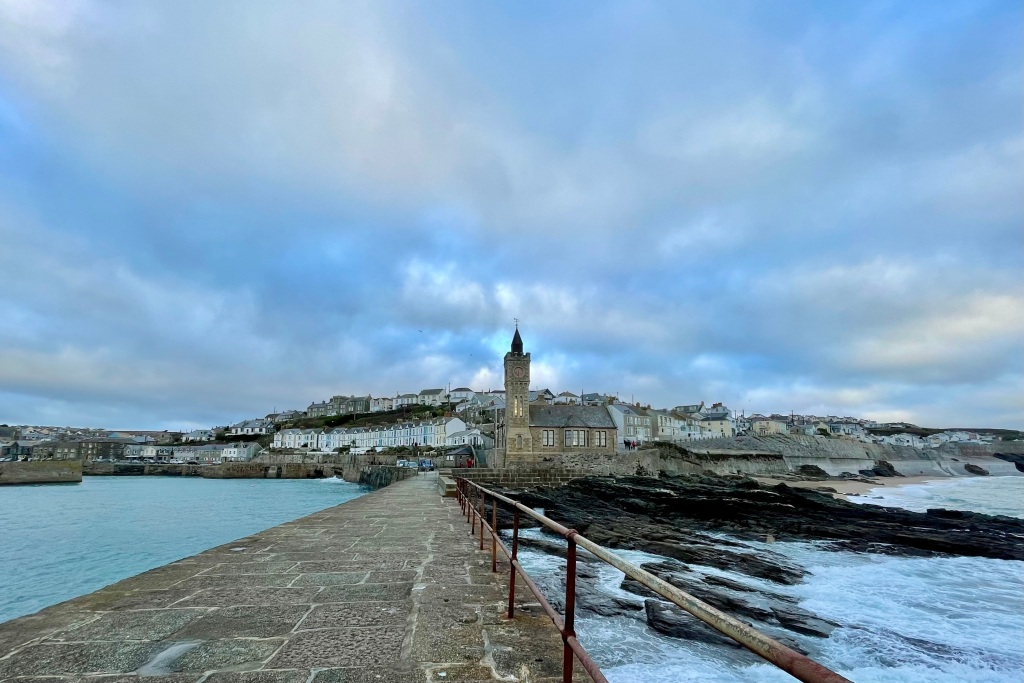
My father also spoke fondly of “Granny Holloway” in his boyhood, and I recently found a tiny New Testament she had given him when he was five years old!
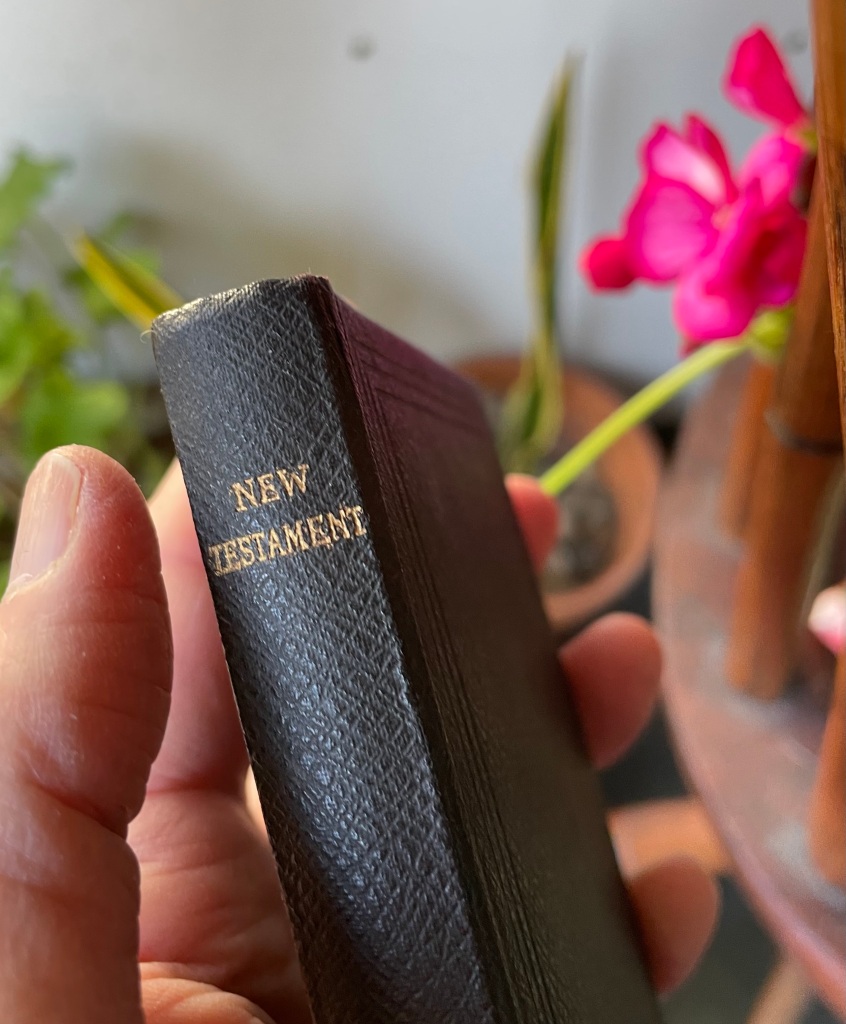
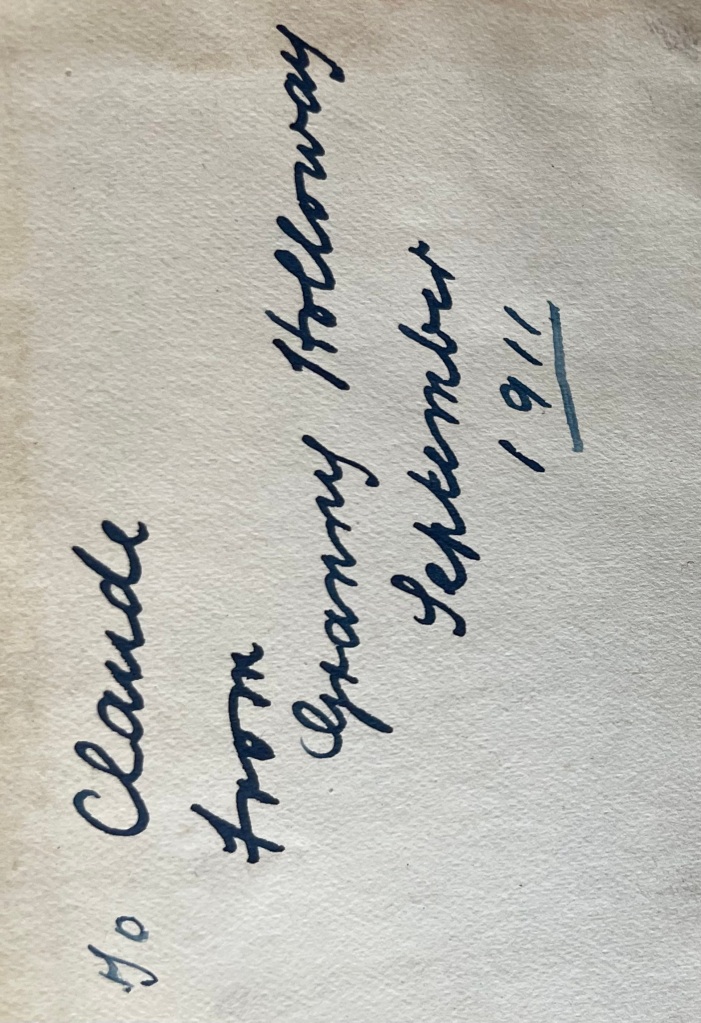
Below: “Granny Holloway” with her three daughters, Lottie, Peternal and Elsie, and Pet’s three children, Claude, (my father), and younger sisters, Mary and Betty, ca.1913 or 1914.

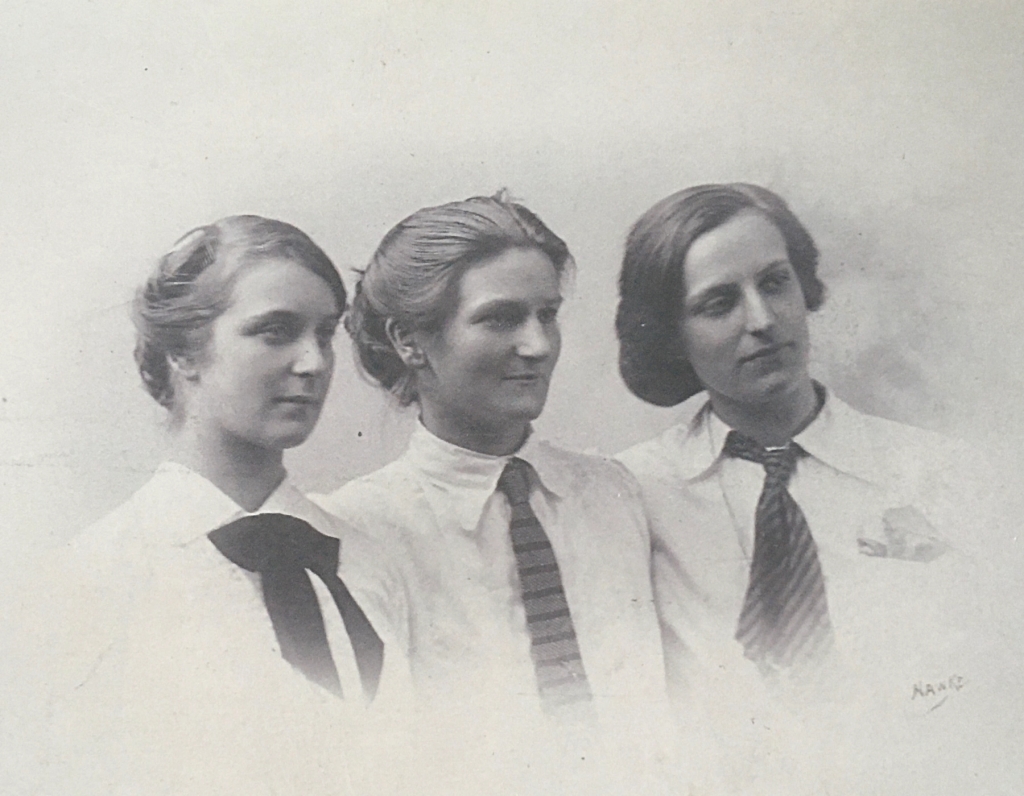
The Holloway sisters: Peternal ( centre, age 26), and her sisters, Elsie, 22 and Lottie 24. ca. 1913.
In 1972, my father brought my mother, brothers and me to meet our Great Aunt Lottie and Great Aunt Elsie in Porthleven, where they both had lived all their lives, and telephoned each other daily when into their 90’s. Aunt Lottie took in their mother to live with her when she retired from the Commercial Hotel. They lived on Belvedere Terrace, which lined the inner harbour. Lottie lived to be almost 100 years old and her daughter Amy looked after her, also on Belvedere Terrace. I remember both great aunts were very old and had swollen legs and ankles, and i do especially remember Aunt Lottie’s face, looking as she does above as a young woman! Sadly, we never met our Granny Pet, who died in 1955 before we were born.
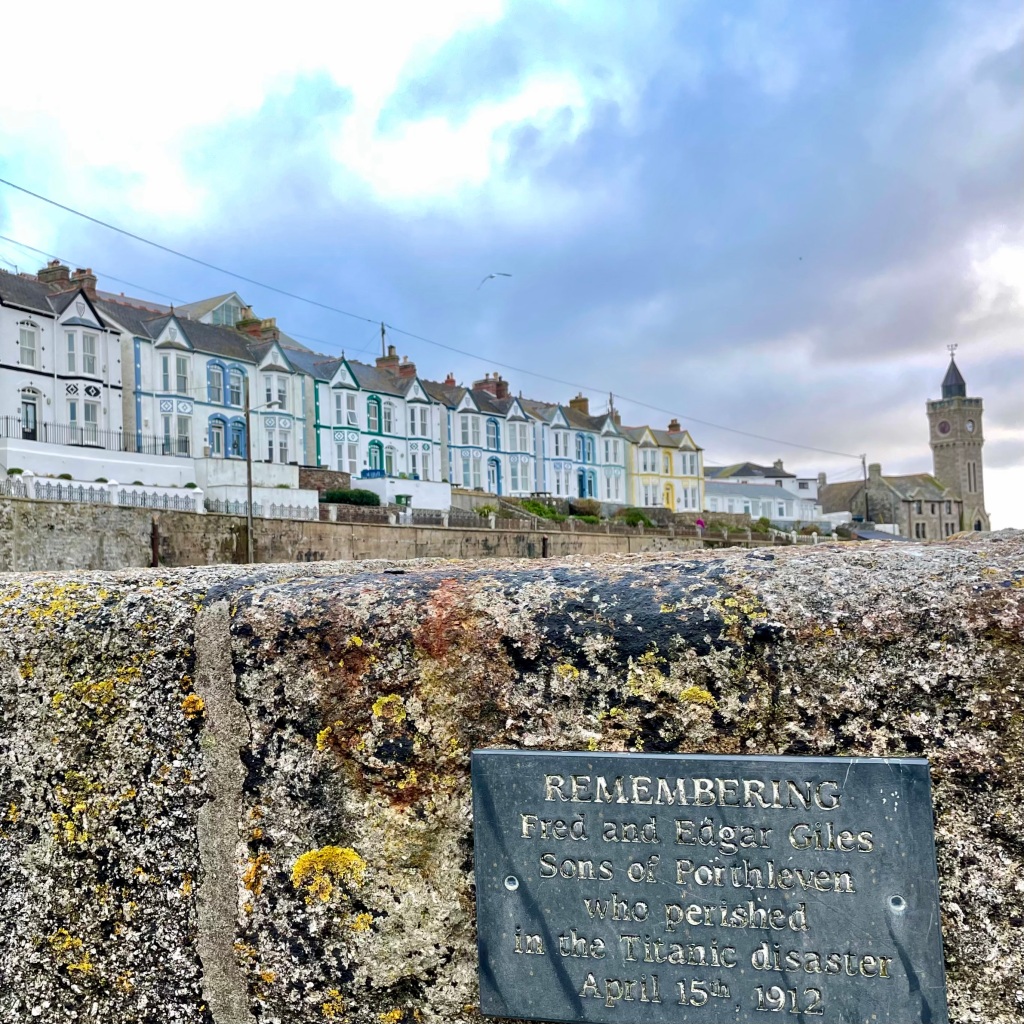

Bellvedere Terrace. Great Aunt Elsie at her home with the blue door.
I’ll end this section with some photos of the beauty around Porthleven, perhaps some of the scenic paths that my paternal grandfather and grandmother took for romantic walks when they were courting, perhaps packing and enjoying a Cornish pastie lunch, or a piece of parsley pie! ( local Cornish fare that my Mum learned to make!)
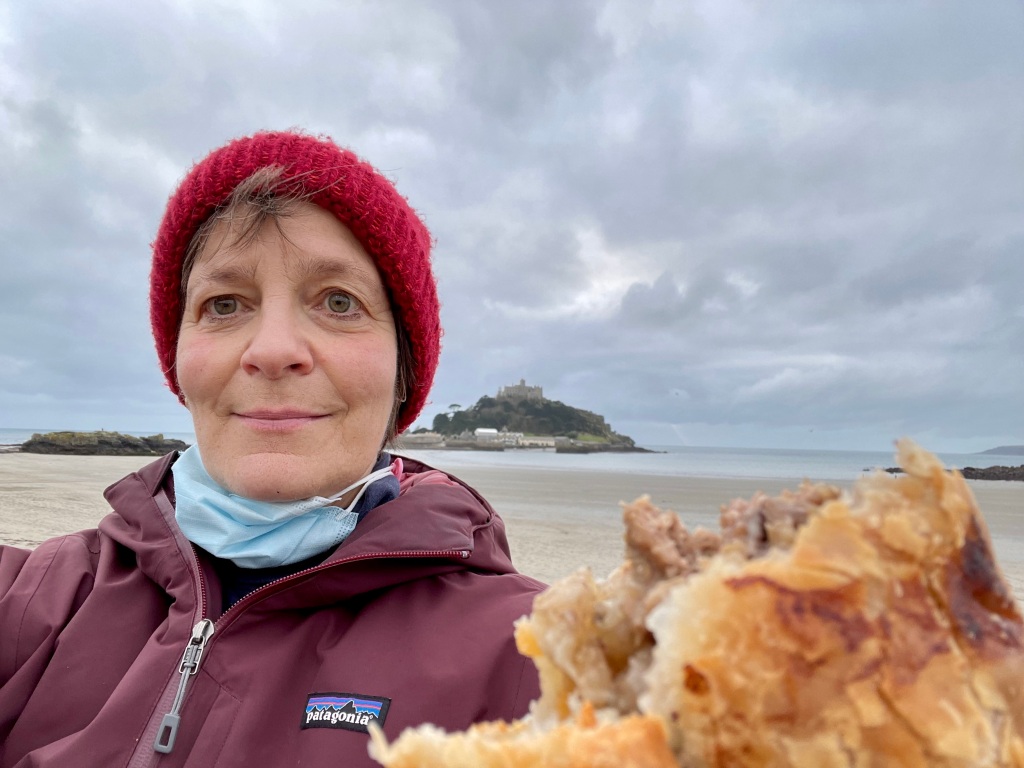
Cornish pastie; St. Michael’s Mount in distance. Below, Philps pasties for lunch, Porthleven – recommend! During our visit, December 2022.
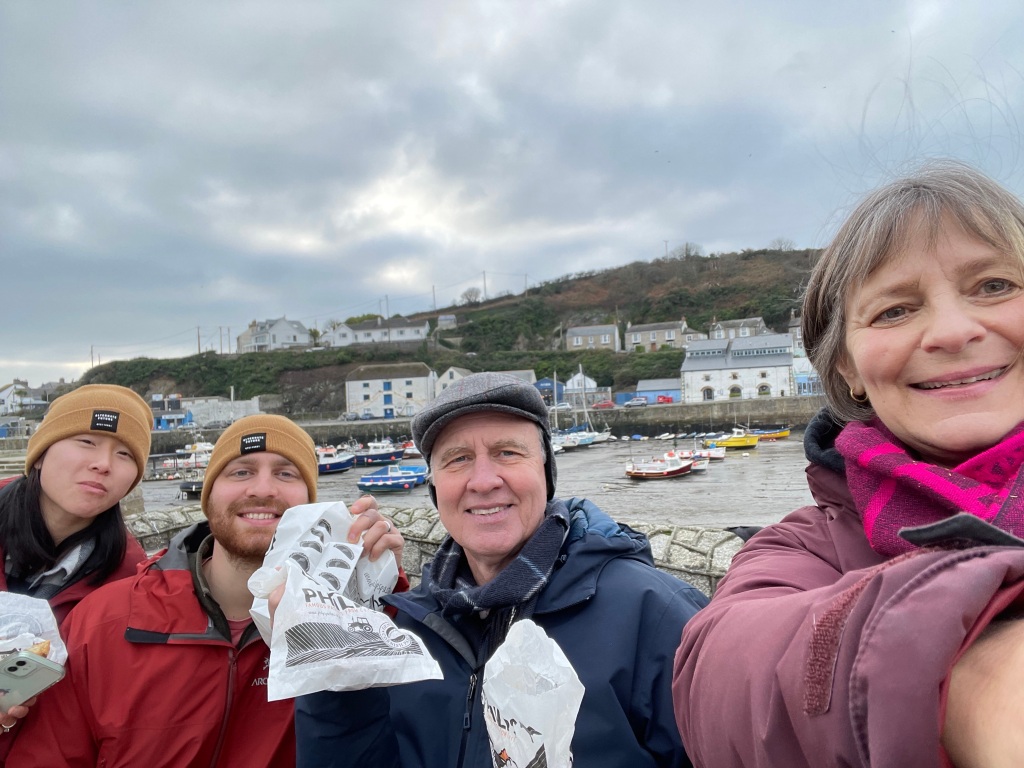
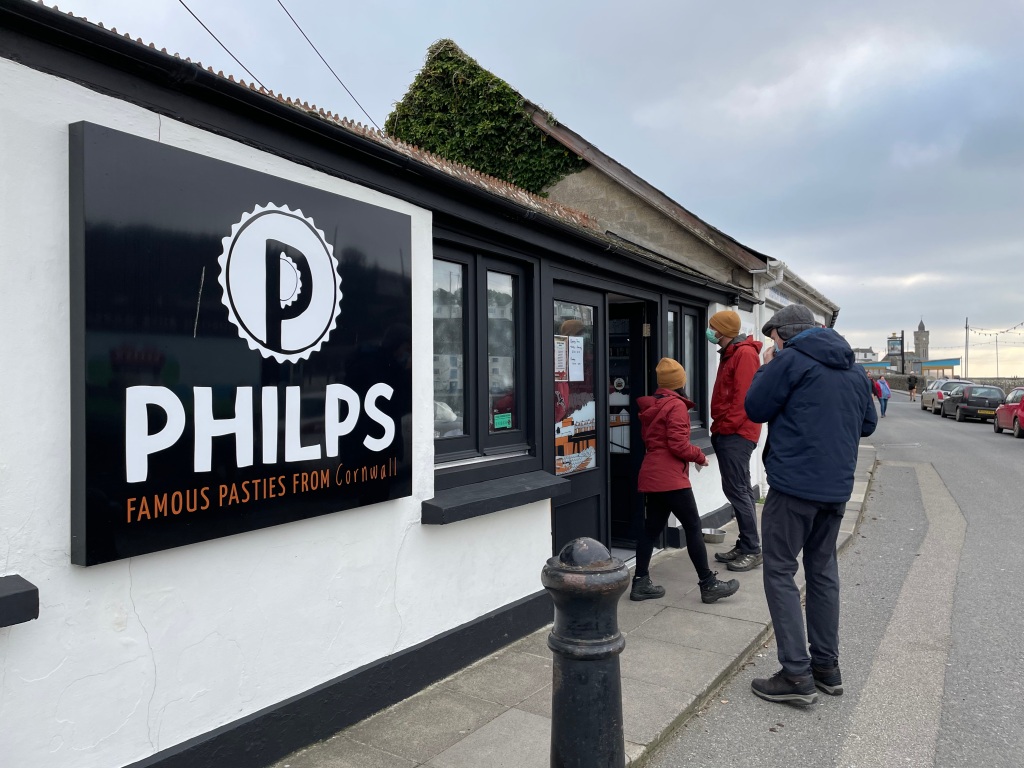
I’ve enjoyed imagining the relationship between my paternal grandparents, since i heard very little from my father while growing up, although I have recalled some of my father’s reflections and dropped comments that have come to mind…more to share next episode. I’m very thankful to my cousin Tony for filling in many details 🙂
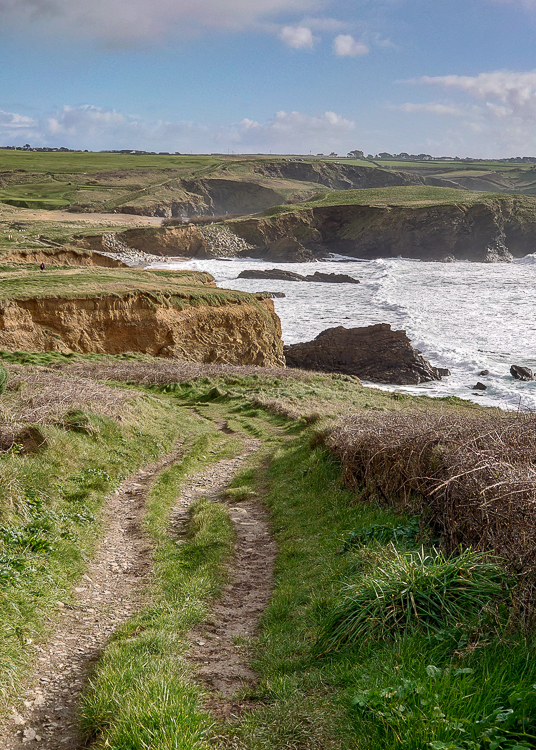

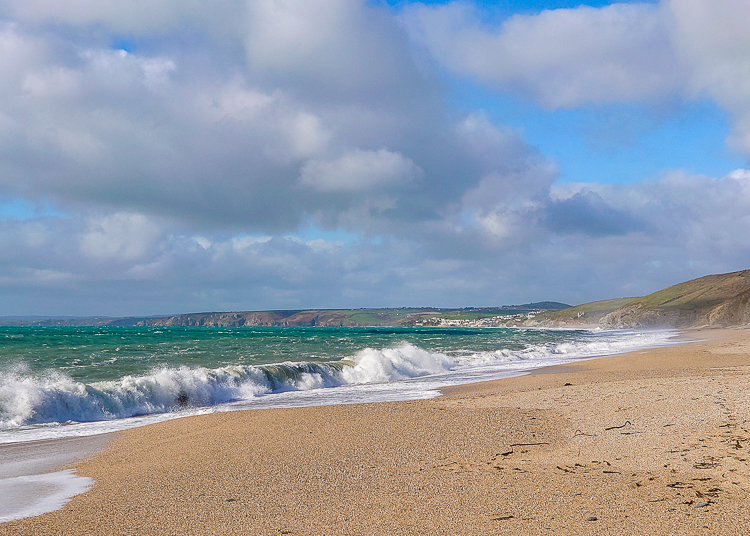
Light during this dark season reminds me of life-giving hope.
”Where there’s hope, there’s life!” – Jennifer E. Dolman
Already as a preteen child, I recall being very certain that this was the true order, and I mulled it over quite deeply in my thoughtful moments.
Both in real life that i experienced and observed, and in the many books I read, I felt this was confirmed.
Recently while starting this blogpost, I googled the source of the more common aphorism: “where there’s life, there’s hope”. Some give the source as Ecclesiastes 9:3 – “But all who are among the living have hope, because a living dog is better than a dead lion.“ Some mention Tolkein’s hobbit, Sam, in Lord of the Rings, who quotes his “gaffer” who said where there’s life there’s hope, as he encourages Frodo to eat and then to rest, during their arduous journey.
While skimming through google’s search, I spotted a quote by Anne Frank – she also liked it my way, i.e. where there’s hope, there is life! And I wonder if perhaps I was influenced by her! I definitely had read a paperback edition of her diary given me by my Mum when I was quite young.
“Where there’s hope, there’s life. It fills us with fresh courage and makes us strong again.” – Anne Frank wrote from her attic in hiding, in her early teens.
She also added: “In spite of everything, I still believe that people are really good at heart.” With this, I do not agree: I’m more with Aleksandr Solzenitsyn who wrote in his Gulag Archipelago:
“The line separating good and evil passes not through states, nor between classes, nor between political parties either — but right through every human heart — and through all human hearts. This line shifts. Inside us, it oscillates with the years. And even within hearts overwhelmed by evil, one small bridgehead of good is retained”.
My opinion on this matter has remained over the decades, because I have met people and situations both in books and in real life who have illustrated my viewpoint. Seriously, how can one really live, without a source of hope!! Its opposite, Despair, is considered a serious sin in Roman Catholicism, and, i believe for good reason. I believe it places me and humanity at the centre of one’s hope, and leaves no room for belief in a good God to exist, nor for the opportunity for God to act.
I did notice this year in updates from the Jewish Federation of Vancouver, in response to the October 7 tragedy and the ensuing outbreak of war, that in the Jewish community also, there was a call to hope.
This is a bad moment in history, a moment in which I experience deep despair. But Elie Wiesel z’l, survivor of Auschwitz and Buchenwald, and winner of the 1986 Nobel Peace Prize said, “We Jews have every right to despair but we cannot. We are commanded to hope.”
And that we will do.
We will overcome even this.
And we will continue to hope.
[The] commitment…of the government of BC is a message of hope. Ultimately, securing the future of Holocaust education will help us counter prejudice and racism, promote tolerance and equality, and defeat antisemitism. All this must be done. We must prevent Auschwitz from entering our lives. That requires well-educated people who can recognize truth from fiction and learn from the past.”
Quite from Dr. Robert Krell, psychiatrist, in the weekly newsletter sent by from Ezra Schanken, CEO of the Jewish Federation of Vancouver. ( November 3, 2023 )
Interestingly, no Bible reference is given, it seems Elie Wiesel is issuing the command….but from my knowledge of the Hebrew scriptures, there are plenty of references in the Psalms eg Psalm 130 and 131 and in the Prophets. Israel is commanded to wait/ hope in the LORD.
When i was close to turning fourteen years of age( Spring Break 1972), our parents took my brothers and I on a trip to England. We visited Porthleven, Cornwall, the small fishing village where my father was born; we met great- aunts, aunts and uncles and cousins in the surrounding areas. ( Below: with our Uncle Gerald and Aunt Mary in Devoran, Cornwall and with Uncle William and Aunt Betty, in Paignton, Devon). Mary and Betty were my father’s younger sisters.

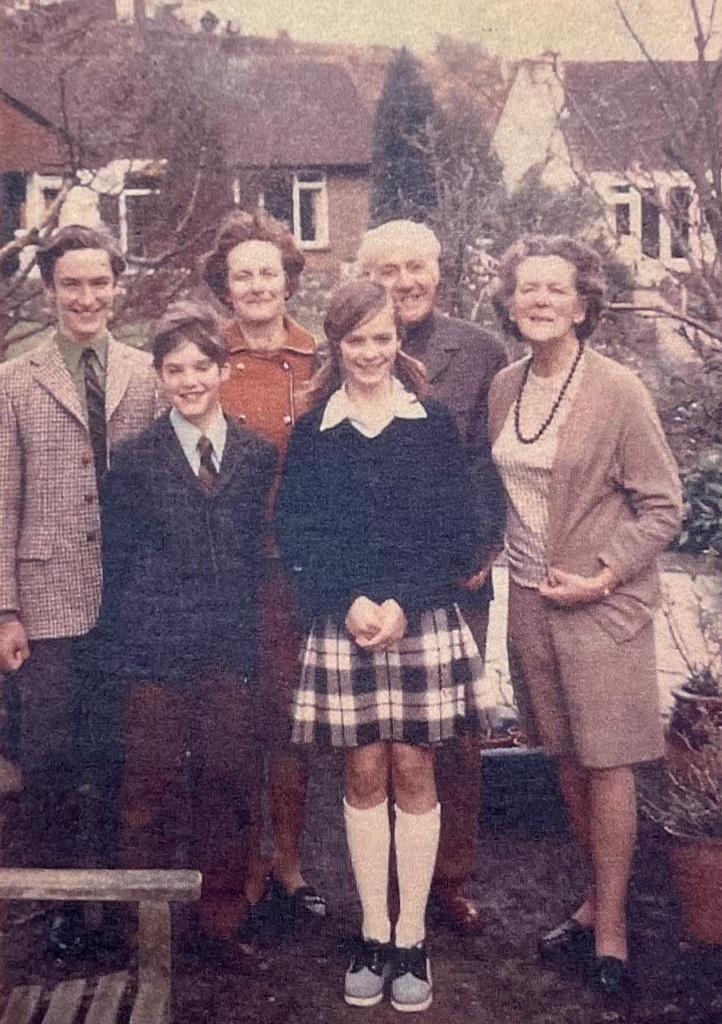
We drove as far north as Haworth, on the edge of the wild Yorkshire moors, and visited the museum home of the Brönte family, the three famous writer sisters, whose intense and memorable novels ( eg. Jane Eyre, Wuthering Heights), I had read several times over….my father was a good sport and agreed to drive us all the way up there for me!
On the way, we passed through the small city of Coventry and visited St. Michael’s Cathedral. Bombed in 1940 during a blitzkrieg in World War II ( in one night over 600 civilian people were killed), it is known world wide since then as a centre for peace and reconciliation. Here’s a brief clip about the history of this place. ( press on the link and a prompt should come up to open). Very interesting!!
https://www.pbs.org/wnet/religionandethics/2013/11/08/november-8-2013-coventry-cathedral/20993/
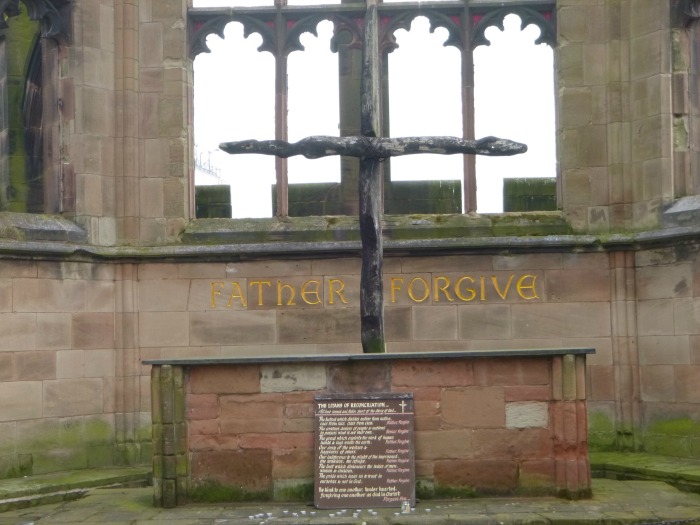
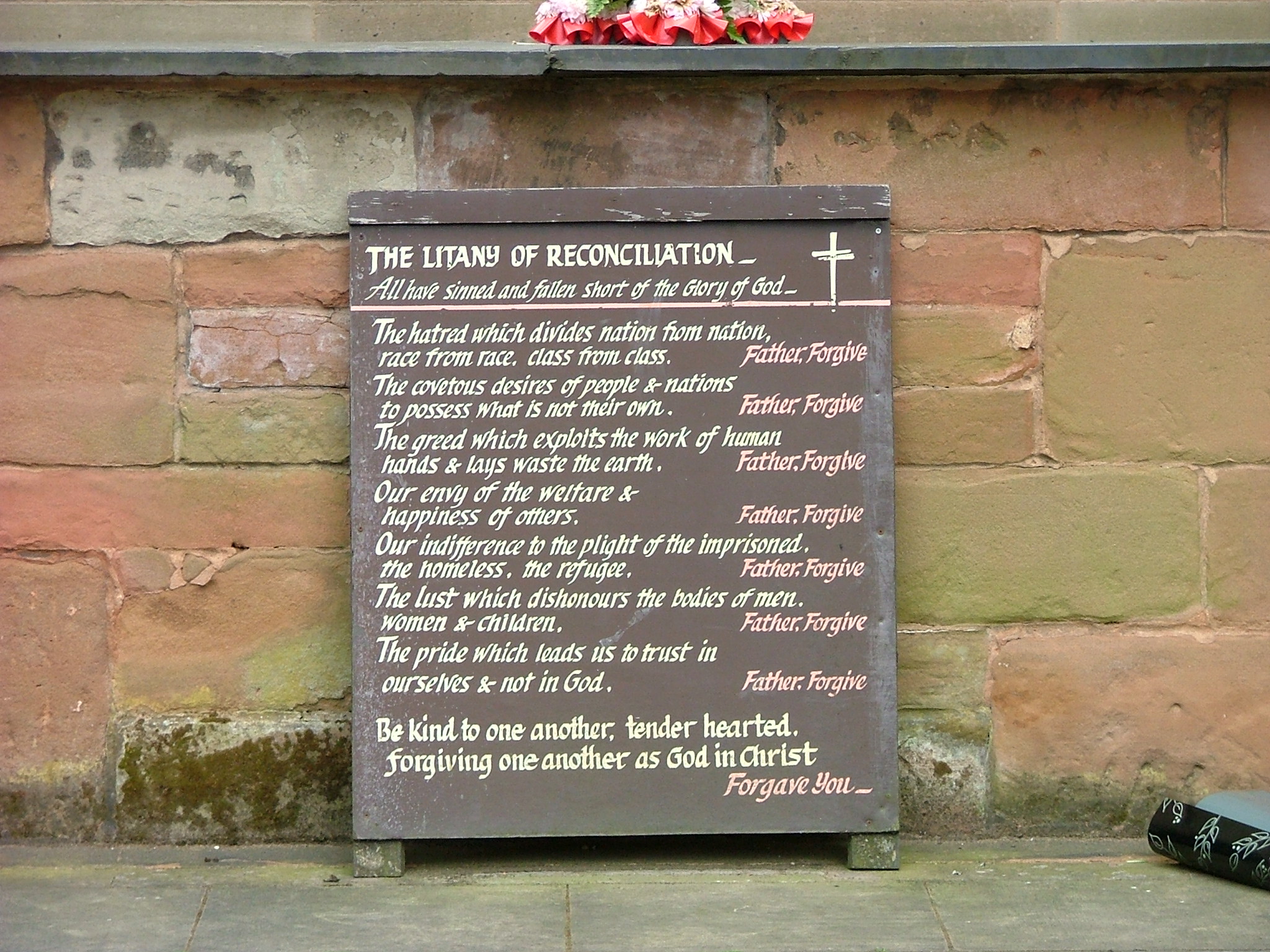
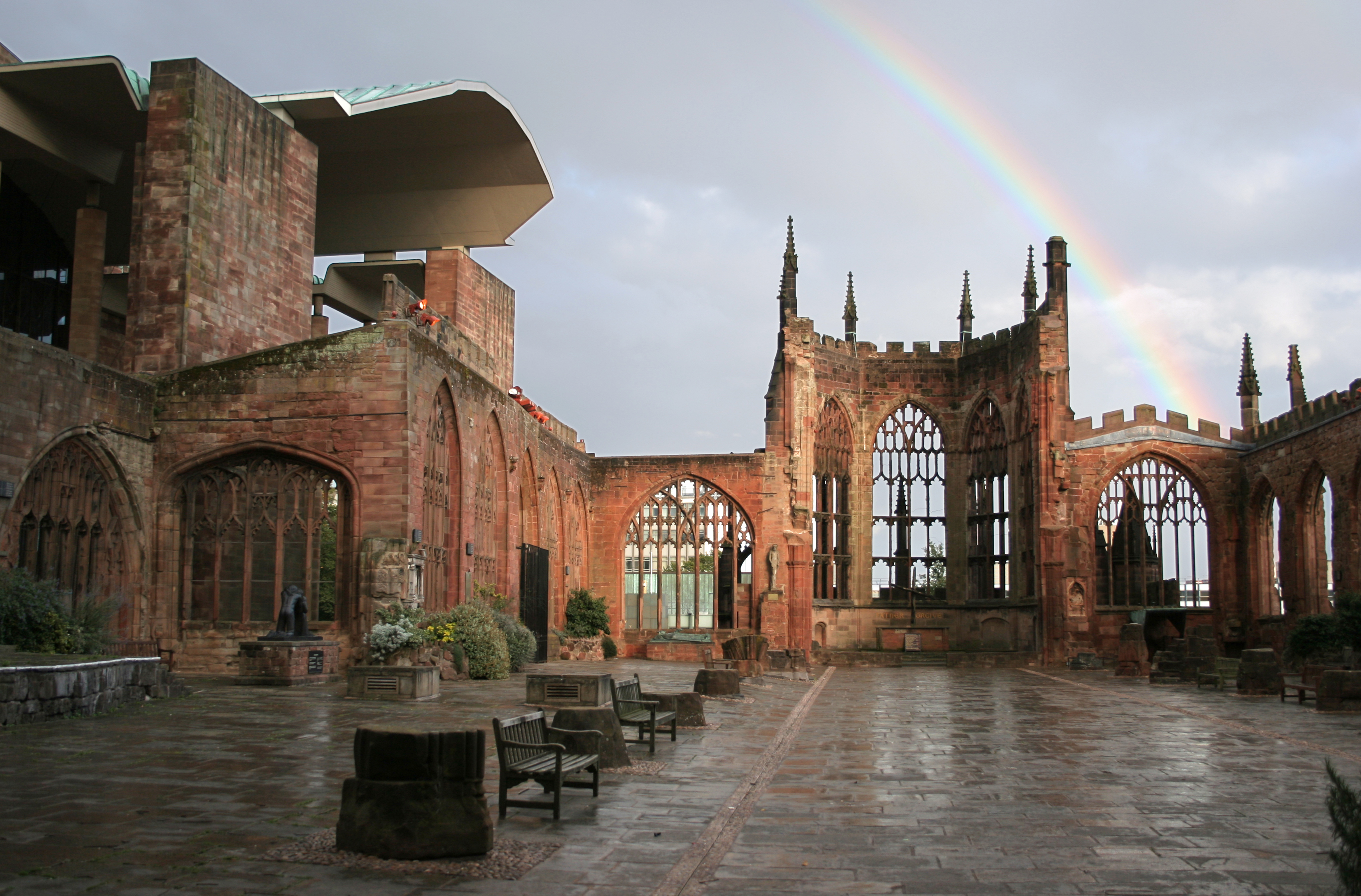
The Coventry Litany of Reconciliation ( found below the Crosses of beams and nails)
The Litany was written in 1958 and focuses on the seven deadly sins. It reminds us that when we pray about the problems of the world around us, we need to begin by acknowledging the roots of those problems in our own hearts. ( Aleksandr Solzenytsen had a similar Christian Biblical view of humanity).
All have sinned and fallen short of the glory of God.
The hatred which divides nation from nation, race from race, class from class,
Father, forgive.
The covetous desires of people and nations to possess what is not their own,
Father, forgive.
The greed which exploits the work of human hands and lays waste the earth,
Father, forgive.
Our envy of the welfare and happiness of others,
Father, forgive.
Our indifference to the plight of the imprisoned, the homeless, the refugee,
Father, forgive.
The lust which dishonours the bodies of men, women and children,
Father, forgive.
The pride which leads us to trust in ourselves and not in God,
Father, forgive.
Be kind to one another, tender hearted, forgiving one another, as God in Christ forgave
you.
After walking around the outdoor courtyard of the the bombed cathedral, our family had a tour of the new adjoining modernist cathedral by one of the priests, and we spent some time with the organist (my older brother plays). When the the guide took us around to see the wall sized colourful stained glass window, he said quite personably: “You know, even on the greyest, darkest day, the centre always remains bright!” He made the connection with Jesus, the Light of the world.
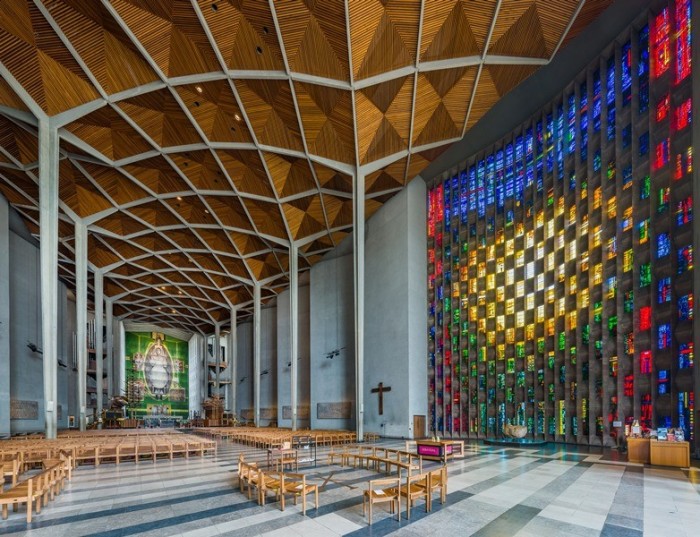
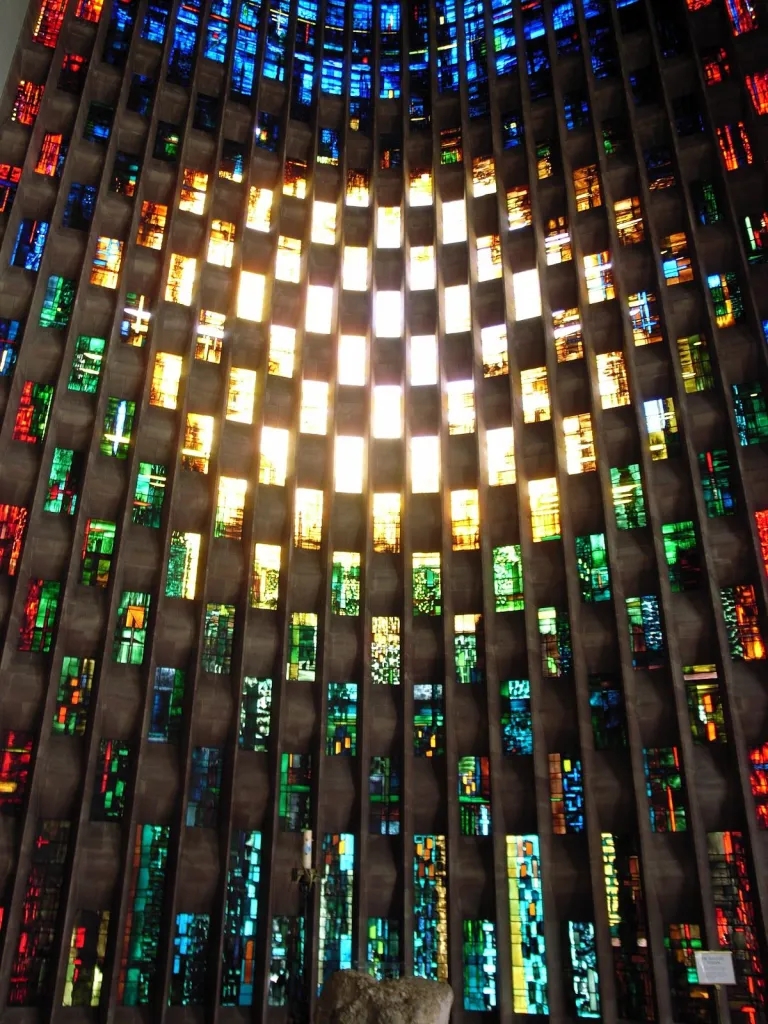
My (almost) fourteen year old heart and mind and soul, just beginning young womanhood, absorbed that experience deeply. The personal words of the priest guide and the visual experience of the constant brightness in the centre of the richly coloured glass, in the larger setting of God’s mercy; the powerful prayer of “Father forgive” amidst the visible ruins of war’s destructive power - in juxtaposition with the beauty of the new cathedral and the international programme ( which continues to this day), demonstrating the extension of peace and reconciliation to others who have hurt one badly i.e. loving one’s enemies! All of this remained with me and percolated during my teenage years.
I returned back to Coventry several times: in 1978, when I just turned twenty, and i obtained a copy of the prayer; later with my husband and a friend in 1991, and then again in 2013 with my younger brother and partner. All memorable visits! I am so thankful that our parents introduced us at a young age to Coventry Cathedral and the deep truths it showcases. We had no religious instruction at home from either parent, my mother was a secular Jew, raised with no traditions, my father a non- practicing Christian, but through our school teachers and absorbing history such as on this family journey, we were nurtured and educated, nonetheless and were free to follow as we chose.
When I was 16, in Grade 12, I participated as usual in our annual Crofton House School Carol Service held at Christ Church Cathedral. That year, I was asked to read a Bible passage from John’s gospel from the pulpit. As i didn’t quite understand the meaning of the few verses, I asked the Dean of the Cathedral at that time, Herbert O’Driscoll, to please explain the meaning to me. He did, and I read, (somewhat nervously from the high pulpit), along with two friends who also had chosen readings for the time of Advent.
1 In the beginning was the Word, and the Word was with God, and the Word was God. 2 He was with God in the beginning. 3 Through him all things were made; without him nothing was made that has been made. 4 In him was life, and that life was the light of all mankind.5 The light shines in the darkness, and the darkness has not overcome[a] it. 9 The true light that gives light to everyone was coming into the world. John 1:1-5, 9
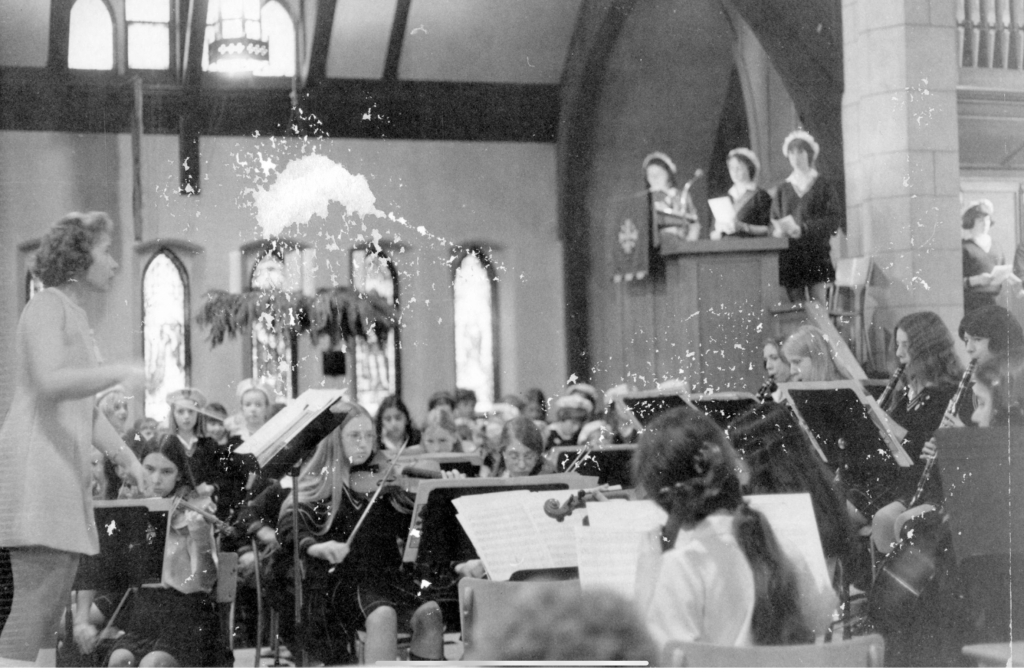
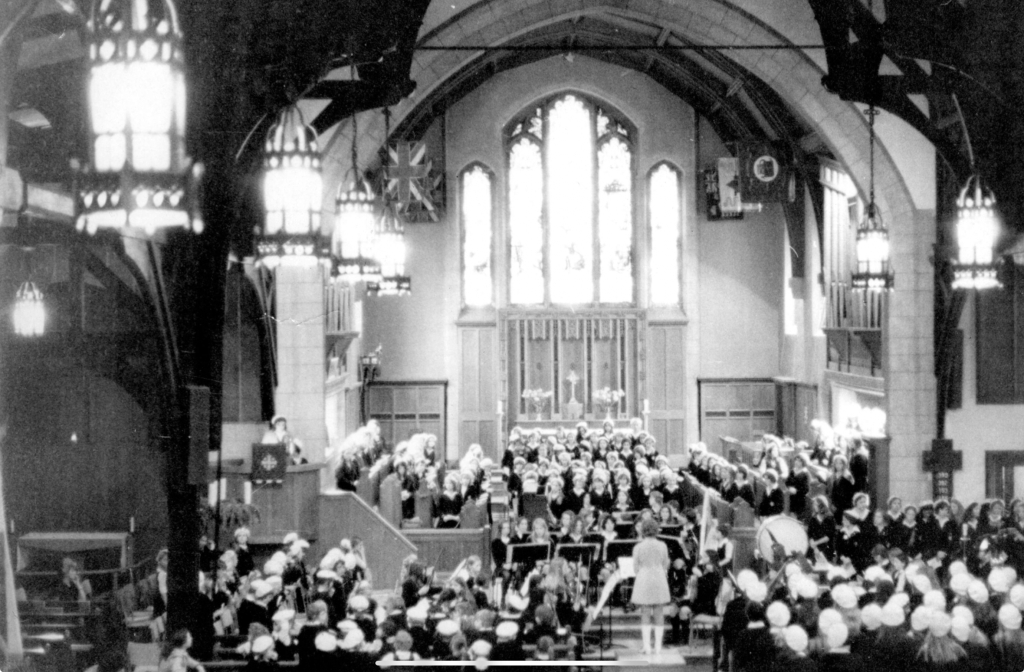
( Photo from archives, December 17, 1974).https://searcharchives.vancouver.ca/crofton-house-carol-service
By God’s great mercy, I have lived for many decades now in the reality of Jesus’ Resurrection life within me. His Holy Spirit and the words of the Bible remind me and assure me of His promise, not only to guide me daily, but that He will come again to this struggling world, to set things right, serving justice and bringing renewal for all of suffering Creation. And although the faith journey does not seem to become easier with age and experience, this trust in God, when regularly nurtured, does continues to change despair to hope in me and gives me joy and strength for life, even in the darkest of times. And my eyes are opened to see miracles of light….truly, the God of Israel neither slumbers nor sleeps. As we honour Him, he honours us with his presence, guidance and loving care. ( Our family celebrates both Channukah and Advent & Christmas). In Advent we remember the first coming of Jesus to this dark world, and also look forward to his second coming, in glory. In this dark time of year and with the constant bad news of world events, this brings great hope as we are warmed by the colourful display of candlelight. ( Channukah reminds me that God still does miracles that can be seen by those who seek to honour Him).
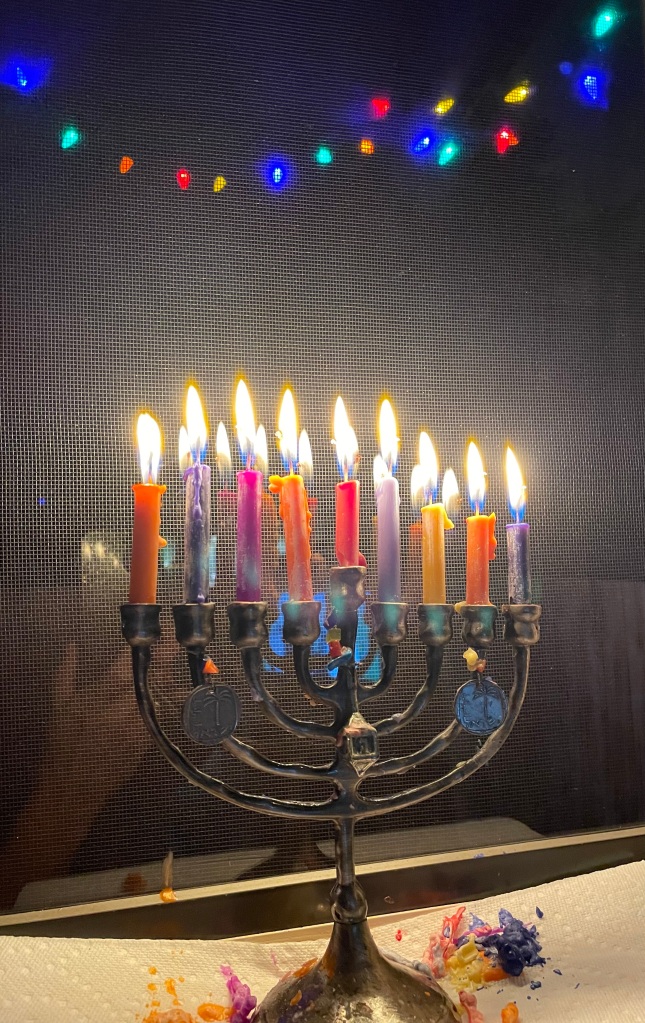
Jesus Messiah, the One in whom my heart trusts and hopes, and whom I continue to follow, since a child of ten years until now, an older adult, a retiree!
“Even on the darkest day, the centre always remains bright!”
Jesus, the Light of the world!
Again Jesus spoke to them, saying, “I am the light of the world. Whoever follows me will not walk in darkness, but will have the light of life.” – Gospel of John 8:12
“The light shines in the darkness, and the darkness has not overcome it.” – Gospel of John 1:5
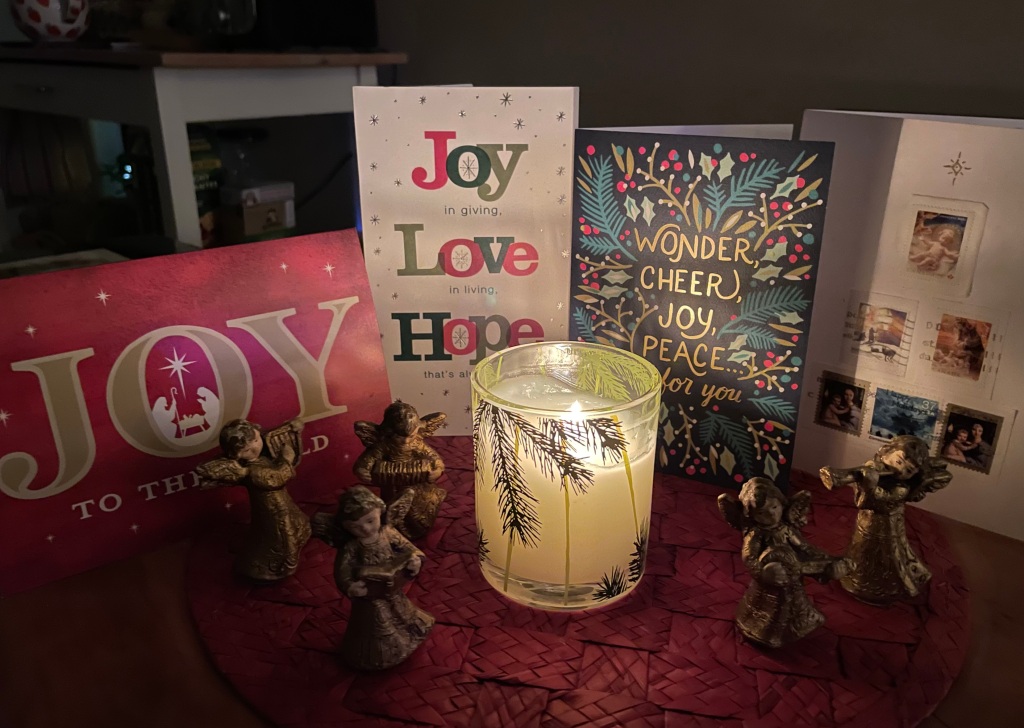
Lettuce: childhood garden memories.
“ Jenny, be a pet and run into the garden and pull us two nice lettuces for supper,” said my Mum, as she was beginning to prepare a summer weekend meal. I hopped down the 3 back cement steps, rounding the corner as i reached the bottom, and skipped down the gently sloping paved path on the west side of our large house, past the steep basement steps by the wood storage area, past our little greenhouse where my father carefully tended geranium cuttings through the Fall until late Spring, when they were planted in the garden, past our toolshed under the house, which had a plank of wood as a ramp into a dampish dark earthy smelling space with shelving that held various garden tools….i recall grasping in the half dark for handles of tools while balancing on the lower part of the ramp. Deeper in behind our heavy wooden barrow, that had removable side planks and long wooden handles, was more shelving, where green tomatoes were laid covered with newspaper, to ripen at the beginning of Fall when the weather turned wet. And above my reach were various containers of fertilizers and pesticides.
Opposite the toolshed door was the laburnum tree with a stack of wood under it, against a latticed wooden fence, where i sometimes sat daydreaming in the summers, loving the shade, relishing the gorgeous yellow gold dripping blossoms, and looking with respect at the huge black seedpods, which our mother, with her characteristic gift of clear and memorable teaching, had instructed us were extremely poisoness!



I followed the path around it’s curved right angle corner, past the dahlia bed ( the lush greenery would produce large bright red and yellow blossoms in late September, early October, always in time for our school Harvest Festival, to which i contributed a huge bunch annually). On my right was the steeply sloped rhododendron garden….my early July garden duty was to pick off the old sticky blossoms, being very careful to protect the new leaf growth coming in just beside the old blossom!
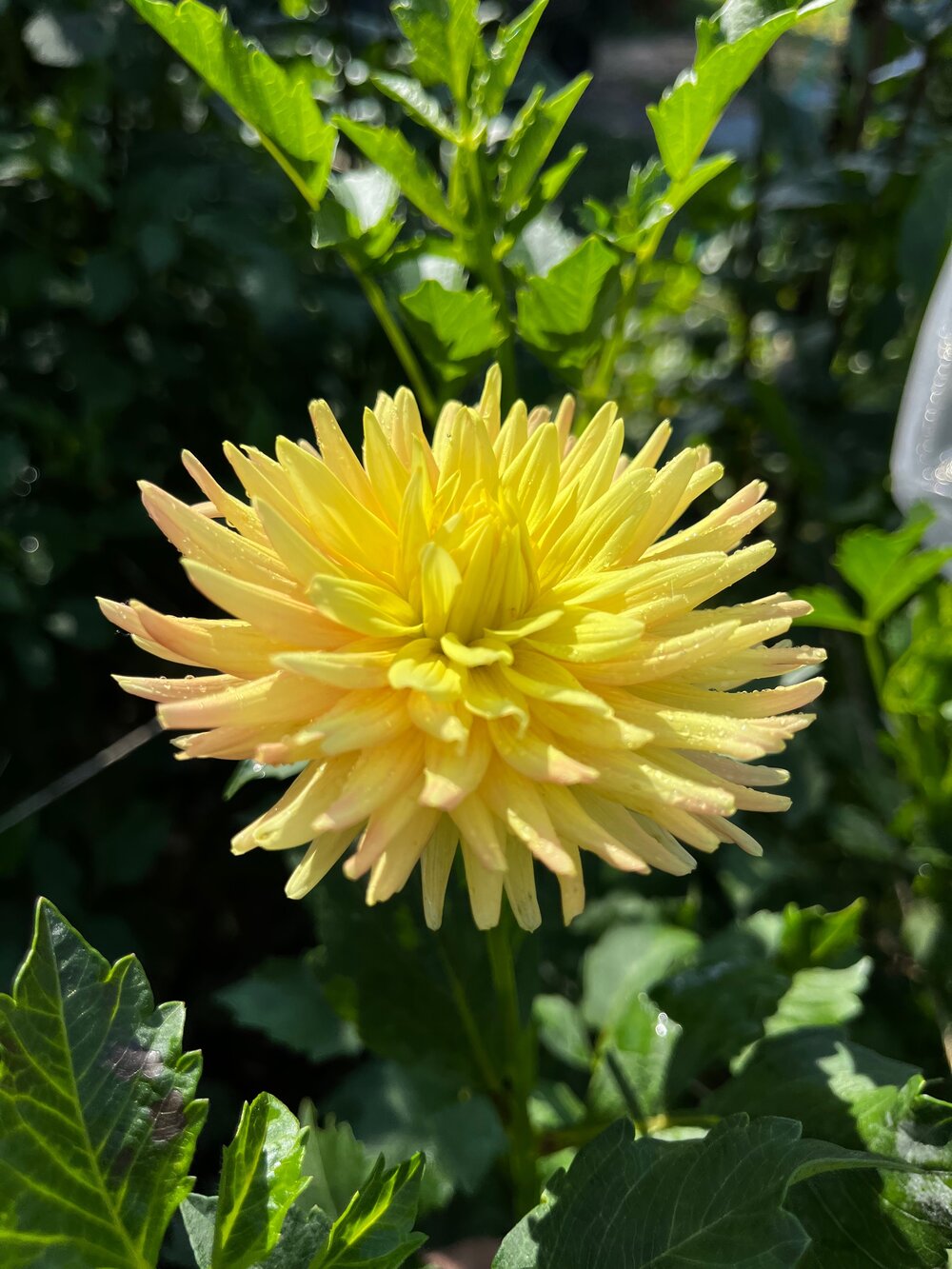

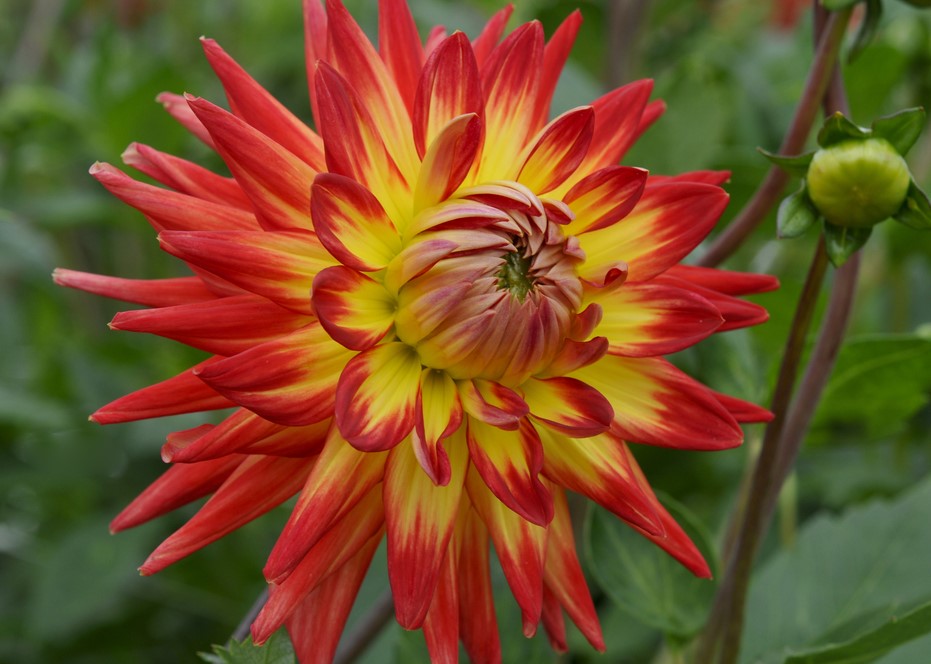
The cement path ended and a small earth ramp led onto a wide grassy path, that led to our large lawn, boardered by various garden beds. I continued across the lawn, now running ( my usual childhood speed when on a happy mission in the garden ), past the long rosebed filled with lovingly tended, memorably coloured and scented tea roses, bordered with sweet william and a few scattered marigolds ( to help with aphids). My father loved the roses and for an occasion would pick them and spend much time arranging the roses in a simple grey rounded ceramic vase. Today, i have this vase, filled with imitation roses which i occassionally arrange and rearrange to get just right! The inherited trait of a sensitive eye and heart that savours beauty and colour.
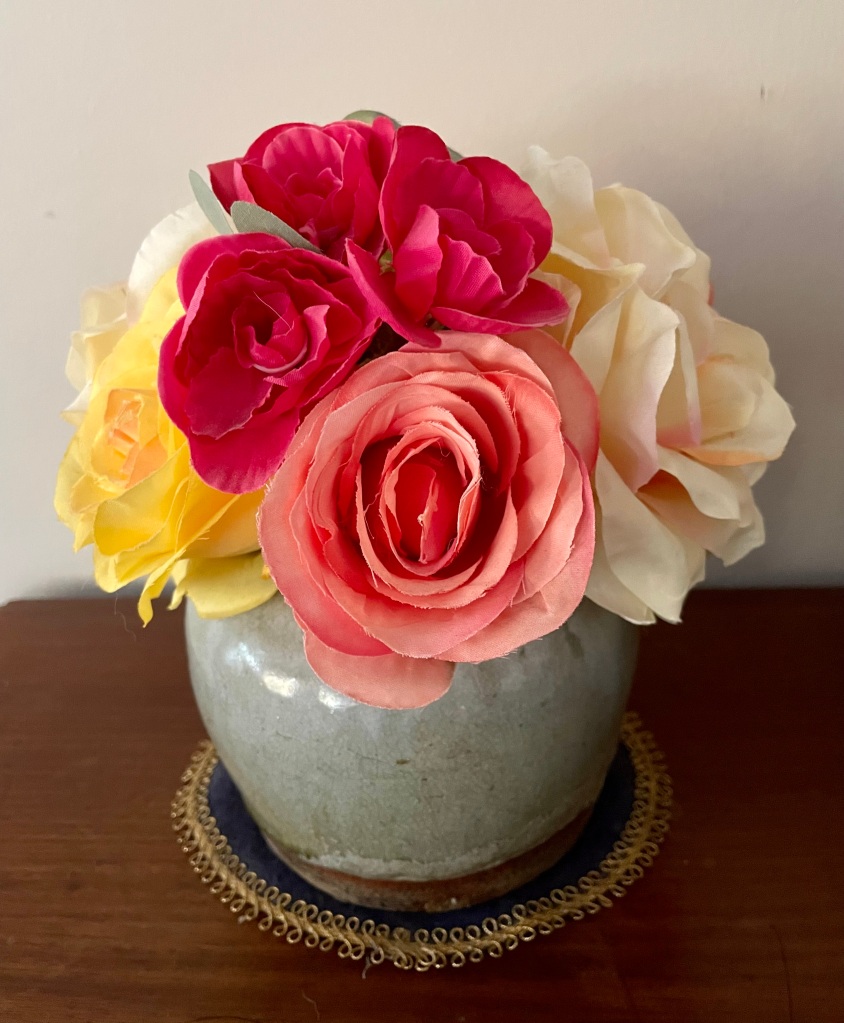
With a barely noticeable gentle downslope, began a grassy curving path that led past a huge rhubarb plant nestled between two tall fruitful cherry trees on the right and a lovely cedar tree on the left. Under that small cedar tree I had a quiet and simple “fort”, with a swept earthen floor, walls of curved cedar boughs….i don’t recall on what i sat, perhaps a lower curved bough or perhaps just the powdery earth….i sat and mused, soaking in the greens and the scents of my surroundings. At Eastertime, i would pick mosses from rocks lining the flower beds and tiny purple and yellow primroses which bloomed in the rockery and garden beds near the cedar fort, and would decorate little baskets for our table, perhaps lay a tiny chocolate egg on the moss….my Mum used to hide jelly beans in the house, and we kids would find them, sometimes long after the holiday, in imaginative hidden nooks and crannys in our rambling multiroomed house.
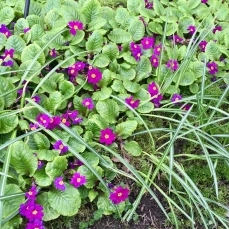
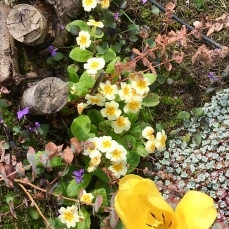

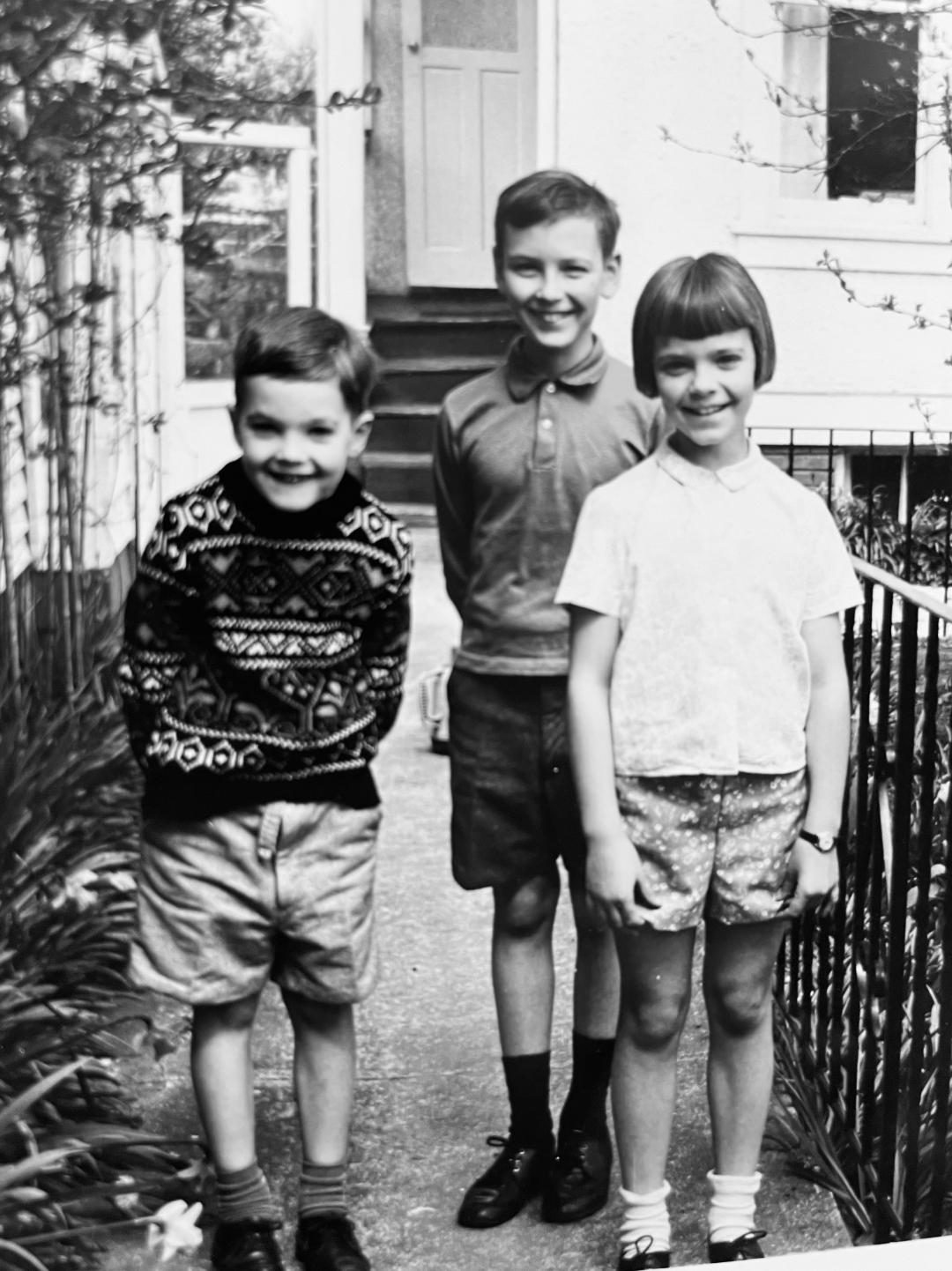
Finally I reached the vegetable garden, two large areas of rich soil. Every few years, large piles of manure, both cow and mushroom, would be dumped on the edge of our sidewalk, and my brothers and I and our parents all took turns using the spades to fill the wheelbarrows and take loads around to where the rest of the family team would dig it into the soil.
There were two rows of lettuce, also Swiss chard, broad beans, kholrabi and string beans, tomatoes, and vegetable marrows, which i have recently been educated to understand were overgrown zucchinis!! I pulled two lettuce, usually a Romaine type of leaf, though we also grew tender butternut lettuce. The dark brown moist soil hung around the roots, and I would shake it off while holding the lettuce as far away from myself as i could. Sometimes there were little slugs that fell off too.
I ran back to the house; we rinsed the leaves well, patted them dry with a tea towel and served them plain on a platter. To this day, I love to take a full lettuce leaf, fold it into a wrap type structure ( the filling is lettuce and the cover is lettuce :). Delicious, garden fresh, and the central crunchy stem, or stump, is the sweetest! As i commented on that, my father would say: “Pet likes the stump!”
It was only many years later that i realized that “Pet” was the nickname of my paternal grandmother, Peternal Emilie Holloway Dolman. ( please see upcoming blogpost!)
Pet’s granddaughter, Jennifer, also likes the stump; my Gary faithfully leaves me a small section or two of lettuce stump sitting on the counter, after he takes the leafy part in preparing his lunch sandwich☺️💚
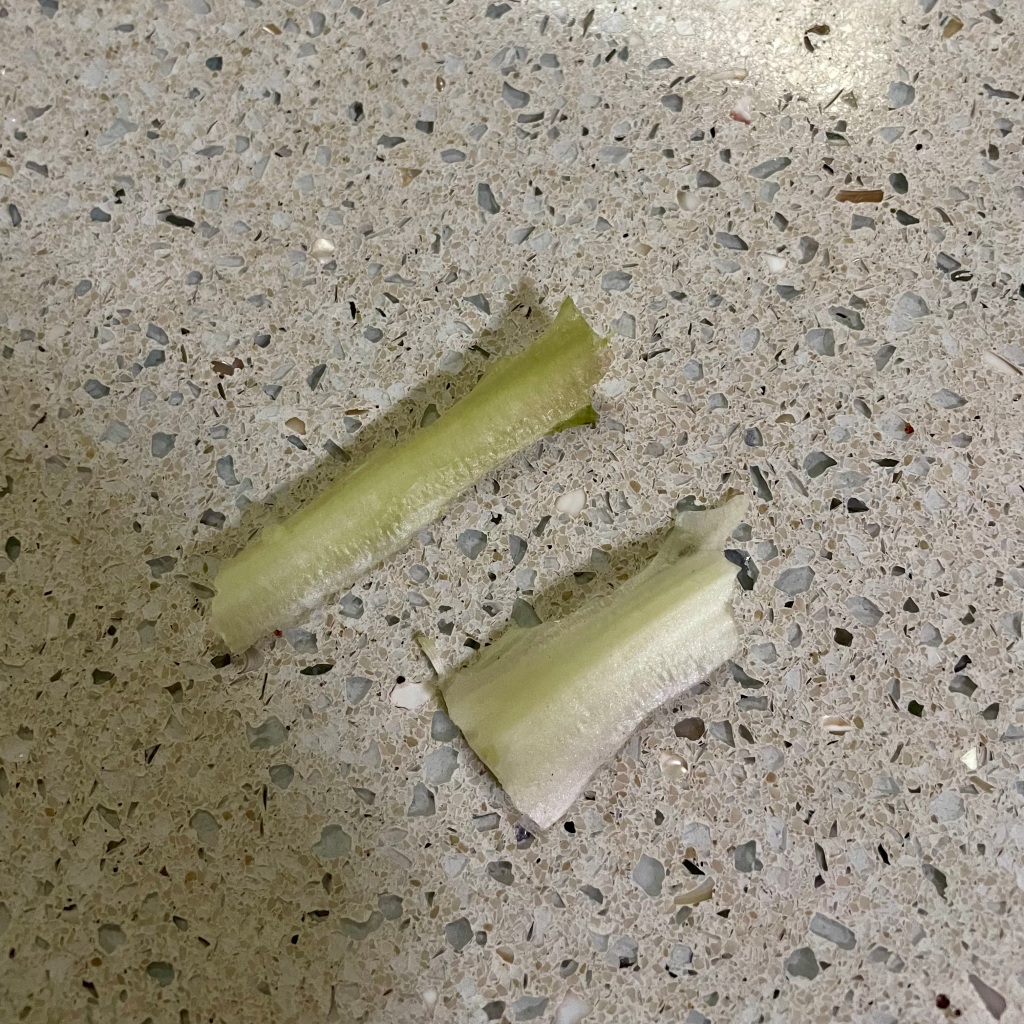


Here is a photo of lettuce grown at Mayne Island this past summer ( the farmer had kept the roots on and bagged them…) It was a HUGE lettuce, much fuller than the ones i recall, but the taste and scent of the fresh leaves and crunchy sweet stems transported me back to my childhood lettuce leaves and inspired me to hop, skip and run down memory lane into my childhood garden to the sweet and beautiful plants carefully tended and lovingly grown there.
Unfolding Recollections and Reflections
When I was seventeen….
Around the time of my 17th birthday, after my Grade 12 highschool year came to an end, my Mum handed me a file folder filled with typewritten pages in English. They were covered with edits and corrections some in pen, some in pencil and in different handwritings. It was the first three chapters of my deceased maternal grandmother’s memoirs. These chapters were self- translated, by Granny herself, into English from the original German. I could make out both my mother’s handwriting and my Granny’s amongst the editing, as well as another hand, probably that of my Granny’s good friend, Lois Field.
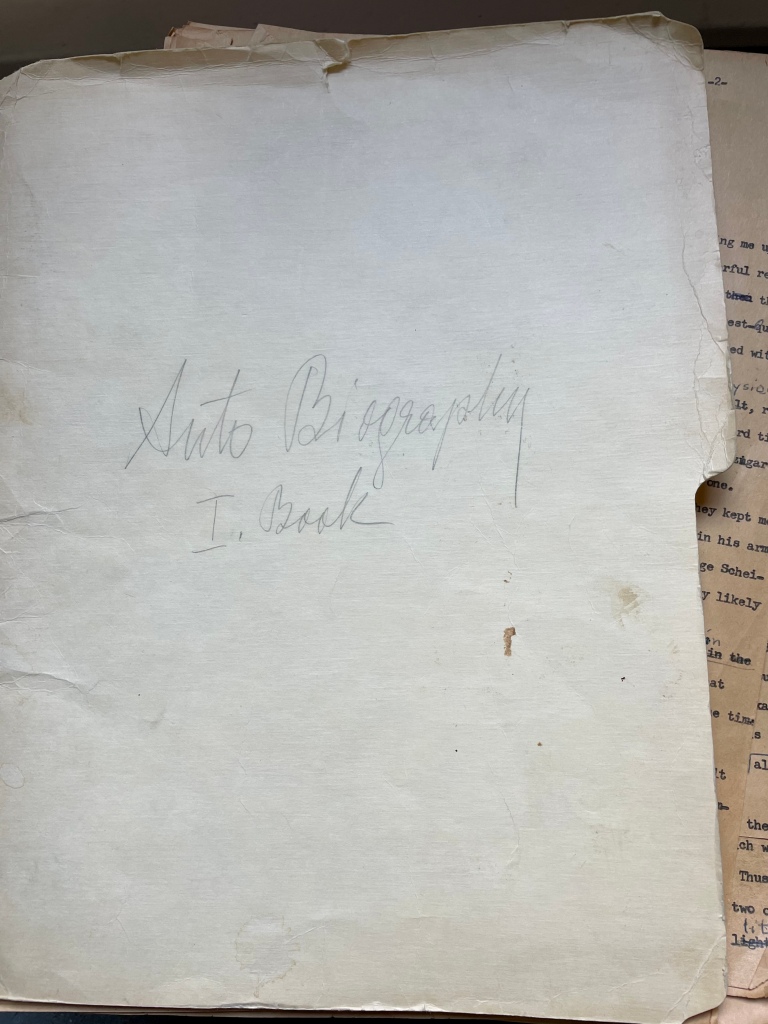
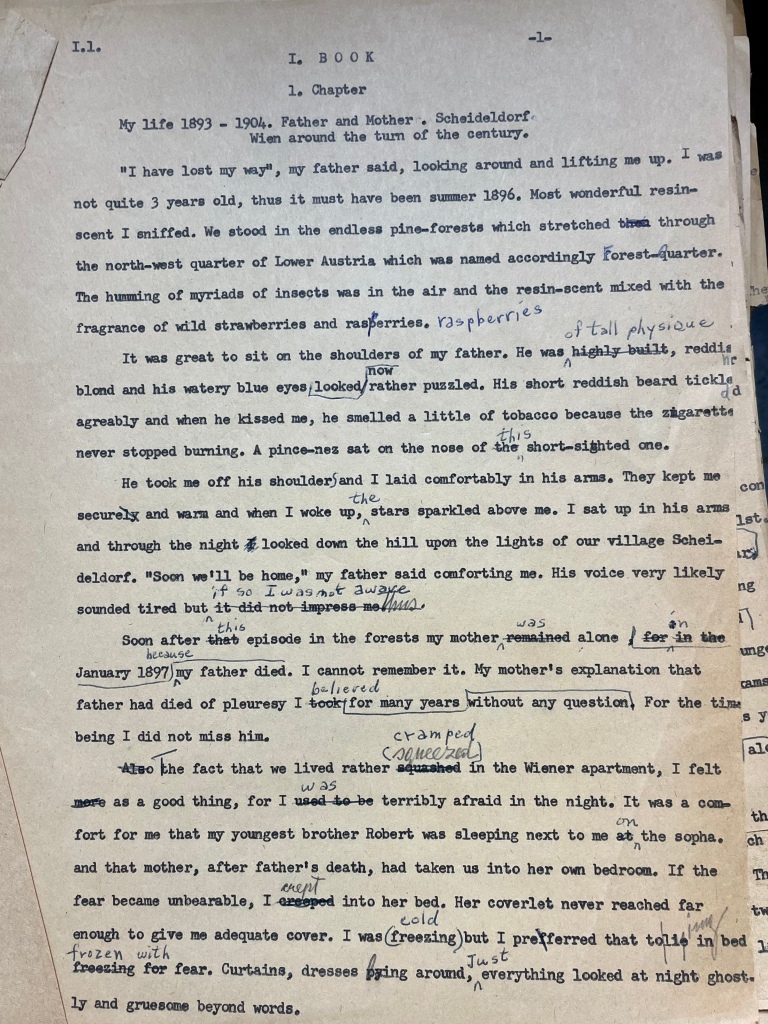
Granny had died five years previously, May 17, 1970, when I was almost twelve years old.
My younger brother, Peter and I, were sent off to Bowen Island with school friends and their parents for the weekend. Upon our return, we children were told of Granny’s passing while sitting at the dining table for supper. The timing of our Granny’s death was such that it came only one day after my Mum’s own birthday on May 16th….As a child of eleven going on twelve, I thought that particular fact was deeply unfair and sad, and my child’s tears sliding quietly down my face were shed for my dear Mum, sitting quietly across the table from me.
Our family life was different without Granny’s presence in our lives.
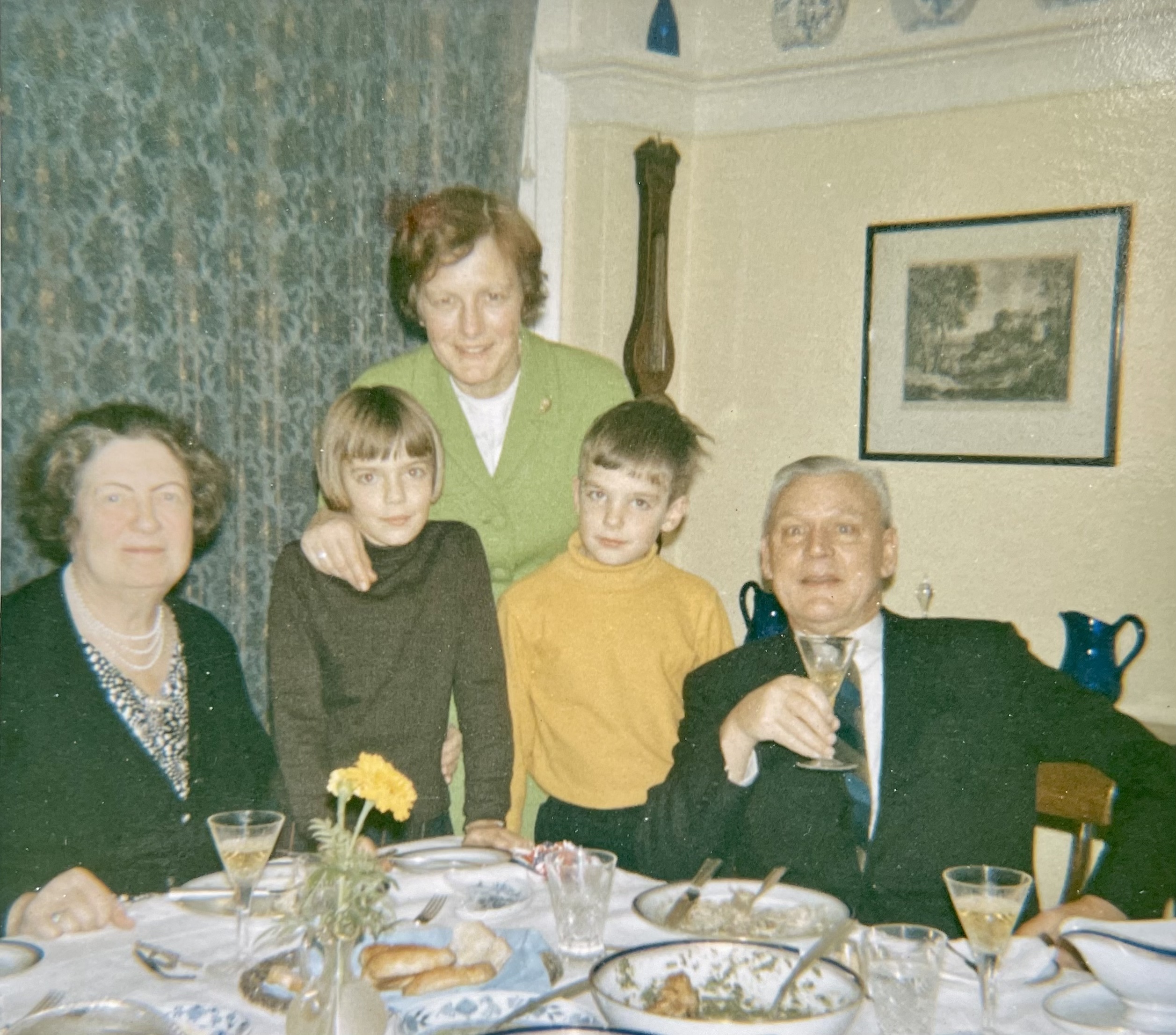
Family dinner celebrating Granny’s birthday, ca. 1968. My Dad looking rather jolly! Elder brother taking the photo.
Reflecting now as an adult, I’m sure our Mum’s loss of her mother from her life was enormous. And only more recently have I also wondered about Mum’s own emotions when she handed me those first chapters when I was seventeen. Did this evoke any memories and feelings she had experienced when she had just turned seventeen? She had just fled for her life from Vienna, the city of her birth, her father had been murdered, and she herself, along with her mother and older sister were now refugees from Nazi terror, staying in London, May 1938.
The first three chapters of Granny’s Recollections….
I immensely enjoyed those three chapters, recognizing many stories which my Mum was fond of recounting to us children (and which I now repeat to my own children!), of little Annerl and her brothers. The additional details and new stories all fascinated me. I read and reread and wanted more.
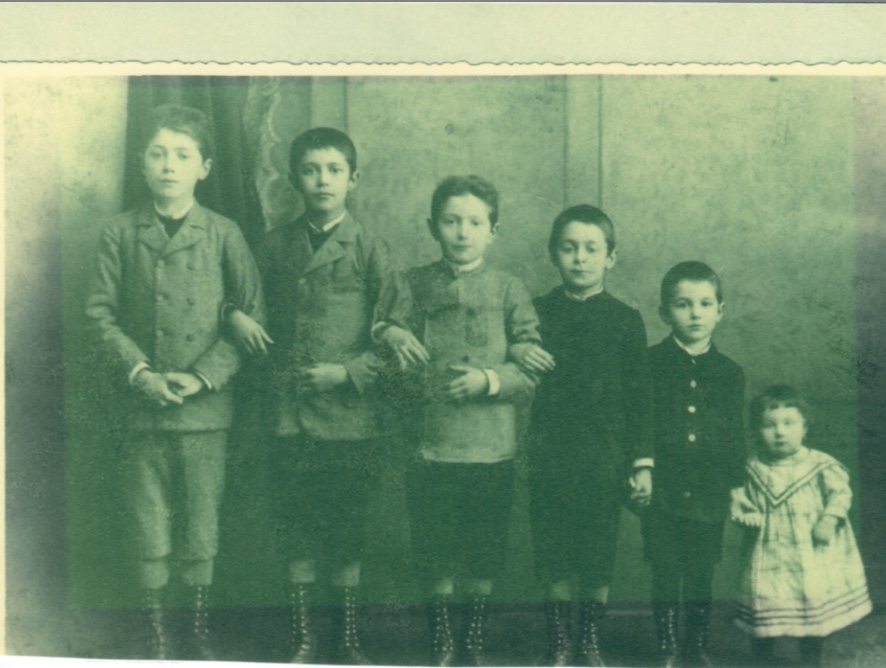
Taught by our mother, my brothers, John and Peter and I could from a young age all recite, rather like a mantra, our Great Uncles’ names in birth order: “Benno, Leo, Oscar, Frederick and Robert”. Anna (our Granny) was the little sister. Their parents were Malvine Gutmann and Siegmund Mahler. One discovers in the third chapter that he is a first cousin to Gustav, the composer, and conductor of the Vienna State Opera. 🎶
The first three chapters also covered young Annerl’s primary school experiences and escapades, again many of which we had heard repeatedly from our Mum over the years, and stories of the brothers, their artistic abilities and the jobs they obtained with the help of the rich branch of the Gutmann family. (Malvine’s father, Bernhard, was from the poor branch!) There’s also a hilarious story of a dancing teacher who was hired to teach the teenage boys to dance; and this resonated….our own Mum had given John, Peter and I waltz lessons in her desk room study. And the five boys and Anna all were musically gifted and played chamber music together at home, and artistically gifted. They crafted a tiny fleet of ships of balsa wood and designed games for them. Granny had a few ships, kept in a little tin, which she inherited after her beloved brother Frederick passed away in August 1958. We then inherited them, after she died, but when i enquired recently, my brothers didn’t have them. One cannot keep everything!!
My childhood memories of my Granny, as well as these three chapters of the memoir, and the stories and expressions my brothers and I still repeat today, reinforced the family tradition to recount stories humourously and usually with the laughter directed at oneself. This was a huge family value, which was passed on over the generations, a gift for which I am so grateful and hopefully it’s being passed on to our children!
When I was forty-four….
Please fast- forward 25 years with me, to the year 2000. I was now 42 years old, happily married with three young sons, ages 9, 7 and 4. We had just returned to the Vancouver area after living and working for 6 years in East Malaysia, Borneo.
During the time we had been away, my father had passed away (my mother had already passed in 1988). Our childhood family home was rented out, which meant all the belongings of my father’s 50 years in the home, and my mother’s 33 years, had to be stored somewhere….much had been distributed between 6 adult children, but much remained! My father was a collector of antiques and medical history books.
Shortly after we returned, a visit to my older brother John’s home revealed his over stuffed crawl space. The first box he hauled out for me was heavy with large binders of typed manuscripts.
One of these had a shiny wooden cover and was laced with a black silken cord which held 811 typed pages.
I opened the cover.
The language was all in German. On the title page, I saw our Granny’s name; then, to my astonishment, I saw my name in her European slanted script.
I borrowed a German English dictionary from John to look up a few words, and in those following few minutes it was revealed to me that this was our Granny’s memoir, “My Recollections” and that they were
“dedicated to my grand- daughter, Jennifer Elisabeth Dolman” – me!! ( when I was an infant, 1958, which is when she finished the memoir writing).
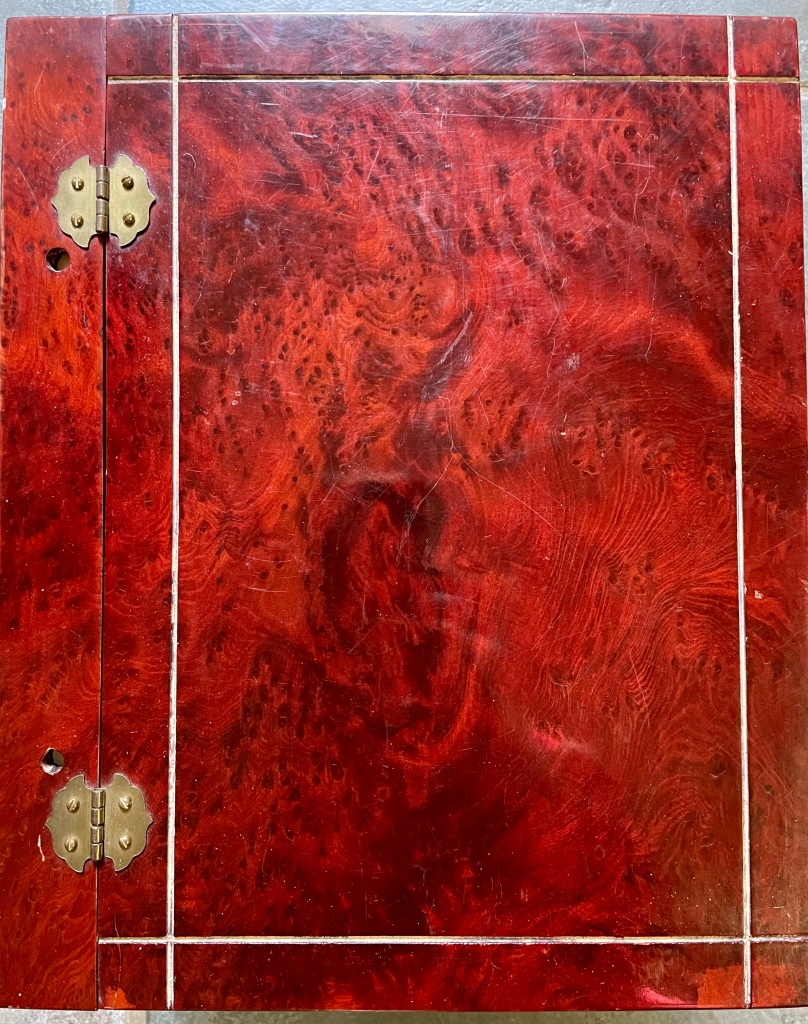
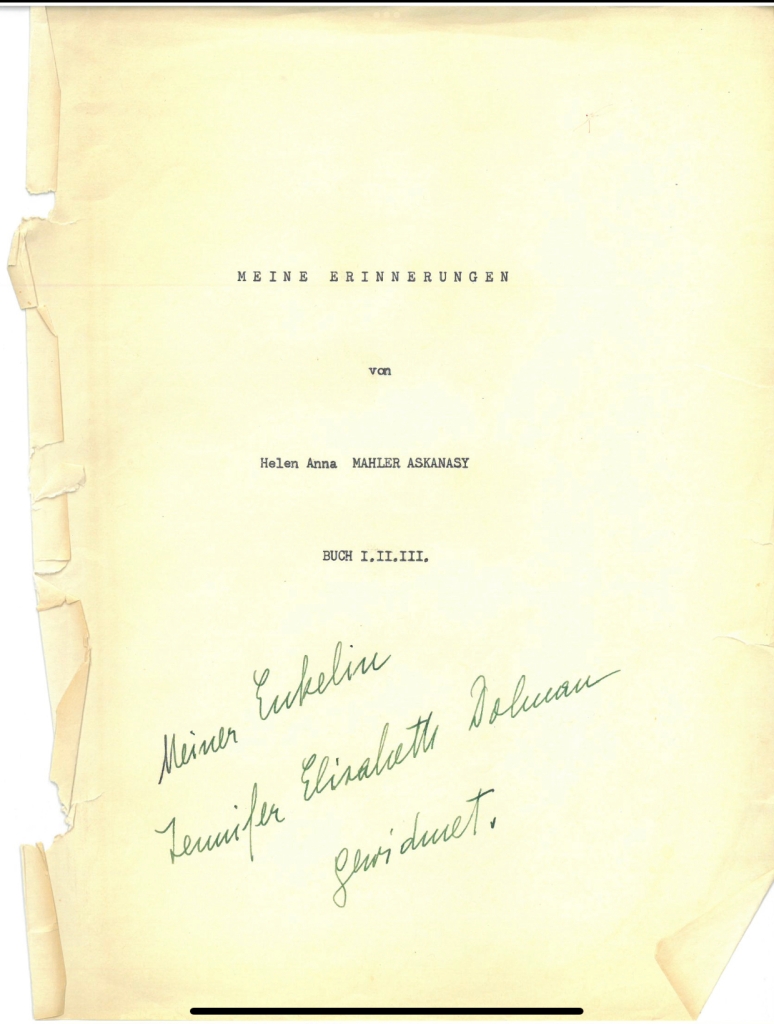
Over the next two to three years while we were in Vancouver, I also spent some time exploring photo albums, again with a German English dictionary. One day I suddenly became aware that my Granny had been only 44 years of age when she fled Vienna with her teenage daughters and a few days later was widowed by the murder of her husband Simon in the Vienna Gestapo prison. It suddenly struck me that my Granny, whom i had only known in her 70’s, was a young passionate woman of 44, my age then, when these traumas had occurred. That was very moving for me, and in fact, opened up a huge chasm of pain. My mother had shared so little of the trauma, but it was there, and over the next years, it was my turn to experience it deeply.
Now I’m sixty- four….
Today, as I write, the years have unfolded so much more of the Recollections and reflections, and there has been great progress and exciting news!
The memoir was fully translated into English 2017-2019 by an excellent team of translators, Anuschka Elkei and Dr. Uma Kumar. It is available online at the link below: you can hover and read it from the website, you can or download it and read it on your computer or print it.
https://collections.vhec.org/Detail/objects/9347
The original German typescript was donated to the Collections Archives of the Vancouver Holocaust Education Centre, along with some other items, and the English link in March 2021.
Exciting news in October 2022….
And, we have the recent wonderful news that the German edition has just been published in Vienna, Austria by Danzig & Unfried (October 2022). The publisher, whom we met in June 2018 in Vienna, is Dr. Ernst Grabovszki, a professor at Universität Wien in the department of Literature. The book is for sale on a number of websites, including Amazon. The title in English is:
We danced on the Volcano: My Life in Vienna 1893-1938
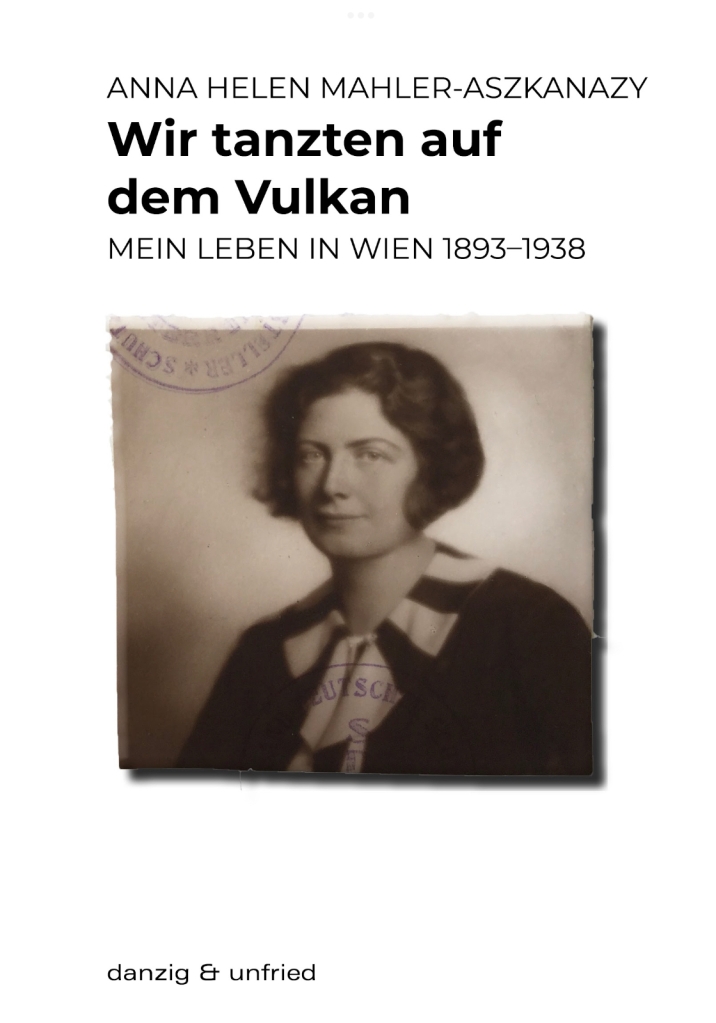
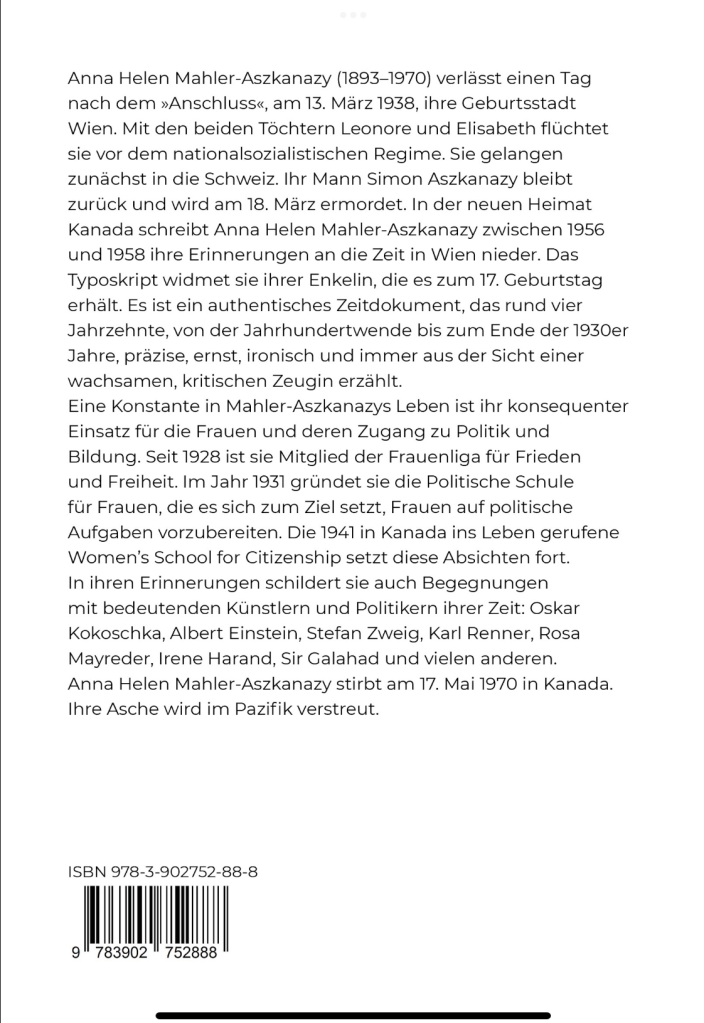
Below is the English translation of the back cover:
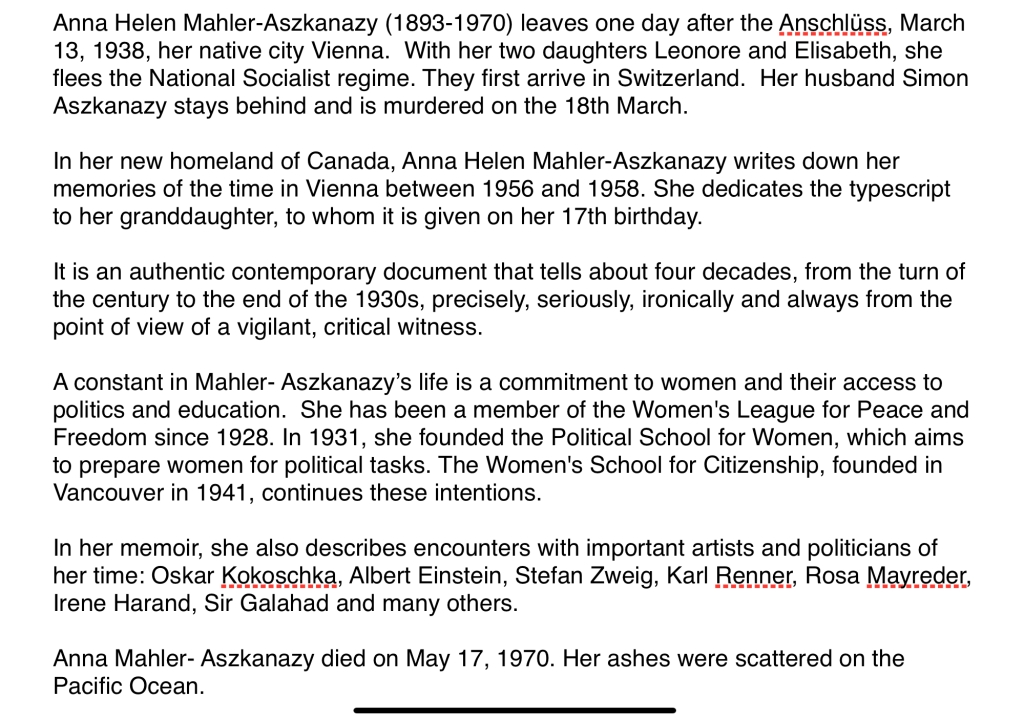
And here is a YouTube video of “yours truly” reflecting on some questions from our publisher, Dr. Ernst Grabovszki.
And there’s more: in honour of International Women’s Day, a book launch is happening at UBC on March 6th, along with some speakers. ( a local Vancouver event).
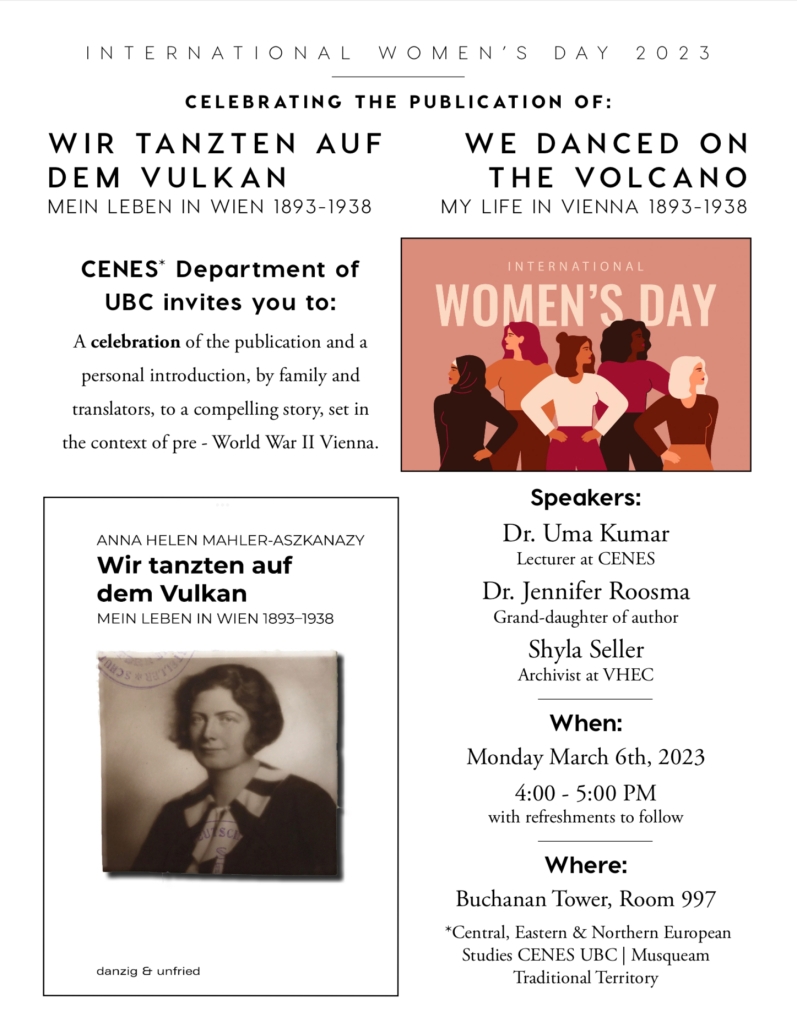
Reflecting on all this at 64, pushing 65 years of age, I realize that was the age my Grandmother was writing her memoirs.
Perhaps it’s time for me to do the same😊
Ash Wednesday: keeping in step with the seasons of the Holy Spirit.
Four years later: man’s inhumanity to man still atrociously and viciously apparent, locally and worldwide; Ukraine’s deadly invasion by Russia dominating the world news. Although i did not take time out to attend an Ash Wednesday service, today and in the 40 days of this Lenten season, I will take time for self- examination, repentance ( as the line between good and evil runs through EVERY HUMAN HEART) and will remind myself to be thankful daily for a loving Redeemer God whose mercies are new every morning and who remains faithful even when we are faithless, because of Jesus’ life, death and resurrection. I need this yearly reminder!!!
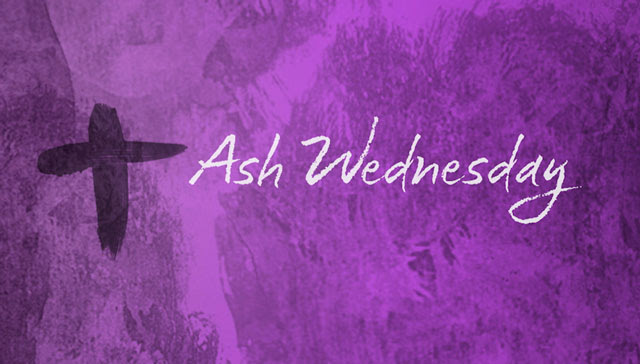
“‘And yet even now,’ says the Lord, ‘return to me with all your heart . . .’” – Joel 2:12
The morning was grey and dark….”as usual”, I said to myself. The almost daily greyness matched my low feelings which had settled in to stay, it seemed, over the past several weeks, or was it already months….?
I took the dog out, and at Dude Chilling Park he enjoyed playing “catch me if you can” with a couple of dogs and a tattered but strong stick.
I had texts and a phone call with a struggling student. I’m slowly getting used to being on call basically 24/7 for campus ministry. Including my own three sons, this year I have many many “kids” 🙂
A bit later, i headed for downtown in the car to meet Gary for lunch…it was also Valentine’s Day, and he was excited to walk together from The…
View original post 1,225 more words
Women’s History Month March 2022: Irene Harand and my grandmother: their work, friendship and example.

Introduction:
During our childhood in Vancouver, “Harand” was a household name in our family, as my brothers and I overheard German conversations between our Mum and Granny, Viennese German being their mother tongue.
My brothers and I are unsure whether we ourselves ever met Irene Harand; perhaps when we were very very young, before our clear memories. Family photo albums only show Irene Harand visiting in our Granny’s Lynn Creek, North Vancouver home in 1941,’ 45and 1955, before we were born.
The latest recorded written visits I have of my Granny visiting Irene and her husband Frank in their home in New York City, were in 1960 and in 1967. The September 1967 NYC visit, a few months after the Six Day War, alludes to Irene Harand’s frail health and to the scars she bore from her earlier activism, but also to her and my Granny’s ongoing interest in world politics, at ages 68 and 73 respectively. ( see excerpts from AHA’s unpublished travel report: My Journey in Seach of My Lost Identity, 1967, at the end of this blogpost.)
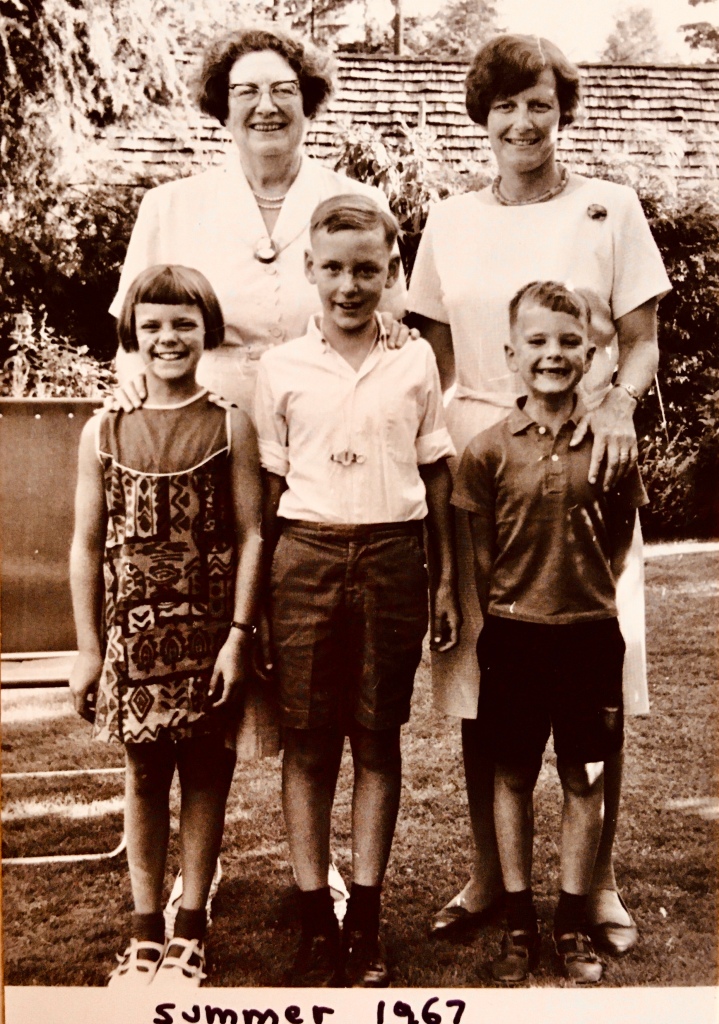
Regardless of whether we met Irene Harand or not, we children certainly had absolutely no idea of the dangerous but important work with which both our Granny and ”Harand” had been involved in during the 1930s in Vienna. As children, we knew our Granny’s strong hugs against her ”prickly” diamond brooch, her hearty laugh (often directed at her own foibles), and as someone who came to visit us weekly, Bon Ton pasteries in hand, and with whom we happily played dominoes and card games.
Our Granny (Anna Helen Aszkanazy/Askanasy, or AHA, for short), died on May 17th, 1970, at age seventy- six years, one day after my mother’s forty- ninth birthday and three days before my twelfth birthday. Granny’s ashes were scattered on the Pacific Ocean, according to her wishes.
Irene Harand died in 1975, and her ashes were carried back to Vienna and buried in a place of honour in the ZentralFriedhof cemetery.
Our mother did not dwell on the traumatic days of her own teenage flight or tragic losses, nor on Granny’s activism and work, and so it has fallen to me, decades later, through reading my grandmother’s prolific writings, to uncover and understand more of my heritage and presently, to focus in particular, on the contributing role of her good friend, Irene Harand.
My Granny was a very strong personality, and those of you who may have already sampled some of AHA’s writings, would likely agree with me that she vividly described her thoughts and feelings on paper. Aware of the unrelenting honesty with which AHA expressed herself, her notably sustained admiration of Irene Harand and their enduring friendship which she described in her memoirs, is therefore, to me, all the more heartwarming and inspiring to read.
Their deep bond was forged during the tense times of the 1930’s in pre- Anschluss Vienna, where they worked collaboratively to assist the early refugees fleeing the Nazi regime. This bond continued when they themselves as traumatized bereft refugees of Nazi terror, met up in London, England; a few months later, they were together at the time of the Évian Conference, July, 1938, where they along with their Women’s Organization for World Order, tried in vain, to speak up for the necessity of countries to open wide their doors to European Jewish refugees. Their friendship and collaboration continued in both Canada and USA as newly arrived refugees later in 1938, and into the early 1940’s, during which time they both advocated unceasingly, with small but not insignificant results, for increased admittance of refugees into both these spacious countries. For example, in 1940, Harand came from New York to Ottawa to help AHA advocate before the head of Canadian Immigration for the admittance of a few Jews that AHA could personally sponsor.
For a brief introduction to Irene Harand’s life, here is a portion of an article about her in encyclopedia.com. The link to the complete article is included below. It is worth reading in full!
IRENE HARAND (1900-1975)
Austrian leader in Vienna who attacked the evils of Nazism, anti-Semitism, and religious intolerance and was honored by Israel for her efforts. Born Irene Wedl on September 6, 1900, in Vienna, Austria; died on February 3, 1975, in New York City; daughter of a modestly well-to-do Roman Catholic father and a Lutheran mother; attended the School of the Desmoiselles Diwisch for two years; married Frank Harand, in 1919; children: none.
In the late 1920s, Irene Harand was a prosperous and happily married young woman when her innate sense of justice first drew her in the direction that was to change her life. The alteration began with a series of minor incidents seeming at first to have little to do with the often brutal world of Austrian politics. She had simply become concerned about the plight of an aged noble she was acquainted with, who had lost his fortune and then been refused assistance by his son who held the family castle and lands. Seeking justice on behalf of the old gentleman, Harand consulted a number of lawyers and paid a substantial amount in fees without seeing anything accomplished. Then she consulted Dr. Moritz Zalman, a well-known Jewish attorney who showed enthusiasm for the case. When the question of fees was raised, Zalman told Harand that if she could give of her energies to help the old man, he could volunteer his legal skills.
Years later, Harand explained this gesture as a turning point in her thinking. Although she had never acted as an anti-Semite, she realized that she had unconsciously held the notion, almost universal within Viennese Gentile society, that Jewish lawyers were avaricious and unscrupulous, and she had consulted only non-Jewish attorneys until she approached Zalman. “I blushed when I thought that a Jew … was ready to serve a non-Jew as no Christian I had met had been willing to serve,” she said. “I determined then and there to give my life to wipe out this shame antisemitism was bringing upon Christians and Christianity.”
“Harand, Irene (1900–1975) .” Women in World History: A Biographical Encyclopedia. . Encyclopedia.com. 24 Jan. 2022 <https://www.encyclopedia.com>.
How my Grandmother’s and Irene Harand’s spheres connected:
My maternal grandmother, Anna Helen Aszkanazy (AHA) was speaking at an evening conference ( her topic was birth control promotion), and it was during that evening that she had, unknowingly, become an inspiration to Irene Harand, who attended the lectures that night in 1932 and heard my grandmother speak.
“Once an organization called “Kleinrentnerbewegung” (Small Pensioners Movement), run by a Dr. Zalman, invited me to speak. It was a venture called “Gesprochene Zeitung” (Oral Newspaper), and Dr. Zalman was a member of the staff. [there were many speakers that evening] When my turn finally came, I spoke spontaneously and with my usual passion, for I knew the subject so thoroughly, I could have done it in my sleep. Despite the overwhelming crowds, I experienced a feeling of futility, and yet, it was on this very occasion that I inspired a woman, who later became my best friend, to speak publicly, exactly as Agnes Macphail of Canada, unknowingly, had inspired me in Prague.” [ Book 3.1; My Recollections, by Anna Helen Aszkanazy]
[ AHA was inspired to learn public speaking skills at the age of 35, when she attended a meeting of the Women’s International League for Peace and Freedom in 1929 and was impressed by Agnes Macphail’s speech, Canada’s first woman Member of Parliament!]
“Dr. Zalman’s then colleague and secretary, Irene Harand, sat next to him and, as she often told me later, he had turned to her and said, “See, Frau Harand, you should speak like this woman.” To which Harand hopelessly shook her head and replied, she would never manage it. But Dr. Zalman pressured her to do so by encouraging her, over and over again, and Irene Harand became a speaker who was a thousand times better than me. I could only motivate my audience to clap, but she could bring her audience to tears––including me!”
[ Book 3.1; My Recollections, by Anna Helen Aszkanazy]
Shortly after, AHA was invited by Frau Irene Harand to attend an anti- Nazi movement meeting, where Harand spoke, announcing a newspaper, “Justice”, and looking for board members to join, as well as promoting the distribution of an already printed anti- Nazi pamphlet. The gathering was held in the law offices of Moritz Zalman:
“ …..in 1933, I had received an invitation from Frau Irene Harand to attend a gathering at Dr. Zalman’s offices. There I found, among others, the chief rabbi of Vienna––most of those present, including Dr. Zalman, were Jews. He opened the meeting with the statement, that something had to be done against the Nazis; he was thinking of starting a weekly paper, but as a Jew, he could not possibly be the chair–– an anti-Nazi movement must come from Christians. He introduced Frau Harand as a Catholic who had given him the idea of the newspaper and the idea of fighting racial hatred in general. Frau Harand stood up, and I saw an elegant, beautifully dressed, very interesting woman, who looked like a cross between a fashionable lady and a medieval saint. When she spoke, hesitantly at first, then with increasing vim and vigour, I forgot all else and listened in fascination…. Finally, she invited those present to join the board of the newly founded newspaper. She had written a short work titled “So, oder So” (Like this, or Like that), on one side the scales of justice, on the other the swastika. Each of us took a pamphlet, but I told her right away that I could not actively participate in the movement because my spare time was split between my work with the stateless, for the Women’s League and the Call Club, in addition to my household and children. Plus, I was writing.” [ Book 3.1; My Recollections, by Anna Helen Aszkanazy]
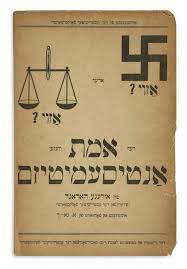
“ She said that since she had no children, she had more time. I invited her to give a lecture about her ideas at our Call Club [ AHA Led this group which organized twice weekly classes where women were taught to public speak and to be politically educated and involved.], which she gladly accepted; and it was on that occasion she told me how I had first inspired her to attempt public speaking. Her talk at the Call Club was a great success and, of course, she founded her weekly newspaper, “Die Gerechtigkeit” (Justice). The newspaper’s slogan was “World Movement Against Racial Hatred and Human Suffering.” Many women in our circle were critical of Irene Harand because, to our minds, she generated a much too conspicuous cult following; but I knew it was Dr. Zalman, and not she, who encouraged this. I became good friends with Irene Harand, but we were only able to meet over lunch in a café, usually at “Café Museum,” because she was overly busy and her evenings were filled with meetings and briefings for the newspaper. In addition, she had organized more and more refugee aid for anti-Nazis from Germany: soup kitchens, warming shelters, etc. But since Dr. Zalman’s party, who actively helped the “Kleinrentner Bewegung” (Small-Pensioners Movement) and had about fifty thousand followers, their help was very useful….
One day she phoned me. ” AHA”, she said, ” I am Catholic and am helping Jews; you are Jewish, now be so kind and help Gentiles.” That was how I became an expert on the plight of right- minded Gentiles (refugees) who opposed the freak Schickelgruber.” ( Hitler’s birth name/ nickname used by Churchill and AHA). I asked her to send me Christian refugees. From then on, the phone rang non-stop….we did not know if we were coming or going, but this is how we received first-hand reports of the goings-on in Nazi Germany. We saw wounded people who had been beaten up in concentration camps or who were injured during their escape.”
[ Book 3.1 of My Recollections, by Anna Helen Aszkanazy
The original German manuscript, as well as a link to the English translation, are found in the Collections of the Vancouver Holocaust Education Centre.]
https://collections.vhec.org/Detail/entities/11172
https://collections.vhec.org/Detail/objects/9346
Irene Harand went on to write a book, published locally in Vienna in 1935: “Sein Kampf, an Answer to Hitler” in which she systematically refuted each piece of Hitler’s outrageously anti- Semitic statements in his book “Mein Kampf”. ( which, unfortunately, is now available online in many languages and becoming horrifyingly popular!)
Harand’s book is available in German on Amazon.com.
https://www.amazon.com/Sein-Kampf-Antwort-Hitler/dp/3900766169
There is an English translation also, but I’m not sure how to access it…
http://web.nli.org.il/sites/NLI/English/library/reading_corner/Pages/HisStruggle.aspx
In the 2017 Haaretz article below are some quotes from her book, as well as some biographical details.
The Anschluss, March 12, 1938, and following:
Back in March 1938, Irene Harand was out of the country traveling in France and England (speaking to officials about her concerns for about the impending Nazi invasion of Austria), when the Anschluss happened. Here are some pages from my Grandmother’s memoir, written in her own imperfect English, about her meeting up again with Harand in England in April 1938. The context: my grandmother and her two teenage daughters had just arrived in England in April after fleeing Vienna into Switzerland the morning of March 13th, after the Nazis invaded on Friday afternoon, March 12, 1938. My grandfather did not escape in time and was arrested by the Gestapo while in their family apartment on March 15; after a failed extortion attempt, he was tortured and murdered in the Vienna Detention Centre, on March 17, 1938.

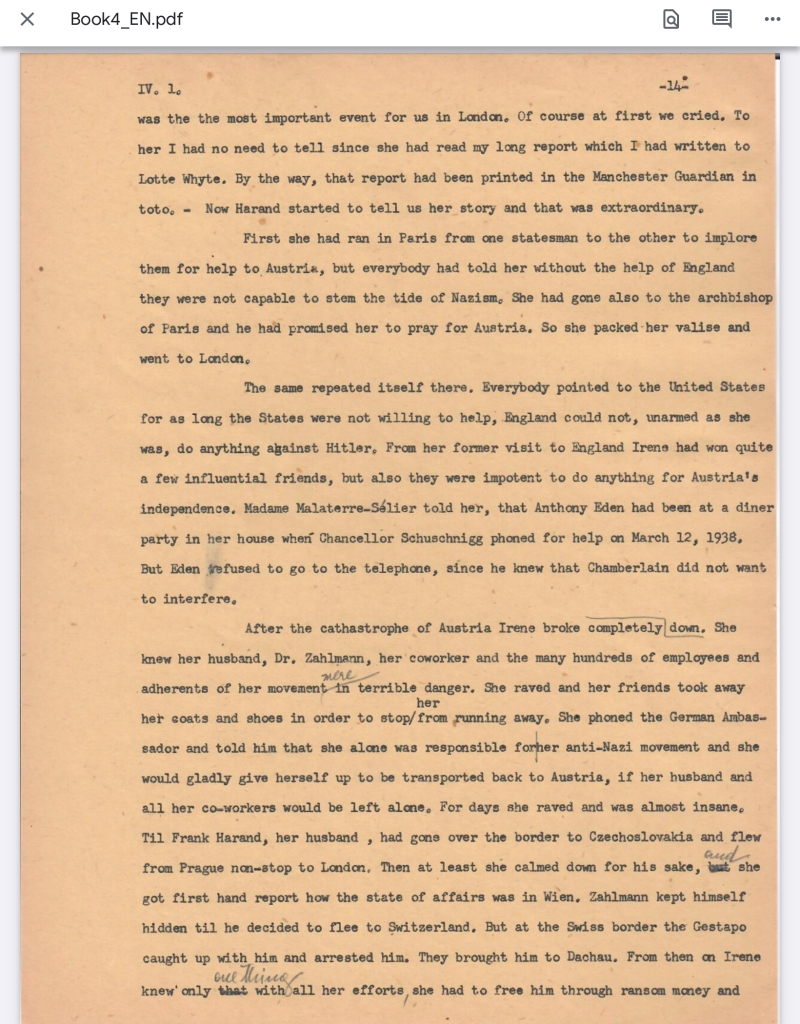

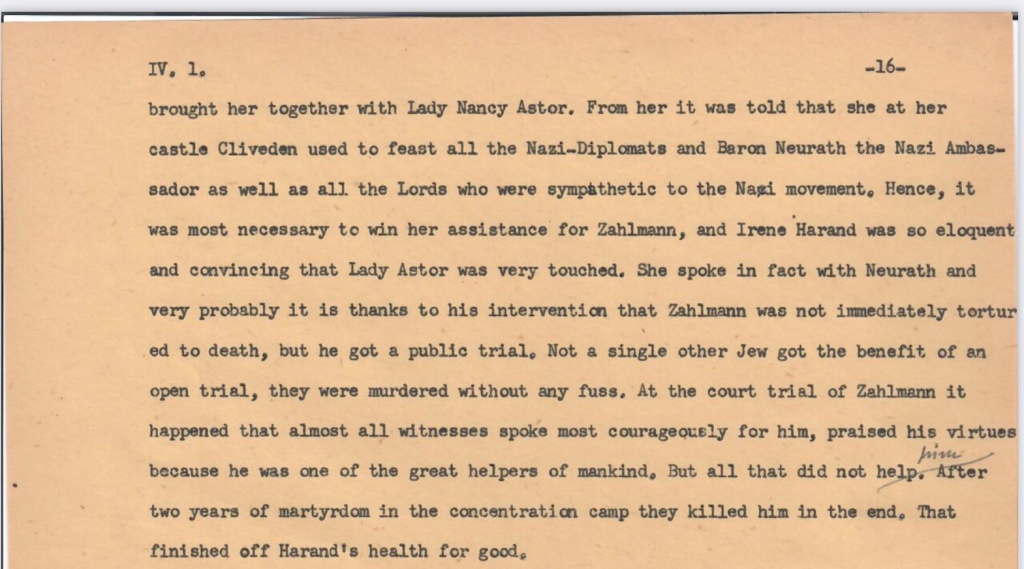
My Personal Reflections:
I wrote this post originally for International Holocaust Remembrance Day, 2022, because I wanted to highlight Irene Harand’s work on behalf of the Jews in 1930’s Europe, and her open and courageous fight against anti Semitism and the Nazis. I also wanted to remember her boss, Moritz Zalman and millions of other Holocaust victims.
I also specifically want to strongly stress the concept lived out in the stories above, that people (I/ we!) must look out for “the other”, as Harand did for the Jews, and as my grandmother did for the stateless and Christian refugees, as well, of course, for other Jews.
And, I appreciate, as did my grandmother, that Irene Harand challenged her to do precisely that!! Look out for and speak up for “the other”, not just for one’s own community. I heartily believe in this approach; without it, if we look only to our own personal, family, national interests, there will be no healing or thriving for our hurting world, our global village!
Additionally, for both International Women’s Day, March 2022, and Women’s History month, I wish to highlight the concept of women challenging each other to become involved in good works for the sake of peoples’ life and wellbeing. Let us not waste our lives, our abilities and possibilities, in the short time we’ve been given! Let us be upstanders rather than bystanders!
My grandmother herself had been challenged back in 1929 by Rosika Schwimmer of the Women’s International League for Peace and Freedom when they met in Prague. Schwimmer challenged my grandmother, who had travelled there to ask what she could do to help the world ( age 35): ” Look after the stateless!” And my Granny educated herself and did!!
Recently, as I have had more time to read and to reflect upon my maternal grandmother’s memoirs, especially in this season of our world history, the woman, Irene Harand, my grandmother’s ”best friend”, has both caught and increasingly held my attention. I am so thankful that my Granny recorded so much of Harand’s life, their meeting and their enduring friendship and their dedicated work that bonded them together during those terrible years. I am thankful that Harand has been recognized Righteous among the Nations, Israel, as well as in Austria, and is continuing to be recognized for her brave, important and selfless work. Apparently a movie of her life is in the making, in Vienna. The producer has been in touch with me for details and content from my AHA’s memoirs. Stay tuned!
I do hope this blogpost will help me convey to you, my readers, why I have found Harand’s story and its intersection with AHA’s so very inspiring!
PHOTOS
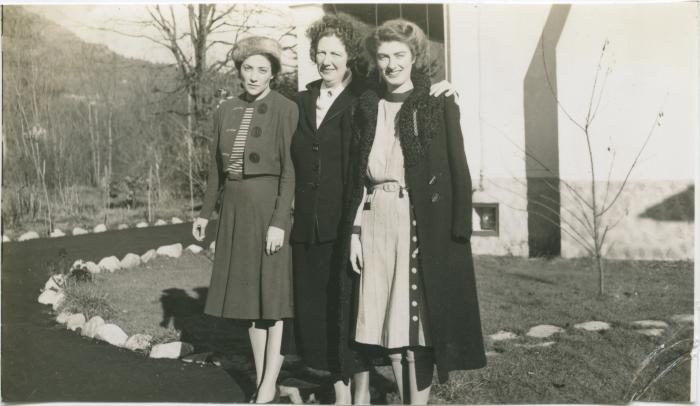
1941, in Lynn Creek, North Vancouver, Canada.
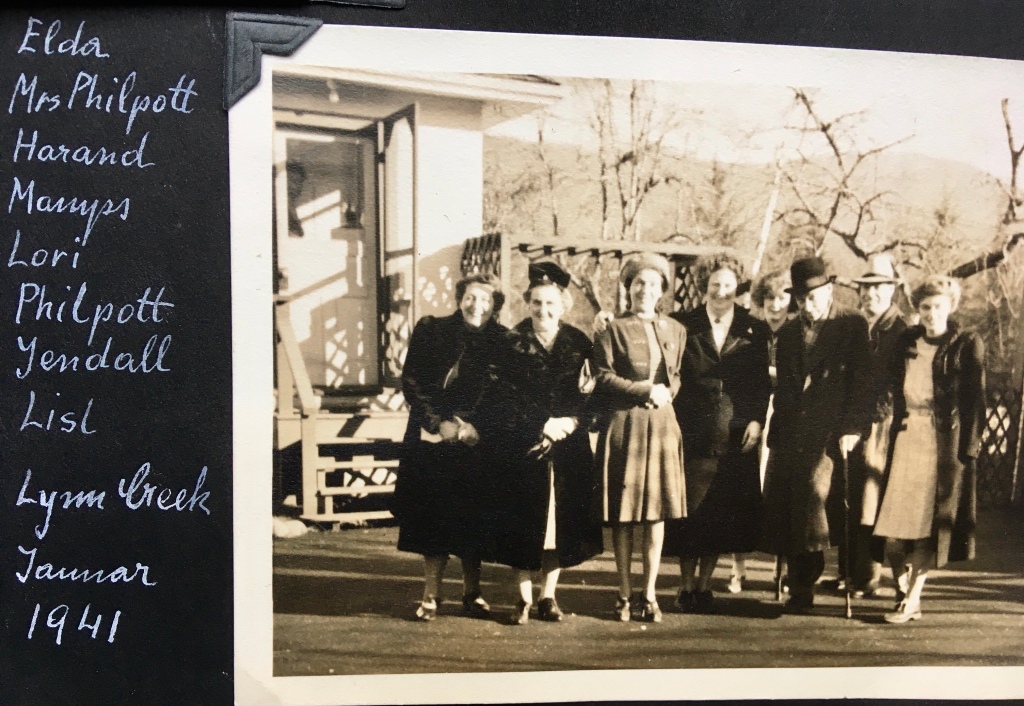
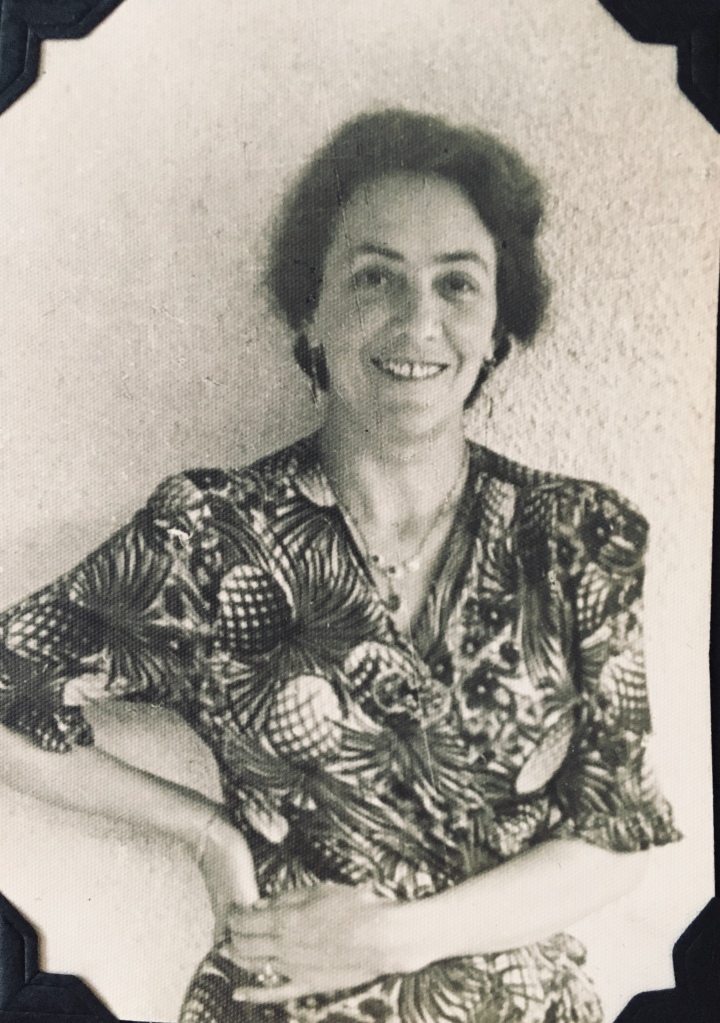

Below are excerpts from AHA’s 1967 travel report: My Journey in Search of My Lost Identity. They mention Harand and the UN, and AHA and Harand’s ongoing interest in the world political situation and the fate of the Jewish people in the midst. My Granny met Abba Eban at a Jewish art centre a few months after the Six Day War.

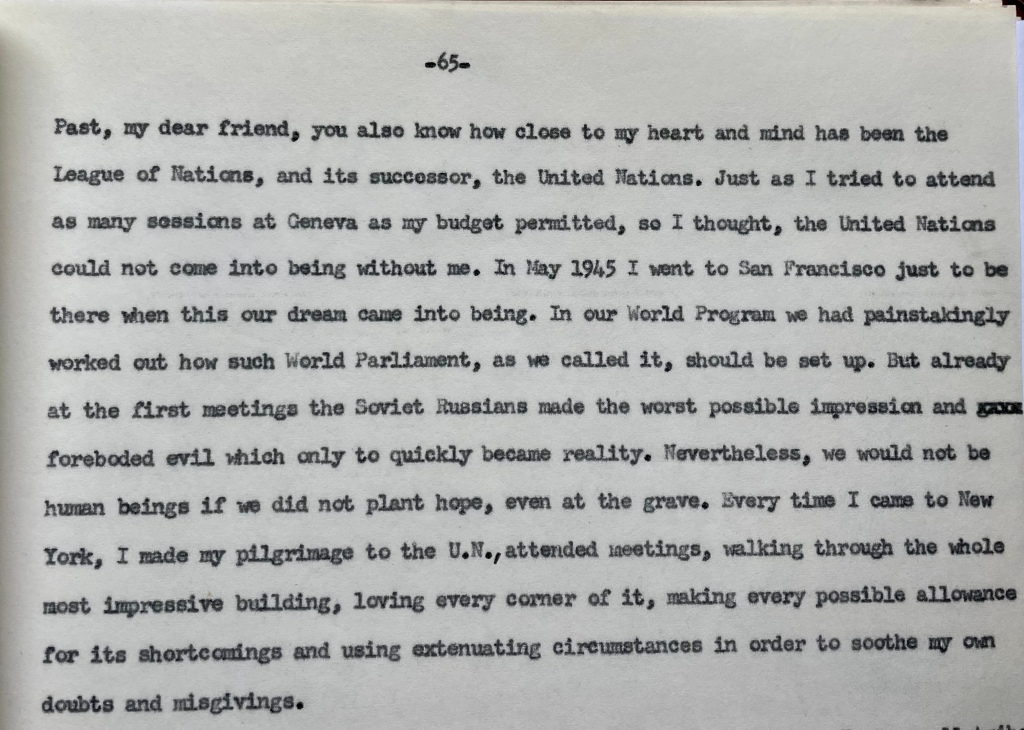
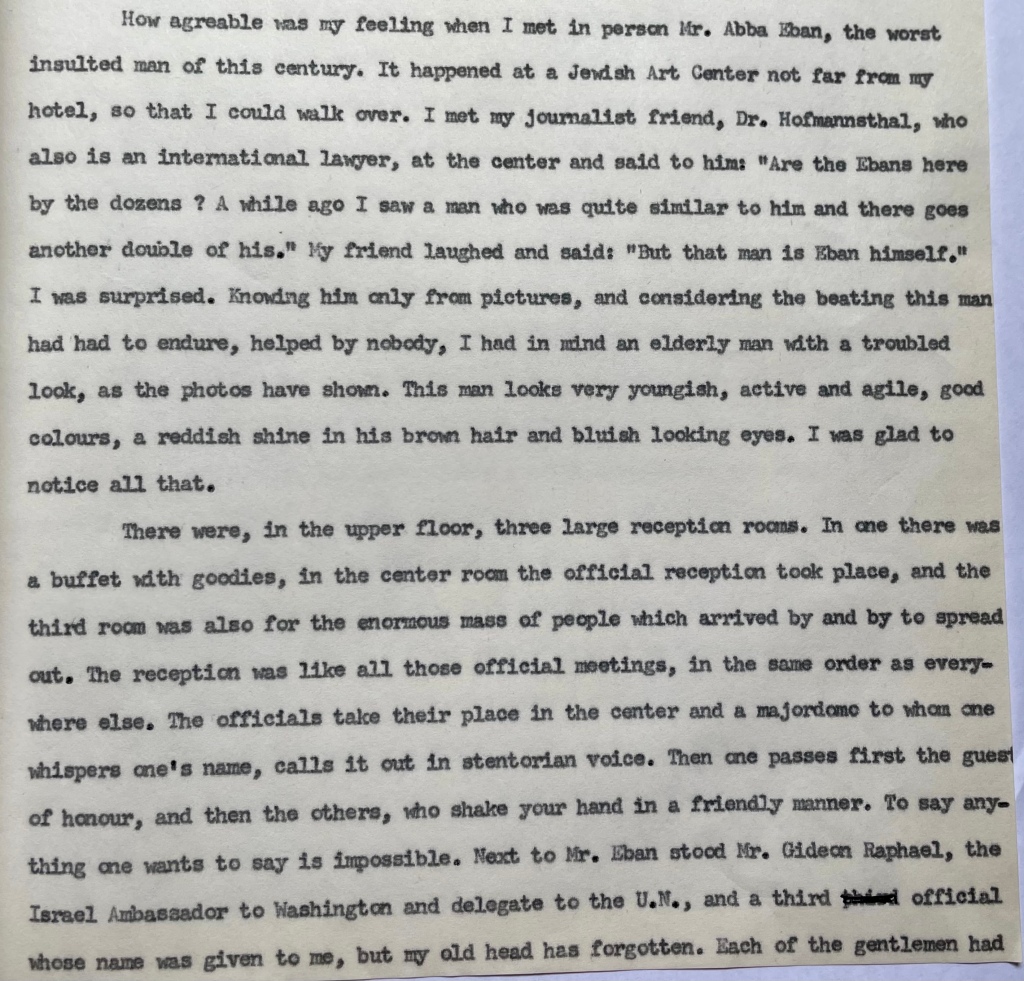
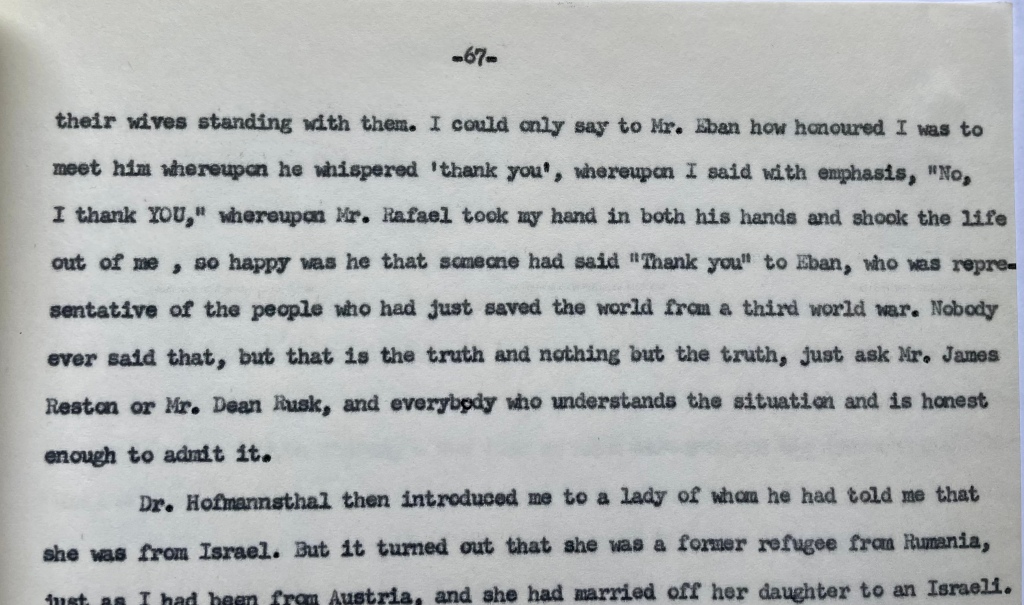
Emily Jane Rabey Holloway: April 4, 1857 – January 31,1937. Part 1: My Cornish great- grandmother.
Emily (Emilie) Jane Rabey was born in 1857, daughter to Emily Bawden and John Rabey, in Redruth, Cornwall, England. Her father was a copper and tin mining agent, who passed away during her childhood. It seems he had a grandmother with a Spanish name, Eleanor Manuel, which may account for her dark eyes and hair. The Cornish Celts are also connected to the French Celts from Bretagne (Brittany). Her family can be traced back to Cornwall for 300 years!
Emily Jane became a silk milliner (hat maker) and lived together with her siblings, her mother and her maternal grandmother, Paternal Bawden, in Redruth.
At age twenty-four, Emilie married William Holloway,, a 22 year old chemist in Redruth; he was originally from Wiltshire. His father, Richard Holloway, was an attorney who had moved to Redruth, Cornwall with his wife and children and set up his law practice. A cousin of mine sent me an interesting article written about him.
( You can find the link to this article in the comments following this blog post. )
The young married couple, William and Emilie, moved to Porthleven, a small fishing village on the coast, where William set up the first chemist’s shop in the town.
Below is a photo of William Holloway; I’m thinking Emilie, the silk milliner, must have made his smart bowler hat!
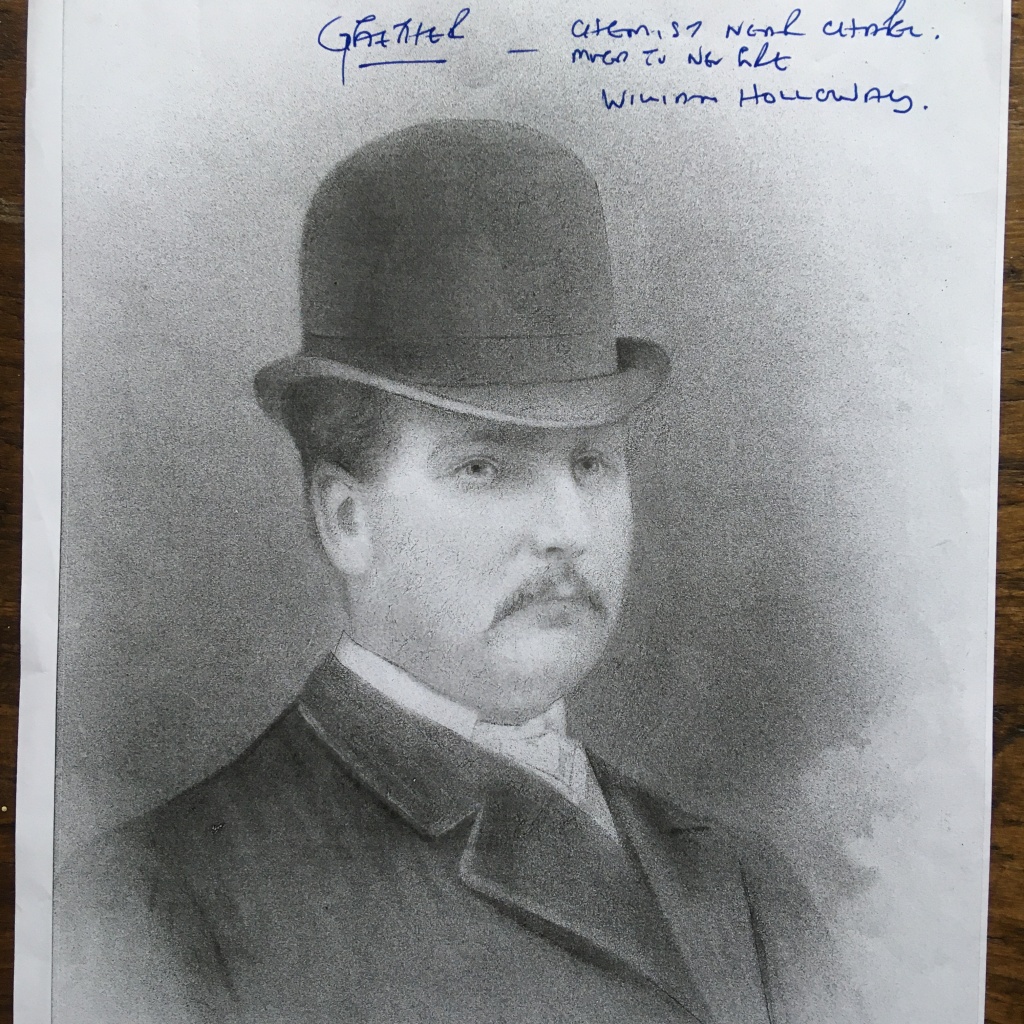
After six years running the chemist’s shop, William became the proprieter of the Commercial Hotel in 1889, a hotel right in the little harbour of Porthleven. He held the lease for the Commercial Hotel for ten years.
William and Emilie had seven children.
One twin ( Henry, brother to William Frank), had died at birth, and little Thomas, their sixth child, had died age two, in 1892, leaving two sons Frank and Claude, and three daughters, Peternal (my grandmother: the tear in the photo runs through her face), Lottie and Elsie. ( the tall girl in the apron is a househelper.)
Sadly, Emilie’s husband William died suddenly, at age 39, of a heart attack, and she was left widowed at the age of forty- two with five children.
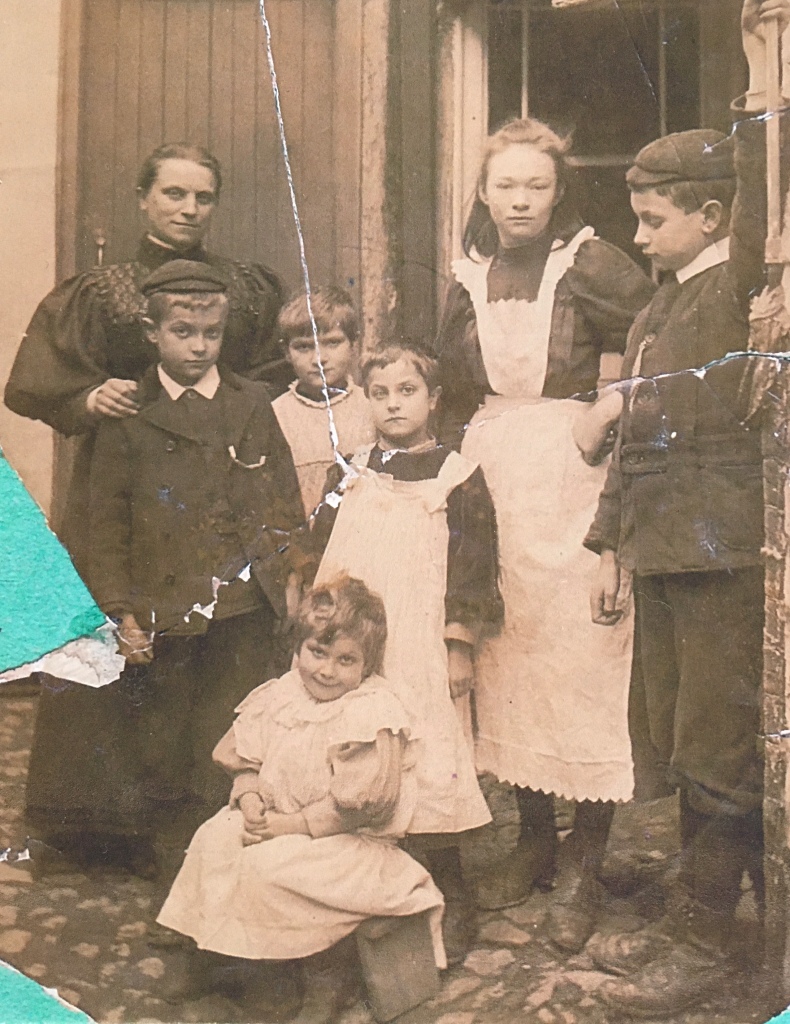
Emilie Jane Holloway and their five children: Claude, Peternal, Lottie, William, with youngest, Elsie sitting in front.
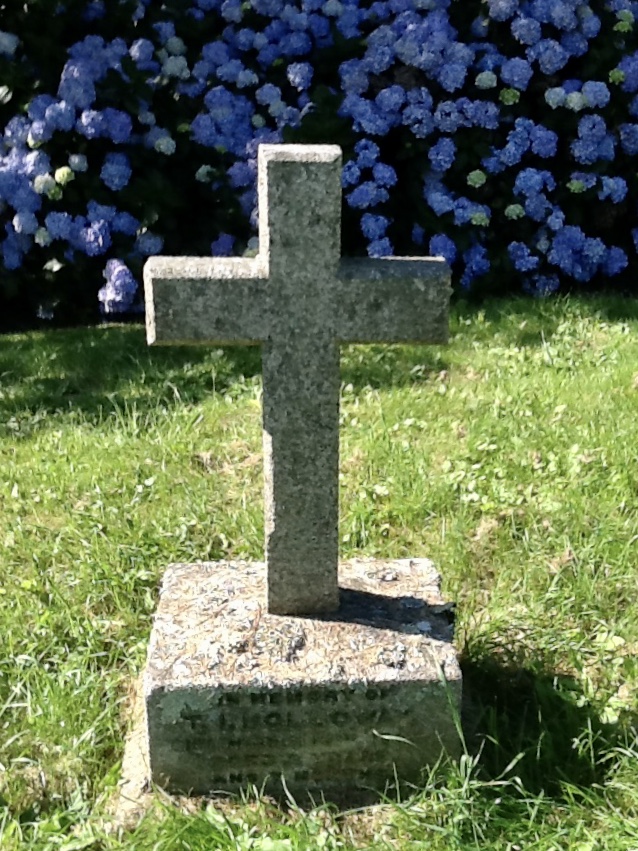
Little Thomas Holloway’s gravestone, Porthleven St. Bartholomew’s church graveyard.
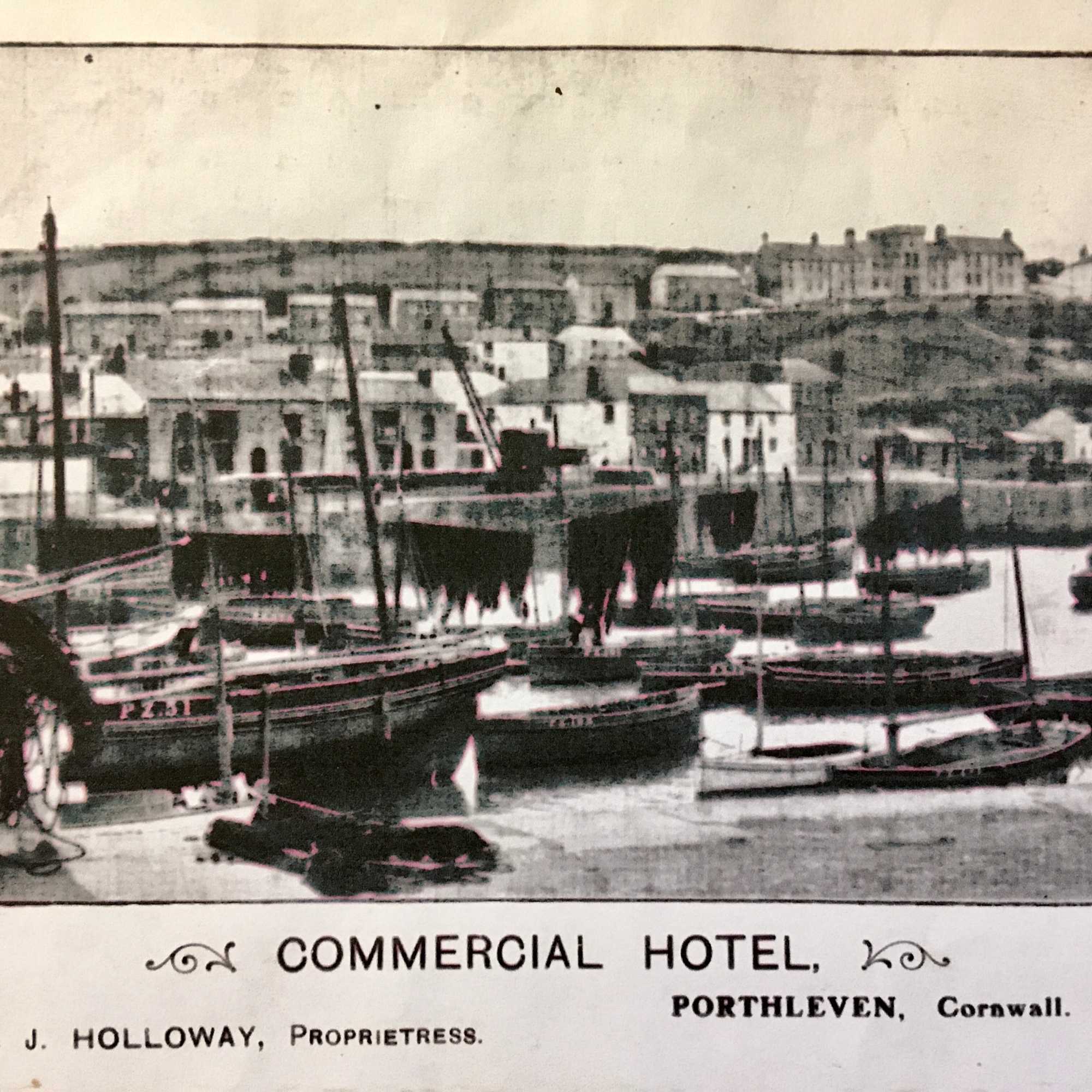
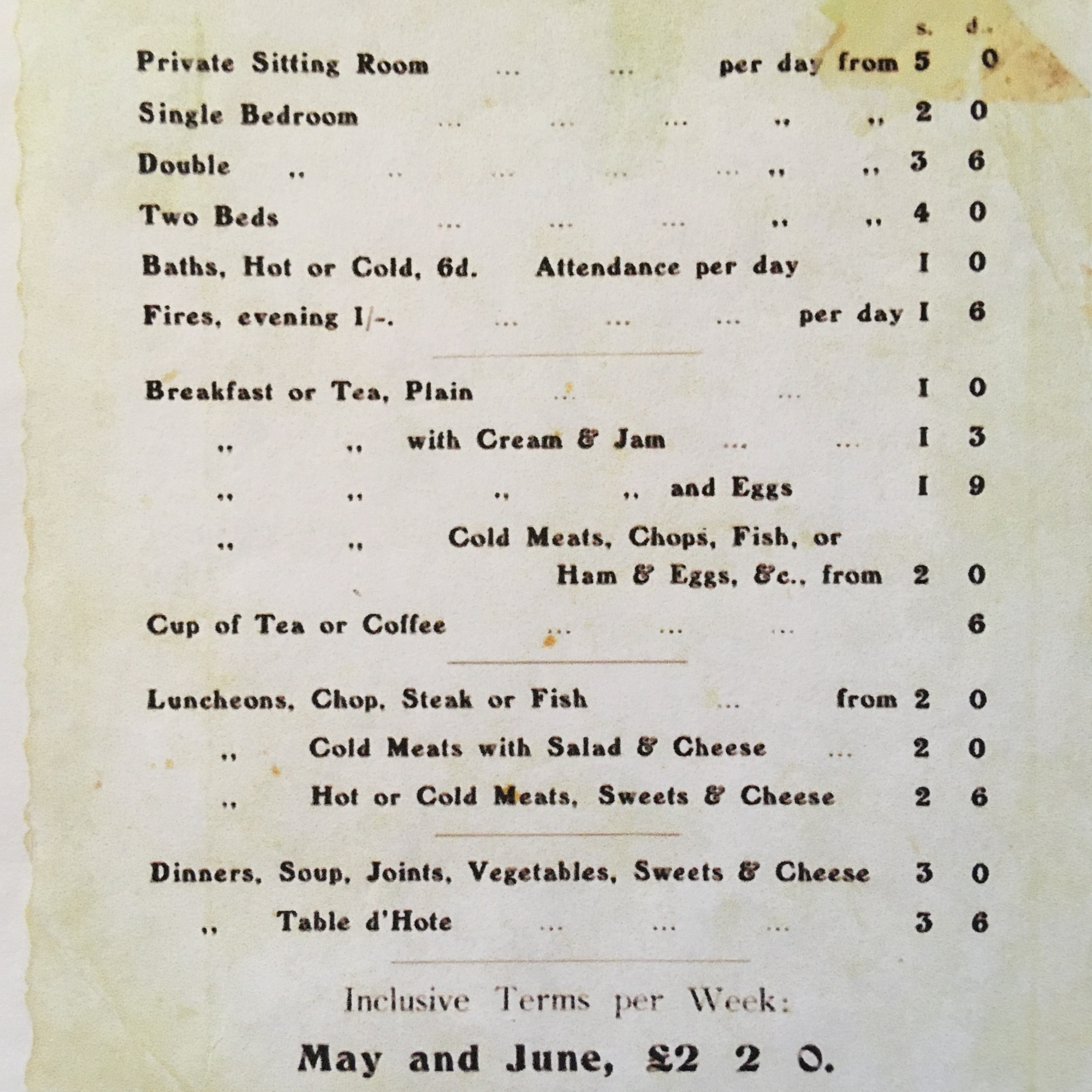
My great grandmother Mrs. Emily Holloway, continued on the lease of the hotel and became the Proprietress, from 1899 until 1913, when she retired. Check out the rates! She apparently was a no- nonsense woman; she had to be rather tough to deal with the pub customers, who were both local folk as well as visiting merchant seafarers. She was a member of the Conservative Party politically and followed the political news.
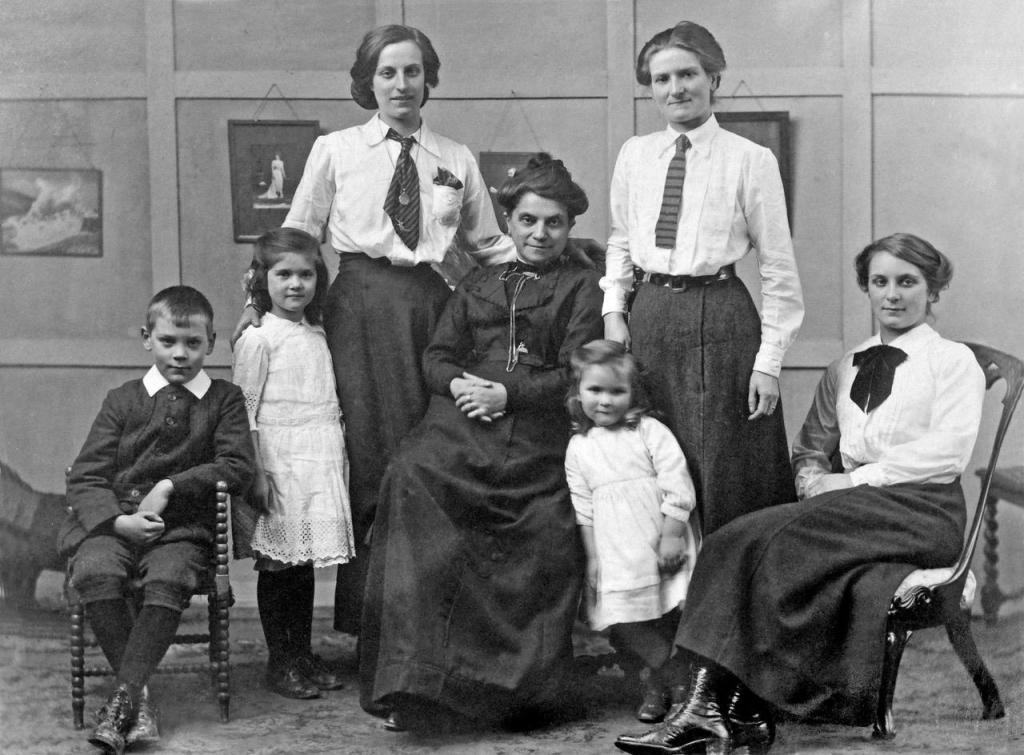
Emily Jane “Granny” Holloway with her three daughters, Lottie, Peternal and Elsie, and Peternal’s three children, Claude ( my father), and his younger sisters Mary and Betty.; ca 1914.
My Great Granny Holloway lived with her daughter Lottie on Belvedere Terrace during her later years. She died in 1937 and was laid to rest beside her husband William, and near her son Tommy, in the graveyard of St. Bartholomew’s.
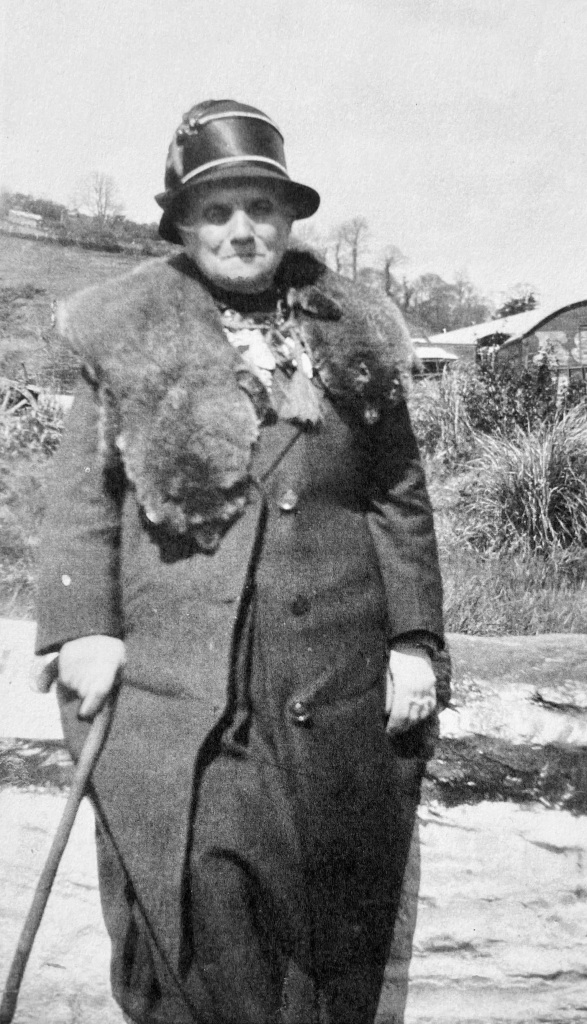
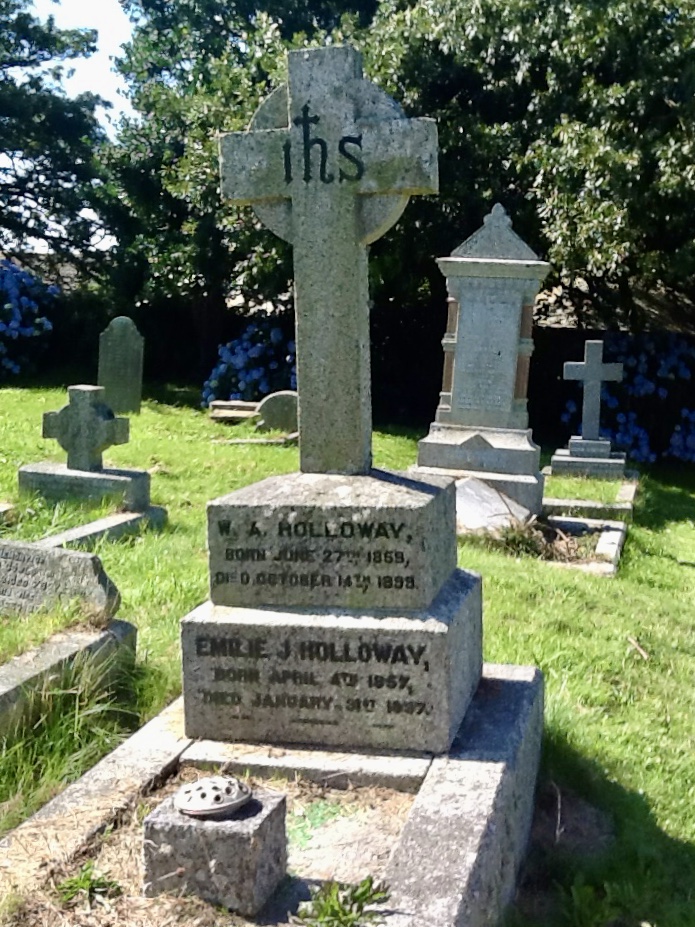
Emilie Jane Rabey ( Great Granny Holloway) in her later years. She lived into her 80th year!
My late cousin Alan Ziemann and my elderly cousin Pete (still living today, age 97), both children of my Great Aunt Elsie, showed me around the church and graveyard in 2013. Alan also gave me much of the family history i have recorded in this blogpost, when we visited in 2022. At that visit, we had a supper out at the Harbour Inn ( formerly the Commercial Hotel). I told the young bartender that my great- Gran had been the Proprietess about 100 years ago! See below.
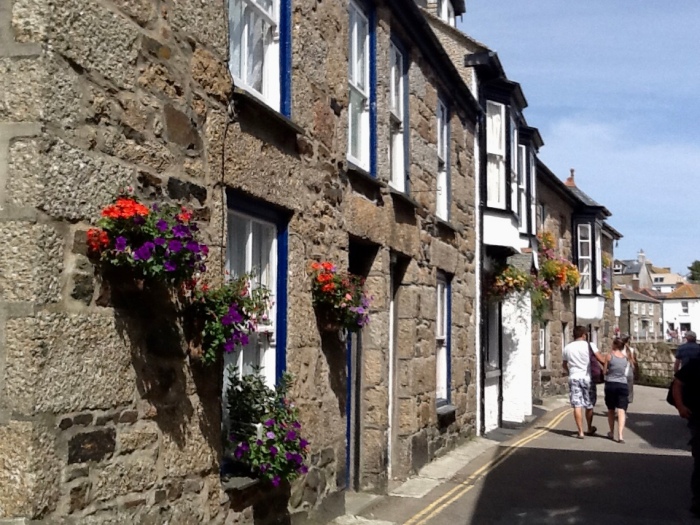
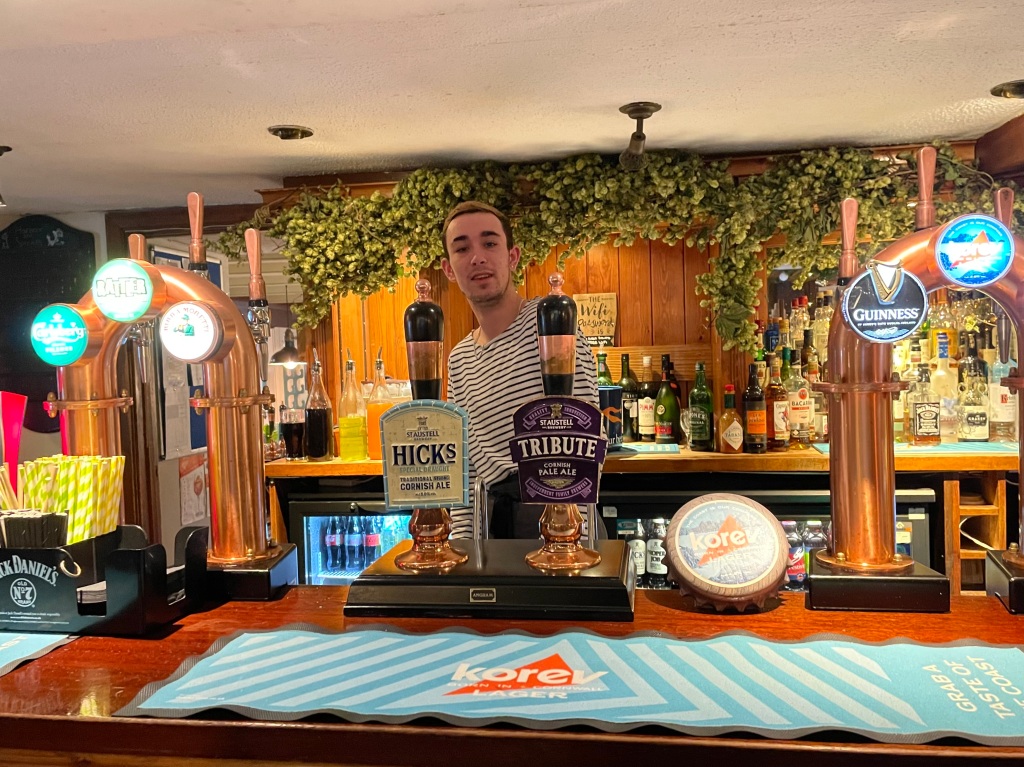
More stories of my Cornish Celtic family to come!
And to close, as I spent this afternoon playing violin ( which was passed down to me at age 11 by my Cornish father, and which I played in school and youth orchestras and chamber groups from age 11-18 ), and only in 2020, after a 44 year gap, picked it up again🎶🎻
I’ve found the link to some Cornish Celtic traditional music, including fiddles, banjo, guitar and wind instruments. Perhaps this type of entertainment graced the Commercial Hotel in Porthleven during my great grandmother’s day….it turns out this pub, the Barley Sheaf, is in Liskeard, where my cousin Rachel, my Aunt Mary’s granddaughter, lives presently!
And below, some more Cornish music with lovely photos of typical Cornwall scenery. Enjoy!
Amalya Malka Meisses Ashkenazy 1849 – 1935. Part 3: Her four grand-daughters.
In Parts 1&2 about my great- grandmother Amalya, I was able to pay tribute to the tragic loss of life in her family. These were very difficult, painful posts to write; they were not polished or literary; i just wanted my family members’ lives and stories to be remembered and honoured and to be accessible online. For various reasons, it took me several months to have the courage to take up my iPad again and continue to tell the story. ( There have meanwhile been many changes to the WordPress blog forum, rather confusing for me, but i think I managed to record the desired content!)
Now I want to write about some of the heroism in my family, and in particular, about Amalya’s grand- daughters, four cousins, four young women, aged 15, 16, 18 and 20, who, along with their parents’ encouragement, ensured that there are descendants of Nathan and Amalya Aszkanazy living today!
This year, I have had the immense and unexpected privilege of “meeting” and speaking via media with a cousin on the westcoast of USA, having a first time email exchange with another cousin whose family lives on the east coast of the USA, and have continued some correspondence with cousins in Europe and Israel. These cousins have children and some have grandchildren, so the family line and stories continue!
All these cousins (whom I will not name for privacy reasons), along with myself and my two brothers, have the same great- grandmother, Amalya Malka Meisses Ashkenazy! Until two years ago, our generation did not even know that we had each other….cousins from this branch of the family!!
Deep gratitude goes again to my niece Kathy Simpkins who tirelessly researched my grandfather Szymon Aszkanaszy’s family – following up a couple of small clues gleaned from my Granny’s memoir, and also to Yad Vashem for their constantly expanding data- base records and to my newly found cousins, who either in person, or through email, kindly shared with me stories and photos from their precious memories and photo collections.
Our grandfather Szymon was an older brother ( by 12 years) to their grandmother Roszalia, the youngest child of the five: Nachim, Szymon, Paula, Joszef, Roszalia.
Our mother Lore, and out Aunt Lisl were therefore, first cousins to their mothers, Martha and Elizza.
Apparently, the four girl teenage cousins knew and visited each other during their childhood and teen years in Wien, until the shocking end of their way of life on March 12, 1938, when Nazi troops marched into Vienna.
Martha ( Mausy) and Elizza ( Litsa) and their parents, Roszalia and Max.
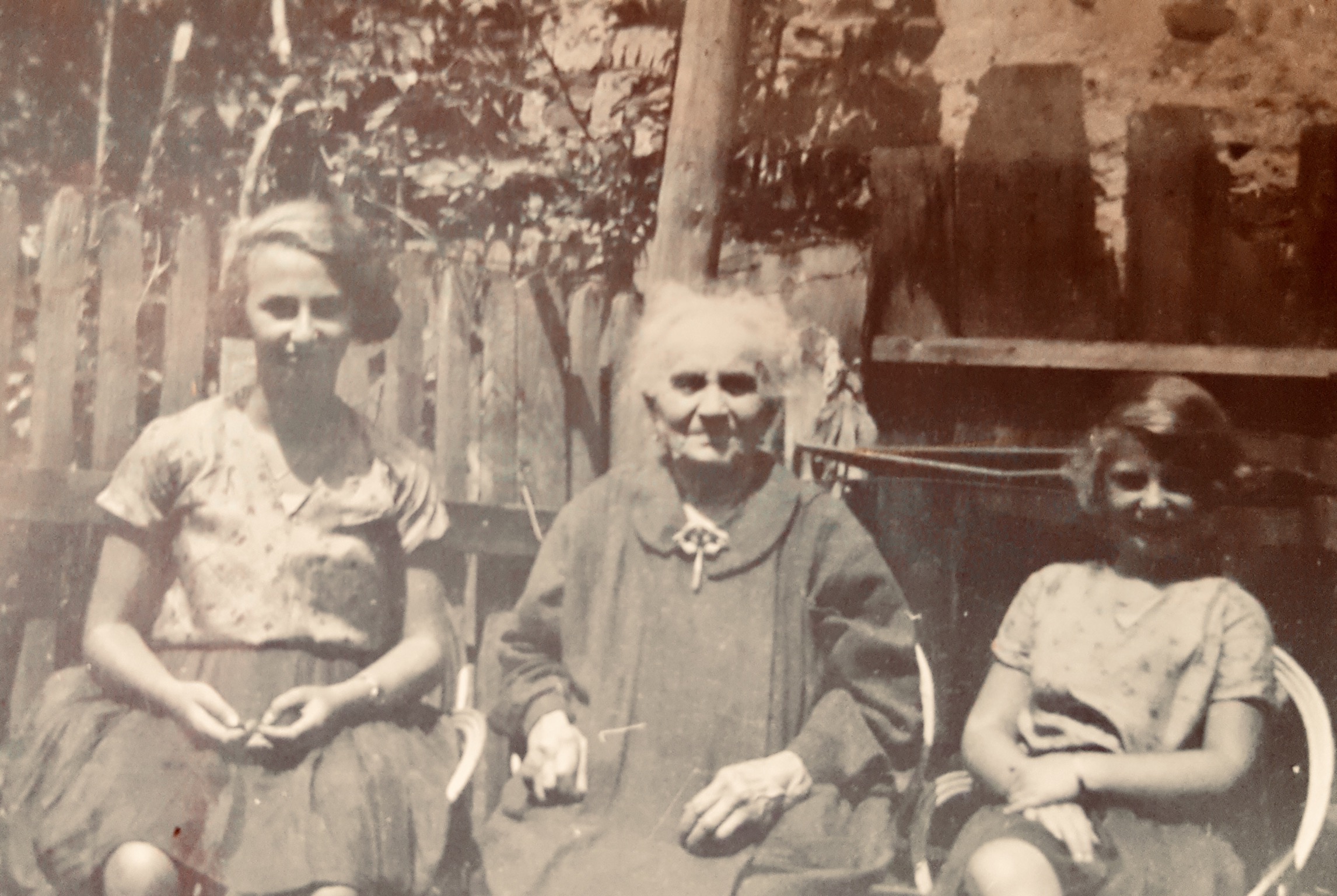
Martha and Elizza visiting their Grandmother, Amalya in Sanok, Galicia, Poland. Apparently, they visited the Sanok family regularly in the summers.
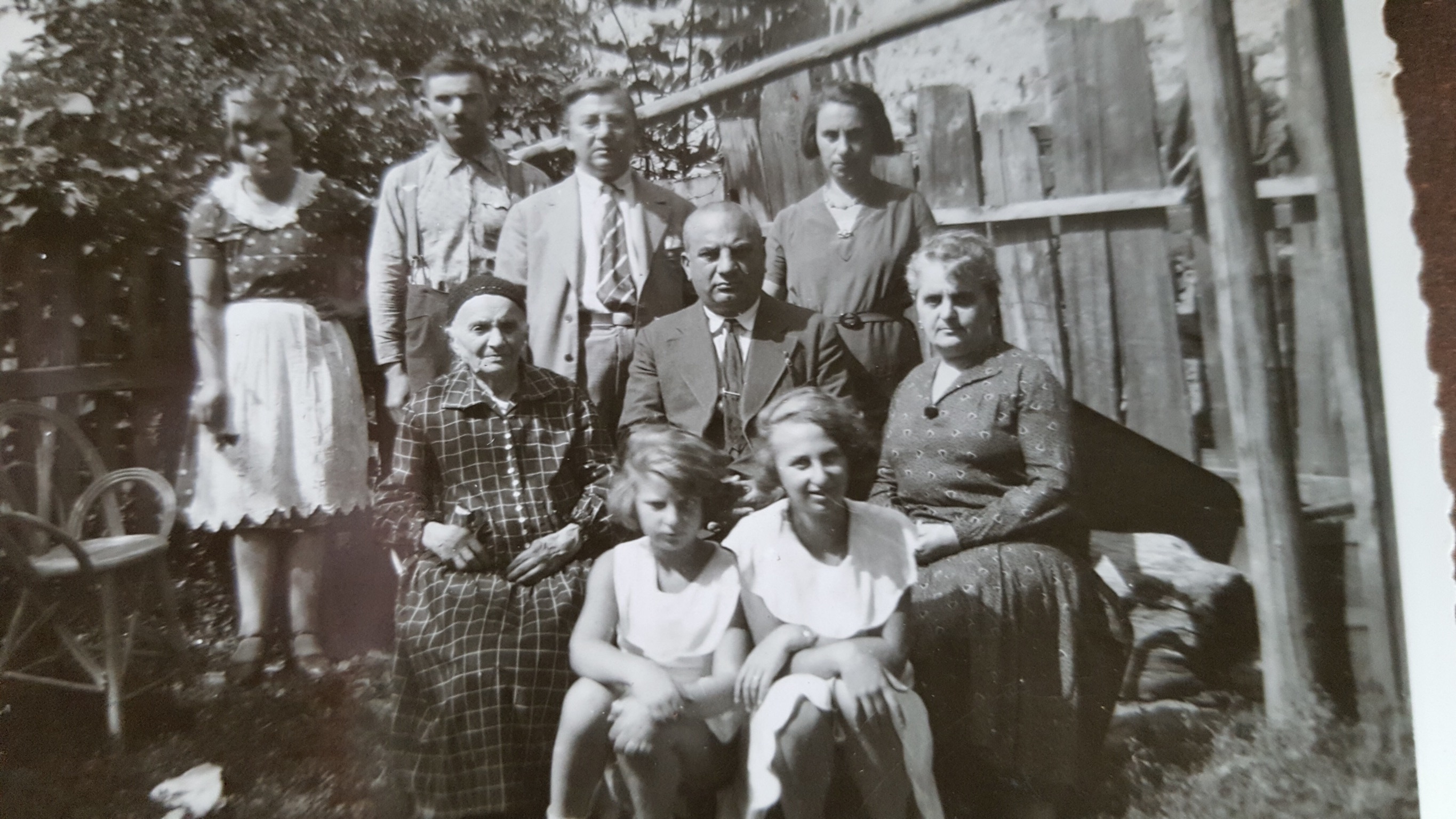 Amalya with Joszef, her third son, and wife, who ran the family hotel in Sanok, Roszalia’s family and other local relatives.
Amalya with Joszef, her third son, and wife, who ran the family hotel in Sanok, Roszalia’s family and other local relatives.
Meanwhile, my grandparents, Simon and Anna had bought and renovated a country home in a small town, Altenmarkt an der Triesting, in 1923.
Anna and Simon had really suffered, along with much of Europe, from the famine at the end of WW1. (Anna had actually survived Spanish flu that same year, 1918, when they lived in Budapest, while she was a newly wed, and became pregnant only a few months later).
After they fled from Horthy’s regime in Hungary and slowly became established in Vienna, they wanted to have a country home where they could grow fruit and vegetables and raise chickens and goats in case of another famine. My Granny Anna was an active eco- feminist, so this also made sense.
They were very aware that the next war would likely be fought, not in trenches, but from the air, and they wanted their family to have a safe place to flee to, away from the city of Vienna (a more likely bombing target), where they lived in an apartment.
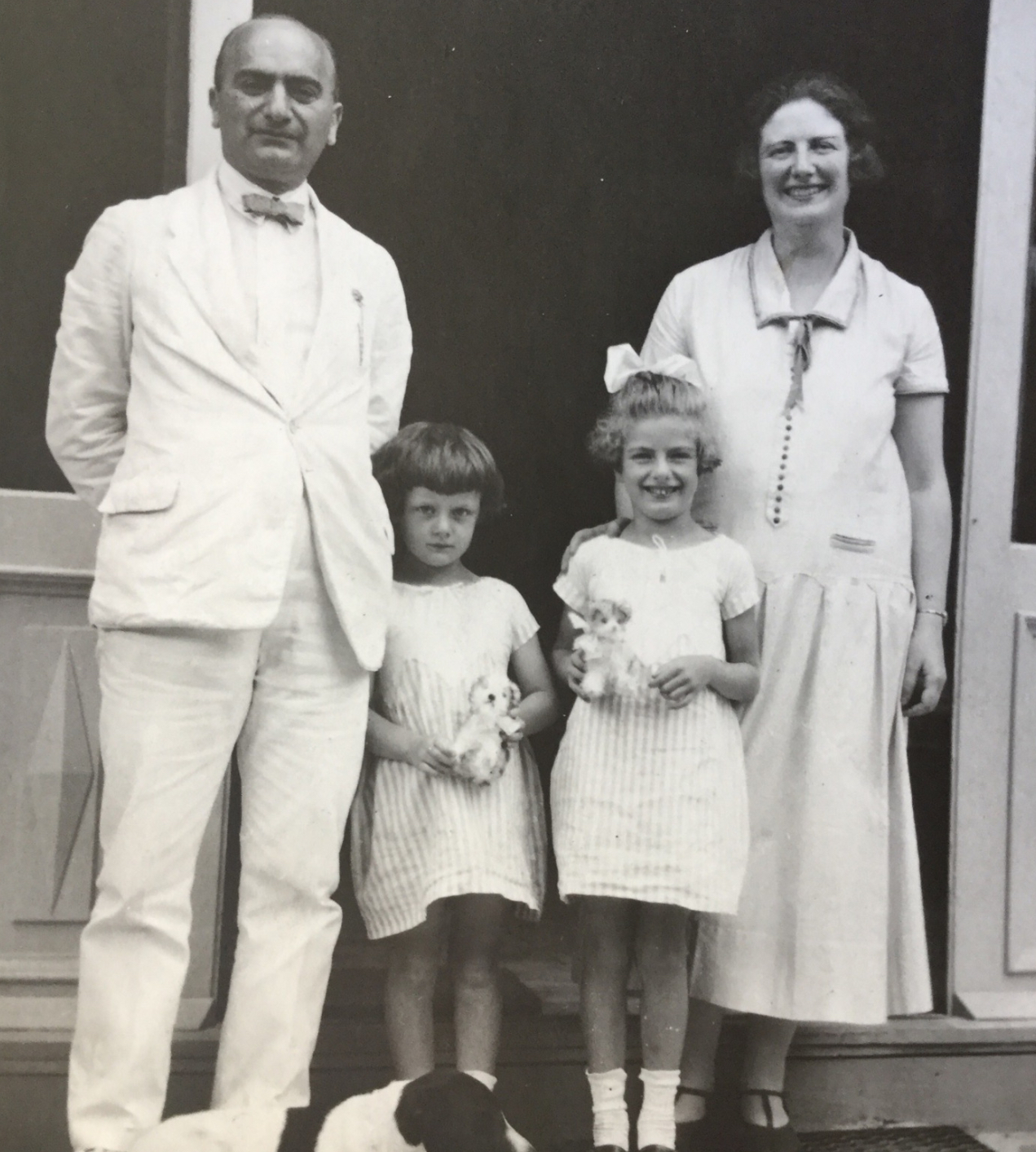 Simon and Anna with daughters, Lisl and Lore, and Harry the dog. Altenmarkt, 1927.
Simon and Anna with daughters, Lisl and Lore, and Harry the dog. Altenmarkt, 1927.
The lives of these two families changed drastically on March 12, 1938, when Nazi troops marched into Vienna, the start of the Anschluss. Earlier that very day, Anna had been on the streets with fellow members of the Call Club, a women’s group that held lectures on political education and involvement. They were busy distributing pamphlets which encouraged a public referendum to be held on the question as to whether Austria should be annexed to The Reich. Only later that afternoon they heard that their Prime Minister Schusschnigg had already met with Hitler in “The Eagle’s Nest” and agreed to let him in; that evening the Nazis marched in. ( Hitler himself arrived two days later and on Monday 15th, held a huge rally in the Heldenplatz, in central Vienna, attended by 200,000 people.)
That Friday night, March 12th, Simon [“Wolf”] returned from business in Zurich at 11 PM. Anna and their two daughters met him at the train station, told him the frightening circumstances, and were ready to get right on the train then.
“But I just came back from there. I’m dead tired. Tonight those bandits have better things to do than to try and burglarize us. Let’s go home and sleep. Tomorrow we’ll decide what to do.”
So we drove home. I told the children they should sleep and at six in the morning we would decide what to do. Wolf and I couldn’t sleep, however. In desperation, we discussed the wildest plans. Wolf thought we should go to Altenmarkt first and await developments. I suggested Berlin because the Nazis would be concentrating on Austria, and we wouldn’t be noticed in Berlin. It was all crazy, but we couldn’t think straight anymore. Wolf said he wasn’t going to leave our home and all its art treasures to this rabble. I sat up and reminded him of what his friend, the Russian Professor Klitscheff had repeatedly told him in Belgrade about his own escape from the Bolsheviks and how he had had admonished Wolf to not allow himself to be distracted by his belongings when the subhuman scum flowed into Austria. “Whoever tried to save what he owned, perished,” Klitscheff had said.
Wolf nodded, but said, “That rabble will go after others first, and by the time they get around to us, we will be long gone.”
I was so terribly overtired that my head and my eyes hurt. Very quietly I said, “I’m afraid. These animals are mad. And the children: we can’t put the children in danger.”
He finally saw the light and gave in and agreed that we would leave in the morning. But where to? We couldn’t agree. He maintained again that we should go to Altenmarkt first.
We hadn’t slept a wink when at six a.m. the children came in.
“Where are we going” Lisl asked.
“Paps says we should go to Altenmarkt first.”
Lisl stamped her foot. “I don’t want to go to Altenmarkt, I want to go to Switzerland.”
“Me too,” Lori echoed.
“Okay,” I said. “If you want to go Switzerland that’s fine with me. We’ll go to Switzerland. The train leaves at eight o’clock. Pack your things. Take only what’s absolutely necessary. And get dressed now.”
Wolf went along with this. I called to the children and told them the authorities might not let us through the border, in which case we would have to cross the mountains on foot, so they shouldn’t pack more than they could carry. I took nothing but silly things: a few valuable handbags, but also even sillier things: I must have lost my senses and I didn’t even notice in my exhaustion that Wolf was not packing anything. His two small suitcases still stood there unopened from the night before.
Our old cook came. She had made coffee, but I have completely forgotten if we had breakfast or not. All I can remember is walking down the narrow corridor from the bedroom to the entrance hall. There I saw my brown pony fur wrap from Hartwich hanging on the hook. I looked at it and said, “What’s the use of carrying furs. It’ll be warm.”
Behind me I heard Lori half cry out in anger. She took the fur wrap from its hook and I took it along. And so I still have it!
Crazy Boleslav Kokoschka’s poor manuscript still lay on the table in the front hallway. I entrusted the cook to pass it on to the building manager and that I would write to that crazy Kokoschka that he could pick it up there. Then we went to the elevator. I still hoped that the manager’s family wouldn’t see us, but they were in the hallway sweeping on the way out, and I mumbled that we were going to our estate in Altenmarkt. Some taxis were nearby in Neulingstrasse when we got downstairs and we hailed them and the driver had to hoist our suitcases on the roof because there were four of us. It was very uncomfortable because everybody could see that we were leaving, fleeing.
But despite the fact that it was a work day morning—it was Saturday, seven- thirty—and despite the fact that our route took us all the way from the third to the sixth district where the Westbahnhof was, we saw almost no people in the streets. Vienna was as deserted now as it had been full of people the day before. We didn’t speak at all. We were dumbstruck, half dead from fear, exhaustion and shame. I felt as though I had personally lost the war. I had fought hard and now I had to take a humiliating retreat—from a band of crooks! They were mean, cowardly and disgusting, and for us all was lost. Had it not been for the children I think I would have killed myself. But if I had done that, I would have “taken one of them with me.” Who? Franz von Papen, of course. He was the meanest of the bunch.
When we arrived, the Westbahnhof was empty. We hardly saw any rail employees. Nobody was at the ticket booth. Wolf went to get tickets and came back and gave me three.
“Three?” I asked. “Where’s yours?”
“I’m not going to leave our household to those bandits. I’m not afraid. You go with the children, that’s the main thing. I’ll follow later with all our things.”
Speechless I stood there, my mind racing. “But we decided, all four of us….”
The children clung to him, but he said: “It’s late. You have to go. The train will leave any minute.”
I embraced him without a word and kissed him. He was unshaven and looked dishevelled, pale, sick. “Come with us,” I said in a barely audible voice.
“It’s okay, Mumilim. Have a safe journey.” And with that he led us to the carriage.
We boarded. Two ladies were in the compartment with us and when the train began to move we waved to Paps, who looked strangely small and shrunken standing there on the platform waving tiredly back at us.
When the train left the station I sat down and didn’t look out the window anymore. I was finished with Vienna.” – excerpt from Book 3.9 of memoir.
During the terrifying, 8-10 hour trainride on March 13, 1938, Lisl admonished her mother to smile and look cheerful, and to eat, so that they would not look like people fleeing! Anna wore some diamond jewelry: that was all they could bring out!
At a few stops, several Jews were violently pulled off the train. My family’s less stereotyped “Jewish features” probably helped to save them, as well as Lisl’s constant reminders!

They don’t exactly look like refugees, but here they are, actually three months after their flight from Vienna, in June, 1938 – when they came back to Switzerland briefly from London, England, to make sure their grandmother Malvine got out of Vienna). Granny also took the opportunity to call a WOWO meeting in Geneva- as the timing co-incided with the infamous Evian conference, where, of 32 western nations, all but the Dominican Republic refused to increase their quota of Jewish refugees – even in the face of the known impending tragedy. They sent Irene Harand to speak for them. Her pleas fell on deaf ears.
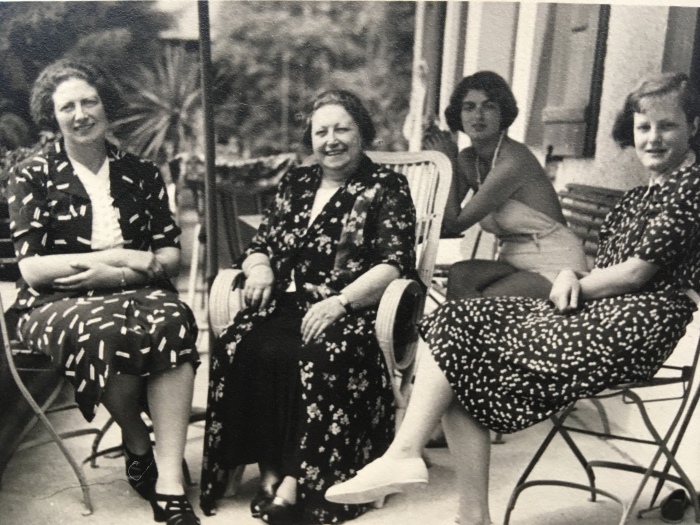
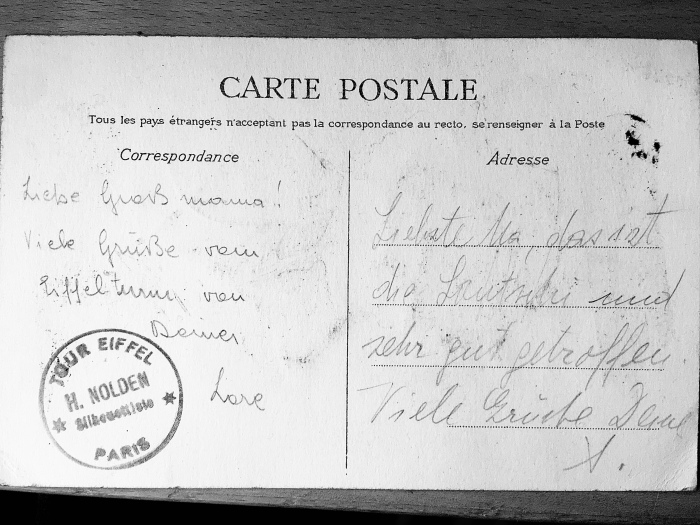
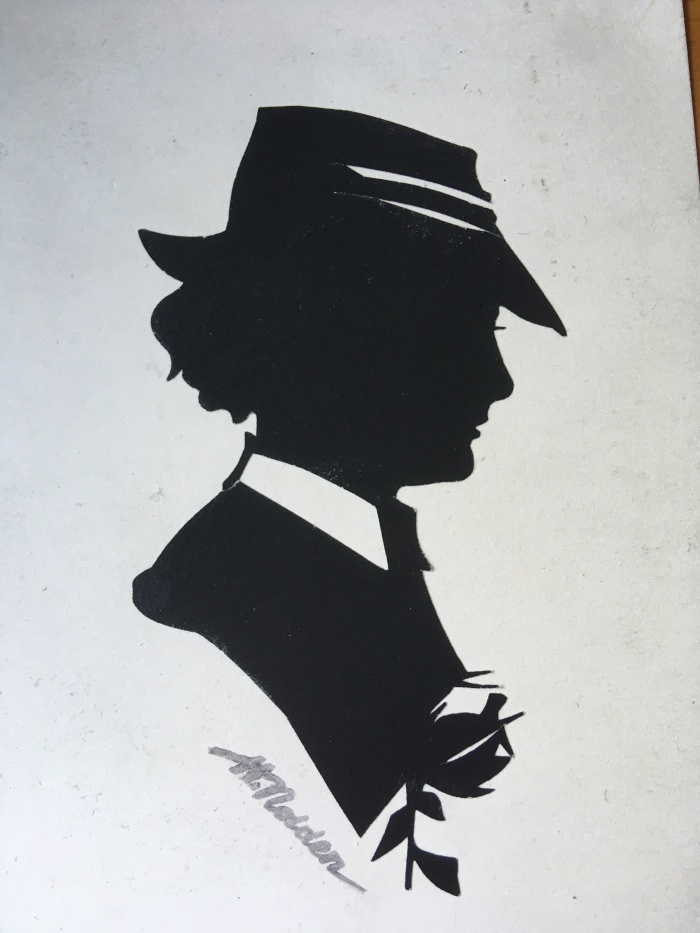
They stopped in Paris on their way to England, to help arrange a visa for one of Anna’s brothers. While there, they had their silhouettes painted and sent postcards to their grandmother Malvine Mahler, back in Vienna. Malvine, who initially responded to her sons’ encouragement to flee with : “Why should I leave Wien? I have done nothing wrong!” was later persuaded to flee to Switzerland as well, age 82, and was brought to Canada by her son Frederick in July 1939. She died in 1940, and is buried in Holy Blossom Memorial Garden in Scarborough, Ontario, close by the grave of her fourth son, Frederick Mahler ( d.1958), and as of 2017, they are joined by grand- daughter/ niece, Elizabeth Aszkanazy.
These tiny postcards were obviously precious to Malvine, and she saved them; they made their way into a photo album put together by my mother. Only a few months ago, I took these little photos out of the album and noticed that they were actually postcards with writing on the back – brief notes from Lisl, Lore and Anna to their “Grossmama” and “Ma” – on their flight to safety!
And now for some of the story of Roszalia’s family, as I recall from oral narrative and copy from email, by her grandson.
“Your grandfather Szymon Aszkenazy (also written Aschkenasi, Aszkenasi) was as you mentioned arrested and tortured to death by the Gestapo.
My grandfather, Markus Zuckerberg, was also arrested and detained for interrogation only my mother went to Gestapo headquarters and spent three days there demanding he be released. They actually let him go and my mother put him on a train to Zurich, leaving my mother, her sister Martha Josephine, and grandmother (Rozsia (Rosa) Zuckerberg (Aszkenazy) – Szymon’s younger sister — behind in Vienna.
The police came back a couple of days later, seized their passports, and said something like “Since you did such a good job of getting your father out, you can come and pick up your uncle.”
My grandmother was too frightened to go, so my mother went. They took her to the morgue and she told me that when she saw the condition Szymon’s body was in and the marks on his neck, she knew that they had strangled him. She buried him in the Zentralfriedhof in Vienna. I have the row and number of his grave and will get it for you, unless you already have it.
She told me he made a fatal mistake by staying on to try to pack up his possessions and that his wife and daughters, Liese and Lori, had emigrated to Canada and were living in Vancouver but didn’t have any more information.
To answer your questions, Joseph was beaten to death by Ukrainians in Sanok according to information we got.Paula died from TB. My grandmother, mother and aunt went first to Germany because they didn’t need to have passports and they thought it would be safer. After the Kristalnacht, they went to the border and swam across Lake Constance at night but were arrested by a Swiss border patrol, imprisoned in Kreuzlingen for a week, then sent back to Germany and detained there, then released. After that, they went back to a different section on the border and crossed into Switzerland at night and managed to contact my grandfather in Zurich. He was able to get them a 24 hour transit visa, only they couldn’t leave because the German consulate refused to issue them a passport for 2 years. As soon as they got the passports, the Swiss ordered them to leave and they went to France, Spain and finally Lisbon where they were able to obtain a visa for the U.S.” ( from email)
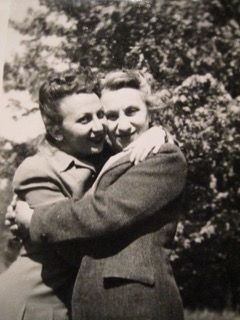

One final very recent addition to this story of these true life events from my family: a large diamond from one of my Granny’s brooches, which travelled out of Vienna under the nose of the Nazis, was recently chosen by our son Timothy Roosma, a great- great grandson of Amalya Aszkanazy, to be reset beautifully into an engagement ring for his chosen life- partner, Erika DyNing ❣️ What happy and good news!!

I am so very thankful to these four grand- daughters of my great grandmother, Amalya Malka Meisses Ashkanaszy, for their recognition of danger, and for their courage and strength in choosing to leave all behind and escape from life- threatening circumstances.
For Lisl, age 18, who stamped her foot and chose flight to Switzerland over staying in Austria; for her younger sister, our then 16 year old mother who said: “ Me too!”. The day before, Lore was a high- achieving highschool student at Kundmanngasse Gymnasium!
Last year, April 2019, that very school had a commemoration to all the Jewish children who fled or were expelled in the wake of the Anschluss. My mother’s school record ( below), which shows she did not return to school after March 12, 1938, was apparently the start of the project, initiated by a young history teacher, who found me and my brothers online ( yay Google!) and contacted us! Here’s a link to the commemoration event photos, and a link to an article about it in the Times of Israel. We also were sent hardcopy booklets, which featured a twopage article about my mother and her family, researched and written by a Grade 12 student at the school, Mary Yin.
Three new friends in Vienna, whom i met in 2018 when our family laid a memory stone by our family apartment, attended this event at the highschool. One sent me two hard copies of the booklet of articles written. The others kindly sent photos.
https://drive.google.com/drive/folders/1fn4tZUZQ8K4R0MBcoUFgedm-_narAbAX
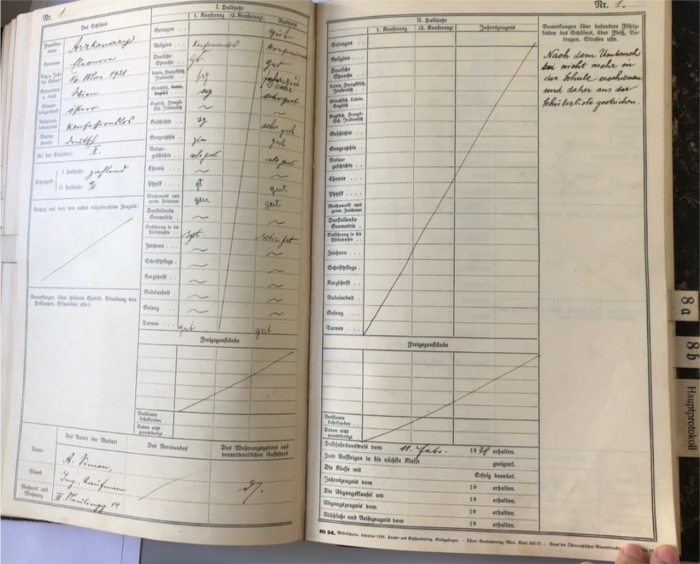

I am so very thankful for the toughness of young Litsa Zuckerberg, who marched down to the Gestapo headquarters in Vienna, demanding her father’s release; for the swimming abilities of Roszalia, Martha and Elizza and their risk- taking and endurance in the face of life- threatening brutality and evil, to attempt escape again, and to succeed, with the help of kind people they met.
Of course, the trauma of these events left it’s mark in each survivor in a unique way; and some trauma has been passed on through the generations, again in a unique form, and it falls to each of us descendants to process in our chosen way.
Although there were some inevitable painful family disagreements and separations, I am so very thankful for the examples of family commitment to care for one another in their totally new surroundings.
I am so very thankful for my Granny Anna’s example to continue to help others with her time and money, once she arrived safely in Canada.
May Amalya’s descendants continue to choose life, and to be open-minded and of service to others.
